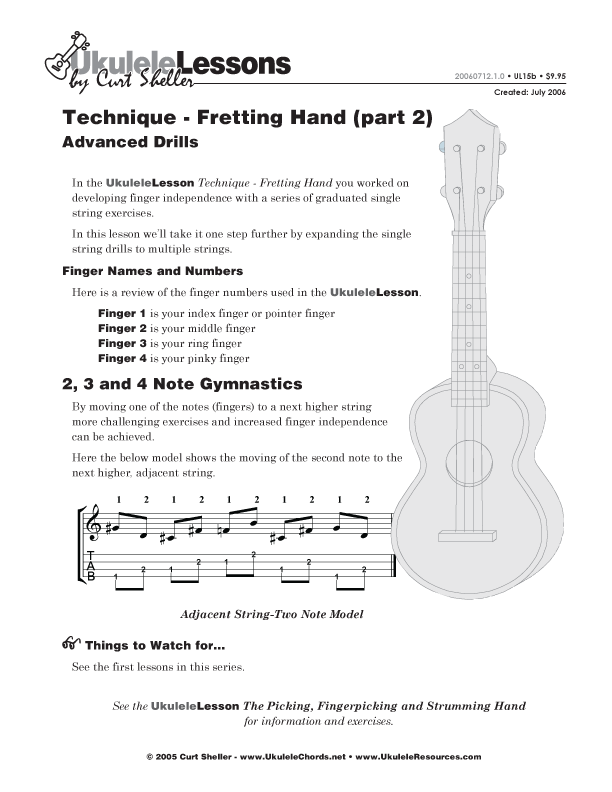
To develop strong and independent left hand technique these series of graduated drills or finger gymnastics will increase your the comfort zone of usable technique. This lesson expands basic single string drills using multiple strings.
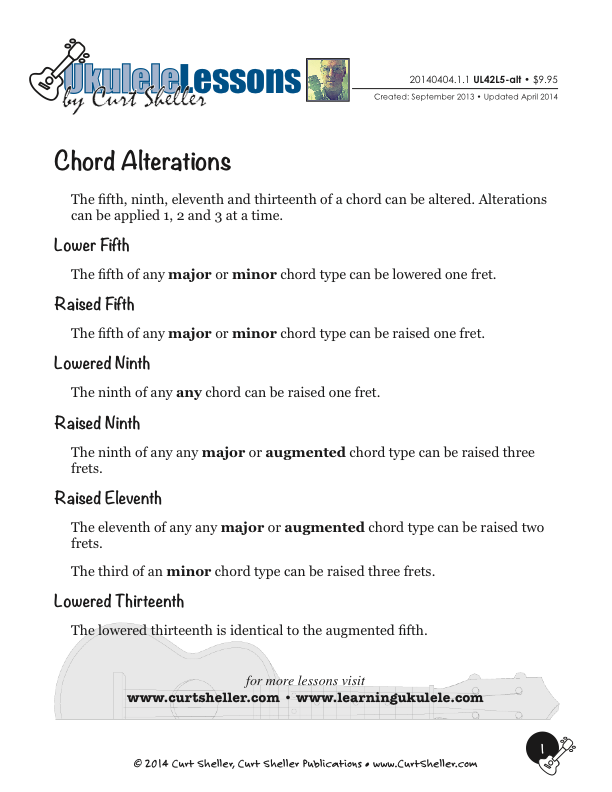
Beyond basic open position chords, basic movable form chords, and a core set of 4-part chords. There are just too many chords shapes too memorize. Learning the principles of how chords are constructed and the ukulele fingerboard are the way to go. You can then create more advanced chords like 9#11, 7#5-9, 13b5, 7+9 on the fly as needed from your core set of chords.
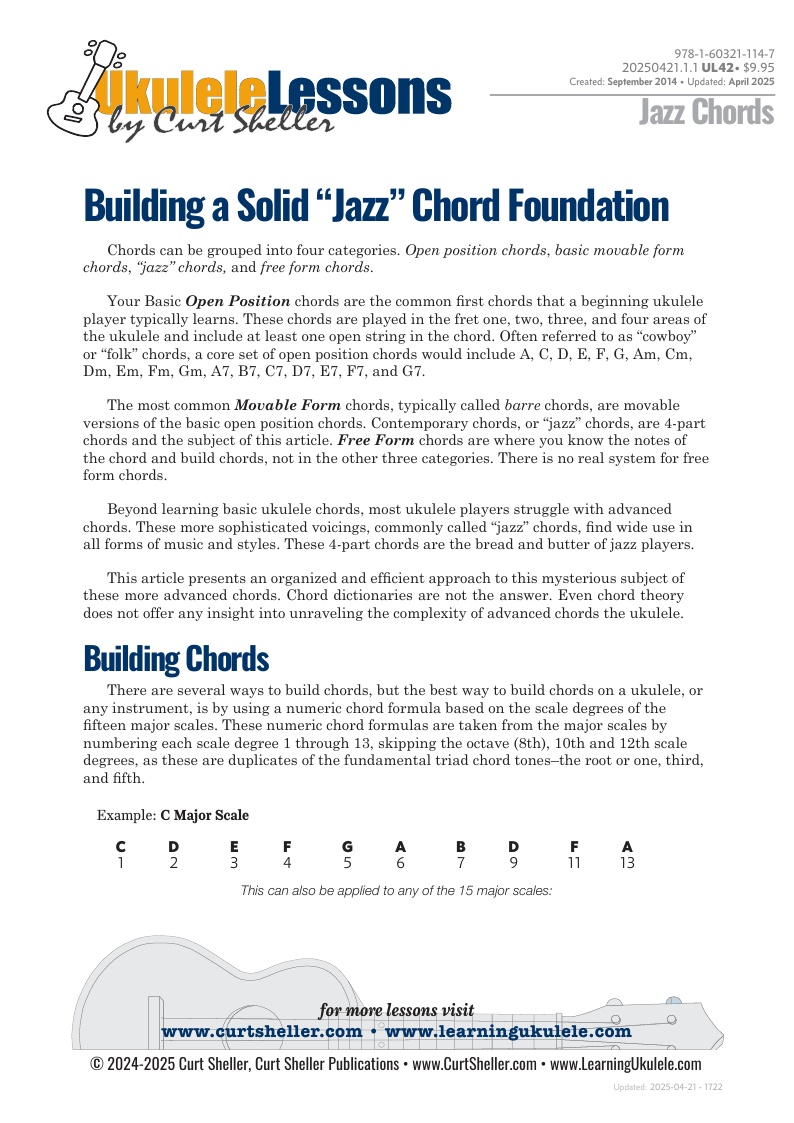
Commonly called "Jazz Chords", these more sophisticated, contemporary chord voicings find their way into a wide variety of music forms and styles. This lesson is the first on the series that builds your core foundation for these chords.
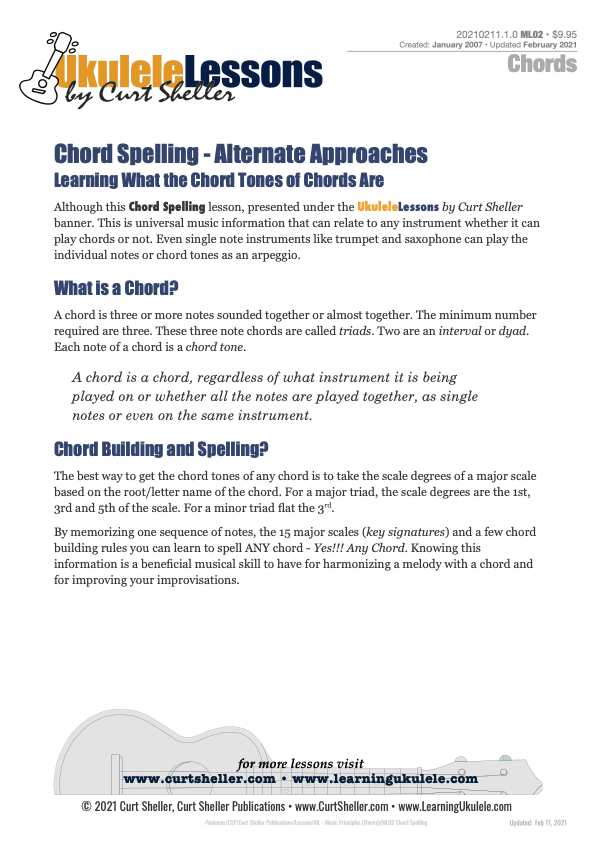
An alternate approach to determining the chord tones of any chord. Bottom-line is, it's the notes that make the chord, not the shape. A C chord is C, E, G - NOT this or that shape.
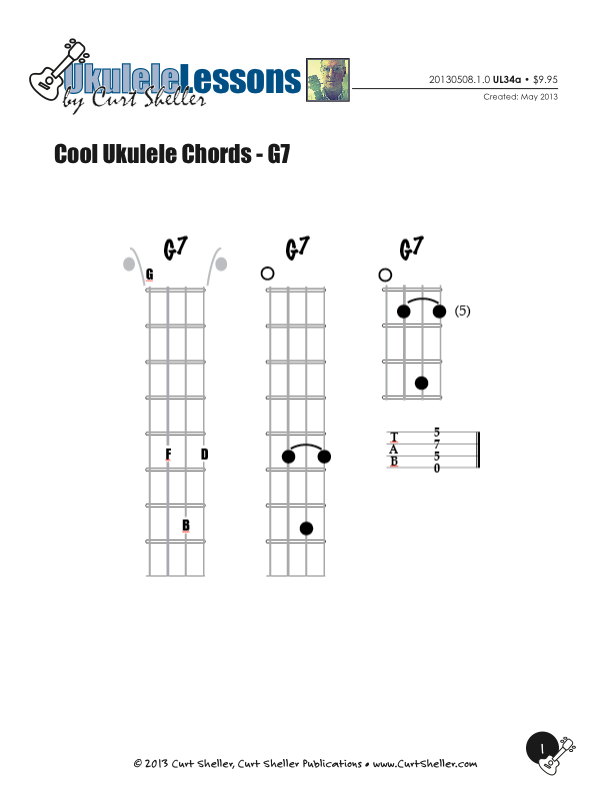
A non-traditional fingering for the G7 chord using the knowledge that the notes of a G7 chord are: G B D F.
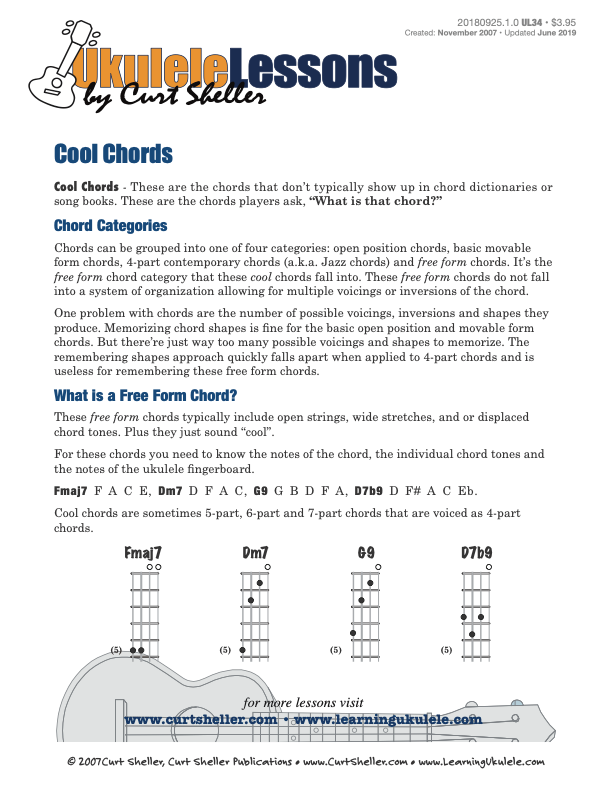
Cool Chords - These are the chords do not typically show up in chord dictionaries or song books. These are the chords players ask, "What is that chord?"
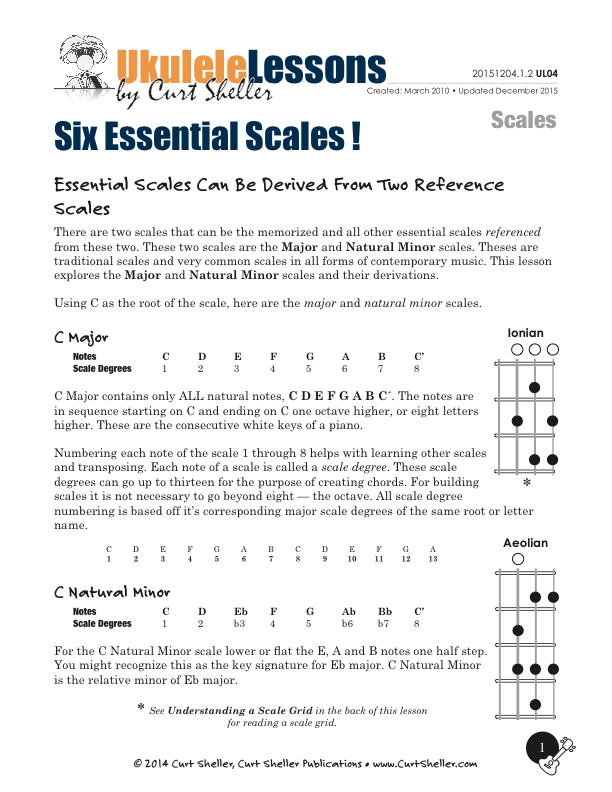
The six essential scales are: Blues Major Pentatonic Mixolydian Dorian Aeolian and Ionian From the six essential scales, you can get through a wide variety of traditional and contemporary music. A scale is simply a collection of pitches or notes, not really a "this is a Jazz scale", "this is a Blues" or "this is a Rock scale". It's how a scale is used that really matters not its name.
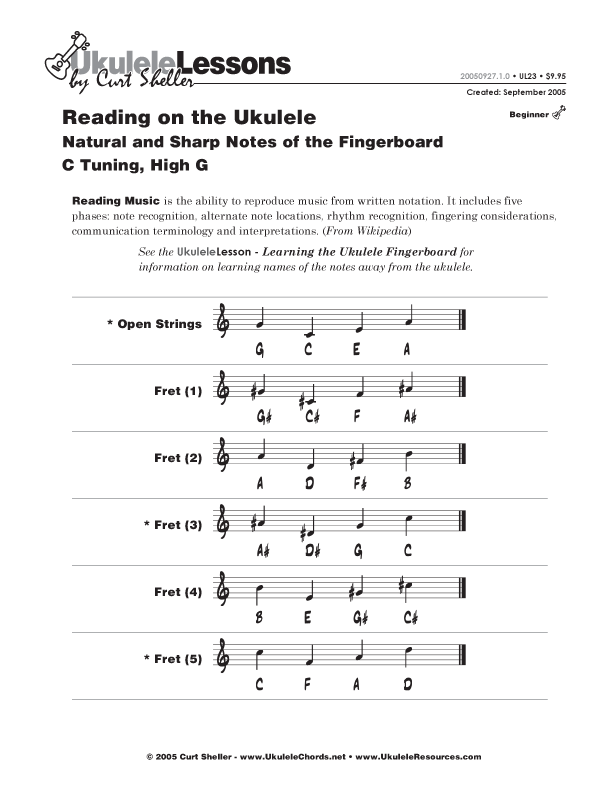
Standard music notation, the natural, sharp and flat notes of the ukulele fingerboard for C tuned ukuleles. Covers both high C and low G tuning variations.
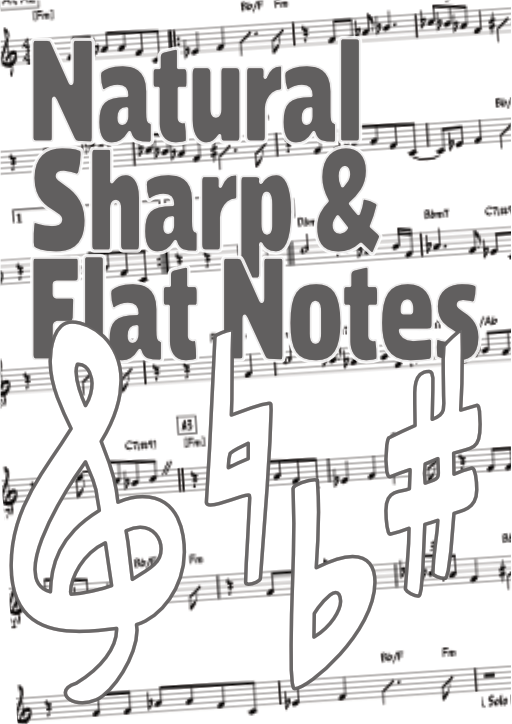
The D Tuning comes in two versions where string four is either tuned to the "A", a major second below string one or low "A" where string fours is a perfect fifth below string three. The D tuning with a low A is the same as the thin four strings of a standard tuned guitar with a capo at fret (7).
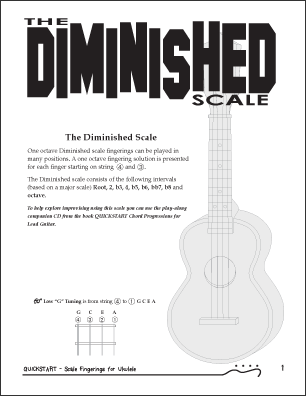
The "Diminished Scale" is a symmetrical scale with a repeating pattern of whole steps and half steps. You only need three Diminished scales to cover all 15 keys.
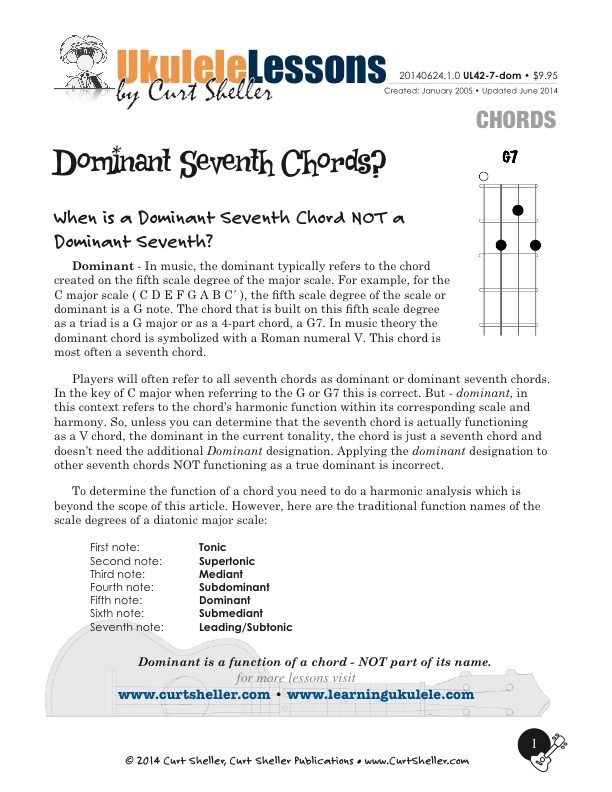
Not all seventh chords are actually "dominant" seventh chords. This lesson covers when is a Dominant Seventh Chord NOT truly a Dominant seventh?
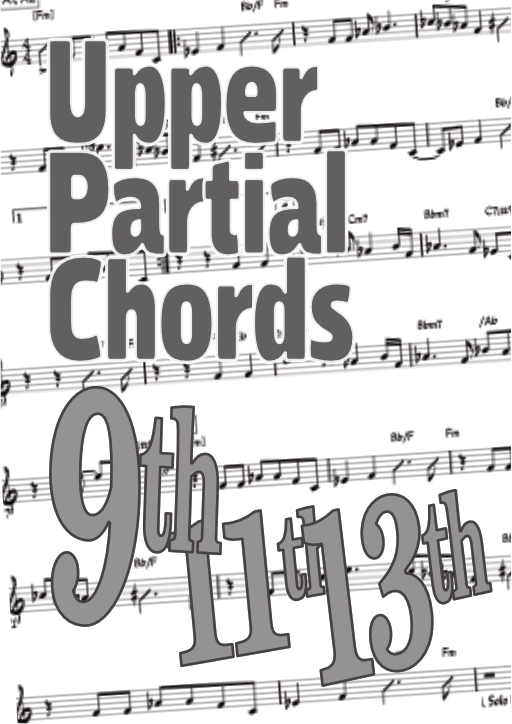
Upper Partials or extensions for chords are the 9th, 11th, and 13ths of a chord. The 9, 11 and 13 can be altered chord tones depending on the type: e.g: b9, #9, #11, b13. These numbers, the 9, 11 and 13 refer to the scale tone/chord tone relative to the major scale used for building all chords.
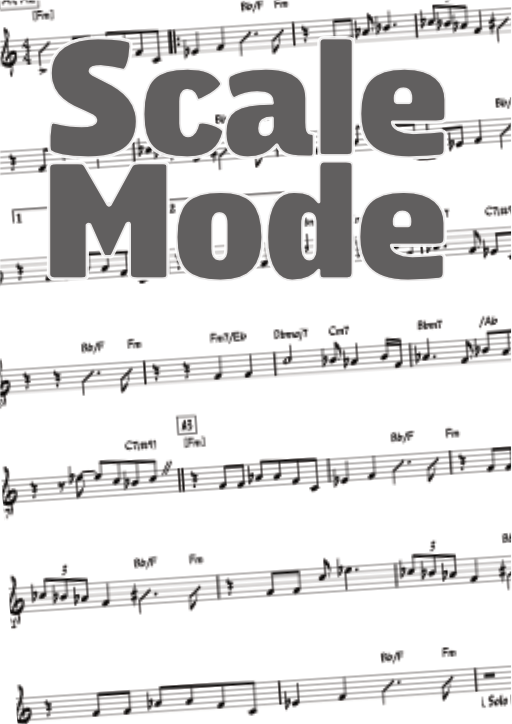
The terms "scale" and "mode" are often used interchangeably, but strictly speaking, there is a significant difference between them in music theory. Although they may share the same set of notes, a scale and a mode or modal scale are not the same thing. It's important to note that a scale and a mode can contain the same notes.

The Big Six Core Chords is a series of lessons for building your core, essential 4-part chords. These chords commonly called jazz chords, are really just 4-part chords used in a wide range of musical styles. These chords include: Seventh , Major Seventh, Minor Seventh, Half Diminished Seventh or Minor Seven Flat Five, Diminished Seventh, and Augmented Seventh. These six chords form a core set of chords.
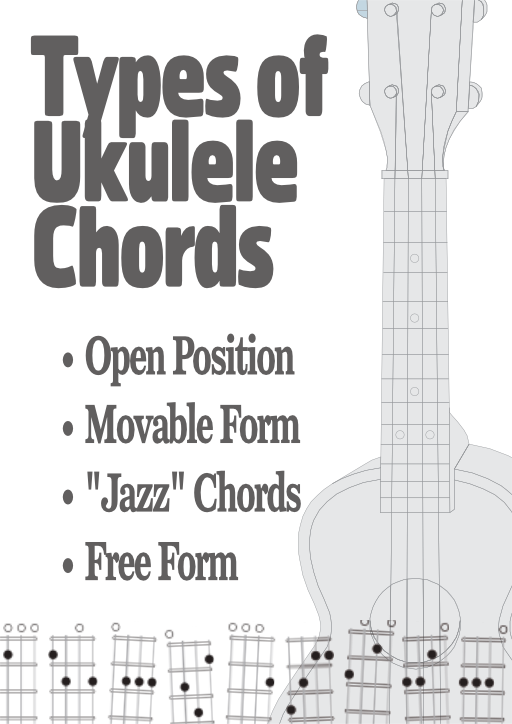
Naturally, for Ukuleles, all chords need to be voiced using only the four strings available. You would think that this is limiting, when in actuality it's quite liberating when you learn the makeup of chords. Chords can be categorized into four categories: “Open Position Chords”, “Movable Form Chords”, “4-part - a.k.a. Jazz Chords”, and “Free Form Chords.”

Ear Training is the development of the active and passive capability to relate to music aurally. This includes the ability to recognize melodic and harmonic intervals, chords, chord progressions, rhythm, melody, and harmony.
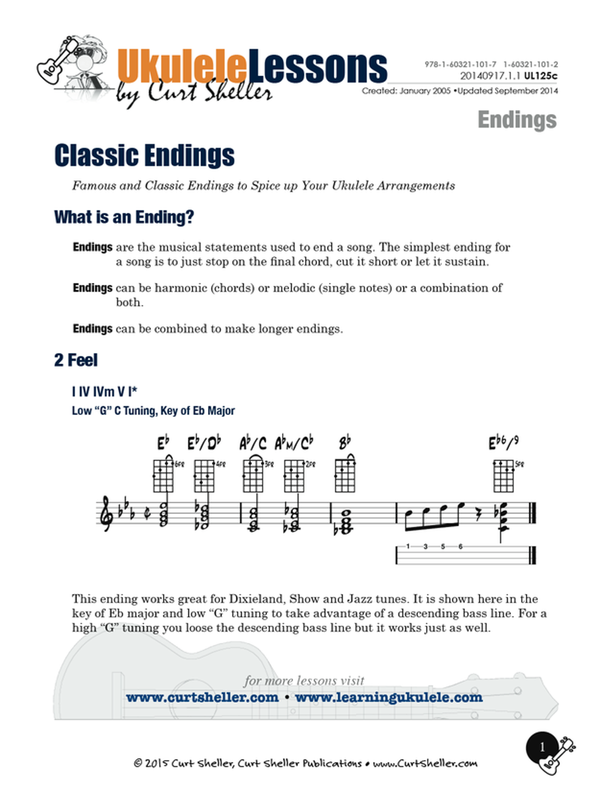
Two Feel, bVImaj7 bIImaj7, Basie Ending, Single, Double and Triple Tags, Chromatic, Take 'A' Train Ending, Shave and a Hair Cut, Lawrence Welk Ending. These are common classic songs ending that are used over and over in the standard song repertoire.
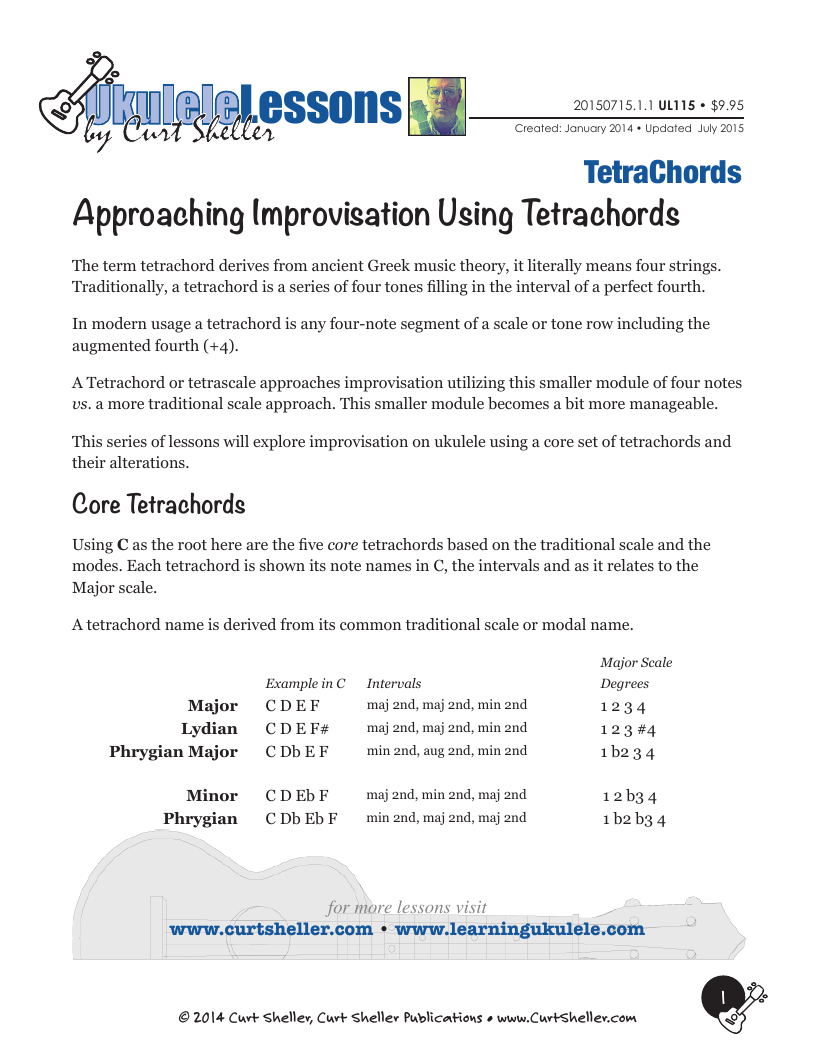
Traditionally, a "Tetrachord" is a series of four tones filling in the interval of a perfect fourth. In modern usage a tetrachord is any four-note segment of a scale or tone row including the augmented fourth (+4). The term tetrachord derives from ancient Greek music theory, it literally means four strings.**
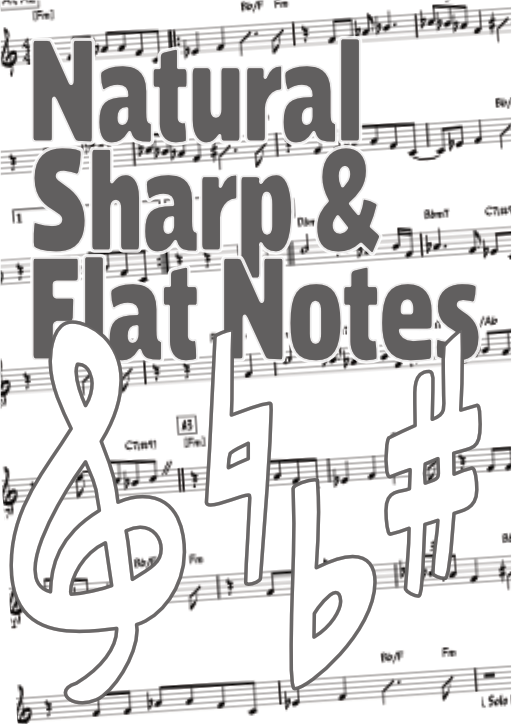
The G Tuning comes in two versions where string four is either tuned to the "D", a major second below string one or low "D" where string four is a perfect fifth below string three. The G tuning with a low D is the same as the thin four strings of a standard tuned guitar.
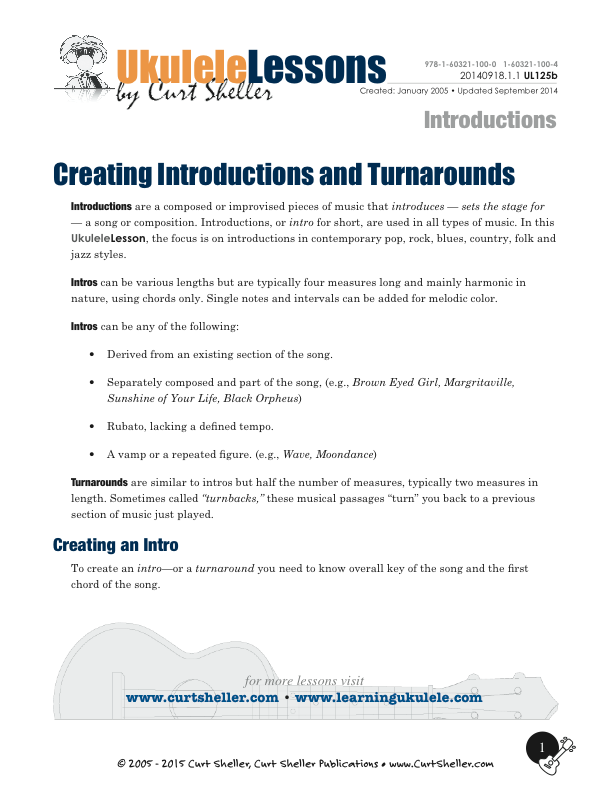
Introductions are a composed or improvised pieces of music that introduce - sets the stage for - a song or composition. Introductions, or intro for short, are used in all types of music. In this lesson, the focus is on introductions in contemporary pop, rock, blues, country, folk and jazz styles.
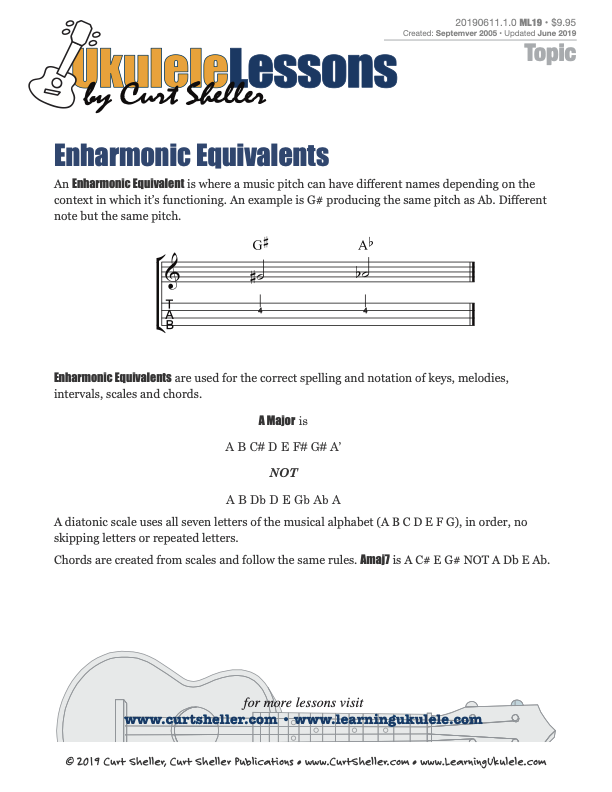
An "Enharmonic Equivalent" is where a musical pitch can have different names depending on the context in which it is functioning. An example is G# produces the same pitch as Ab but have different standard notations when written in music.
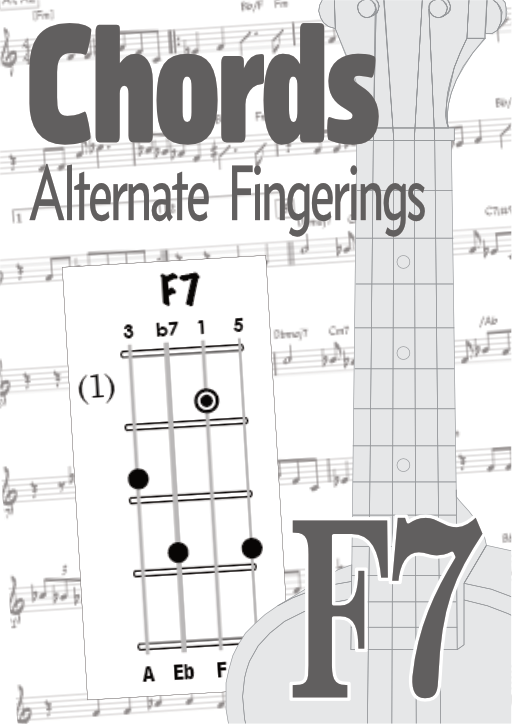
Alternate fingerings for F7 in C tuning. The same fingerings would apply to C7 in G tuning and G7 in D tuning.

Beyond basic open position chords, basic movable form chords and a core set of 4-part chords. There are just too many chords shapes too memorize. Learning the principles of how chords are constructed and the ukulele fingerboard are the way to go. Then you can create more advanced chords like 9#11, 7#5-9, 13b5, 7+9 on the fly as needed.
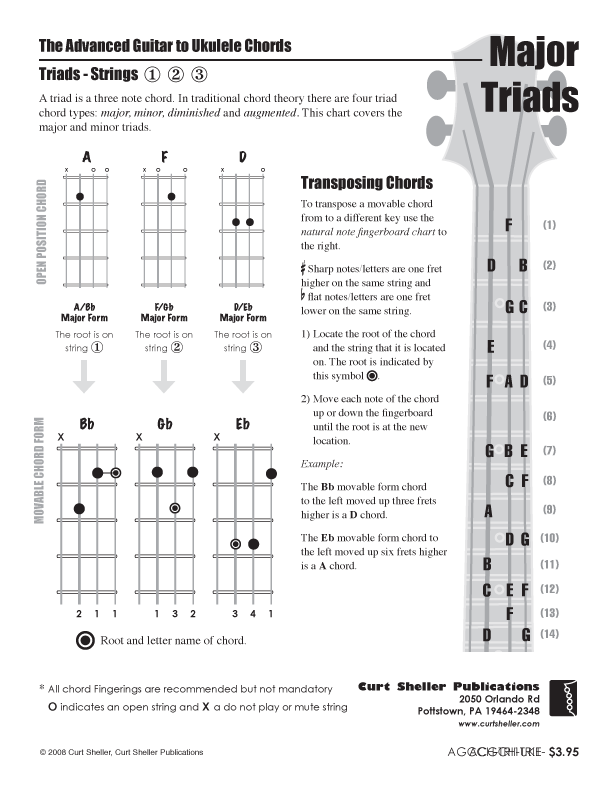
In music or music theory, a triad is a three-note chord (or, more generally, any set of three notes, pitches, or tones). Triads can be used harmonically, as chords and melodically, as single notes. These lessons explore both. Using triads as chords like any other chord and using triads as a basis for creating melodies and improvising.
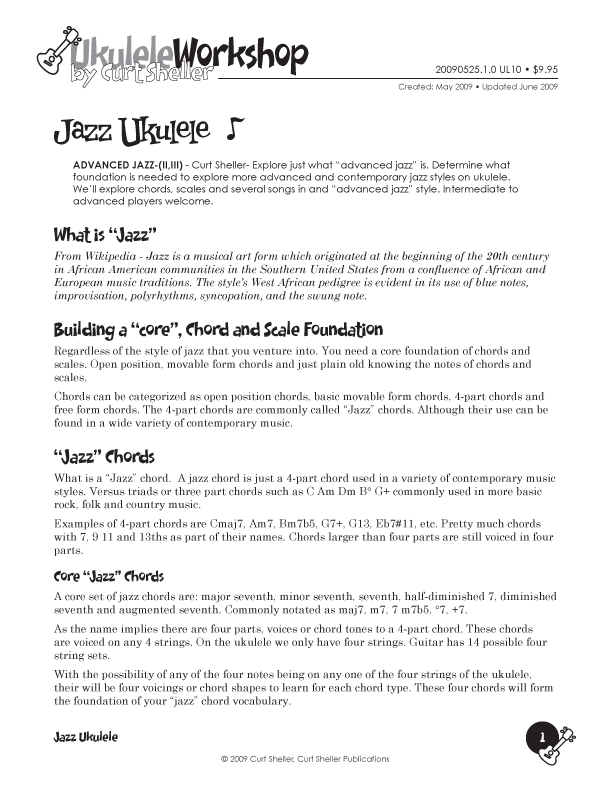
Wikipedia defines "Jazz" as a musical art form which originated at the beginning of the 20th century in African American communities in the Southern United States from a confluence of African and European music traditions. The style's West African pedigree is evident in its use of blue notes, improvisation, polyrhythms, syncopation, and the swung note.
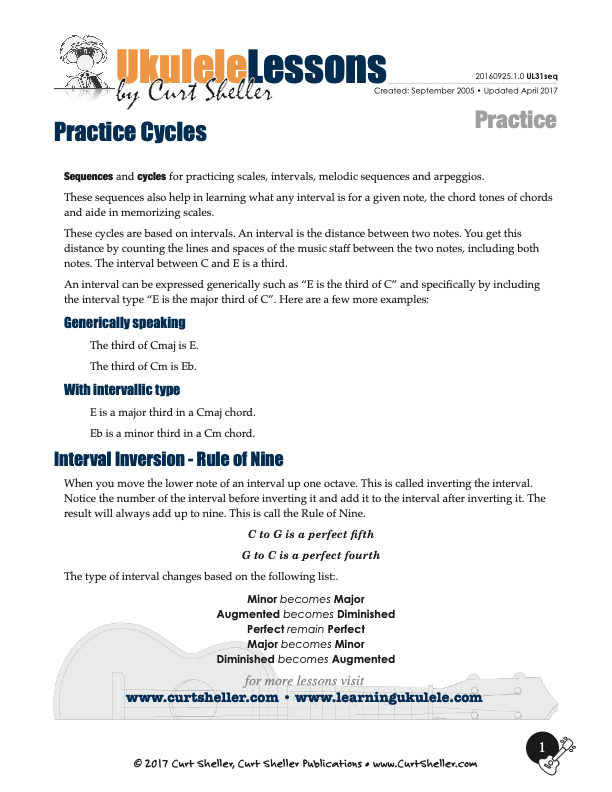
Sequences and cycles for practicing scales, intervals, melodic sequences and arpeggios.

"Hearing The Changes" is knowing what the chords of a song or chord progression are and when they change. This lesson gets you on the road to developing this ability. This involves know the chords of the keys and scales that are used for common progressions and songs. And the ability to recognize the sound of intervals, the distance between intervals.
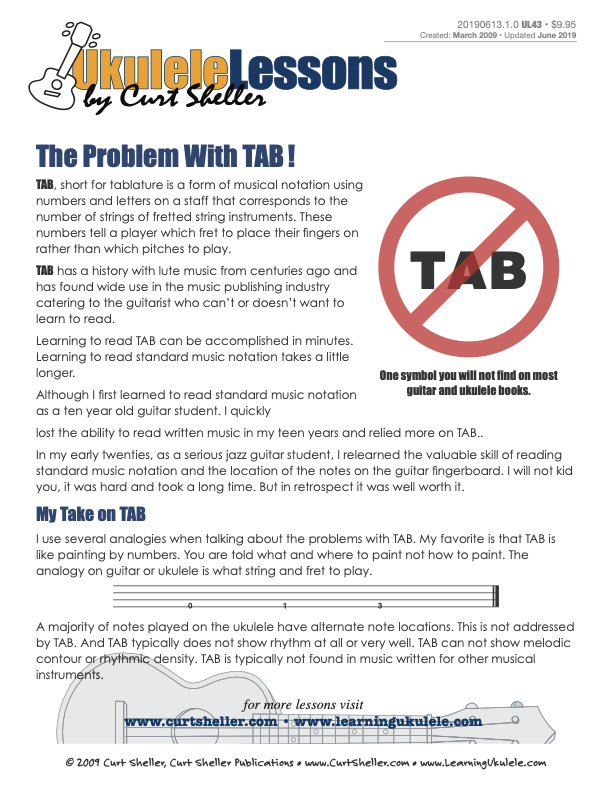
TAB, short for tablature is a form of musical notation using numbers and letters on a staff that that corresponds to the number of strings of fretted string instrument. Theses number tell a player which fret to place their fingers on the fingerboard. TAB has a history with lute music from centuries ago and has found wide use in the music publishing industry catering to the guitarist who can?t or doesn't want to learn to read.

This series of lessons will allow you finally, to check that Reading item off your music To Do list. Learning to read standard music notation opens a world of music to you. Music notation is the Lingua franca of amateur and professional musicians alike.
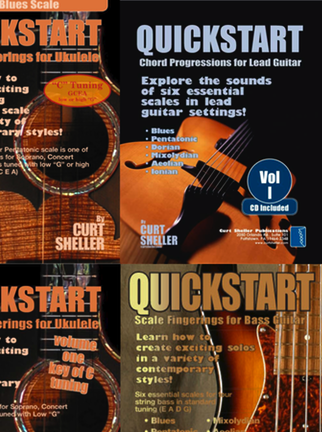
"QuickStart Scale and Arpeggio Fingerings" are a highly organized, efficient system of scale and arpeggio fingerings. Each fingering pattern is shown with a fingerboard shape, TAB and standard music notation. Related chords are also explained for each scale. Master these fingerings and unlock your potential for solos and improvisation.
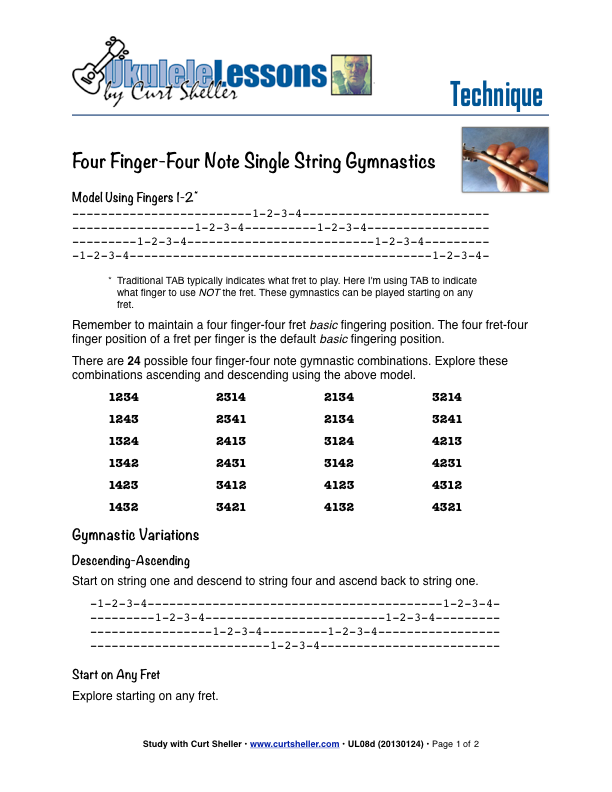
To play the ukulele effectively, your fingers need physical strength, agility, flexibility and coordination. This four finger-four note drill is designed to get your hands in shape. These exercises work no matter what style of ukulele you play or want to play.
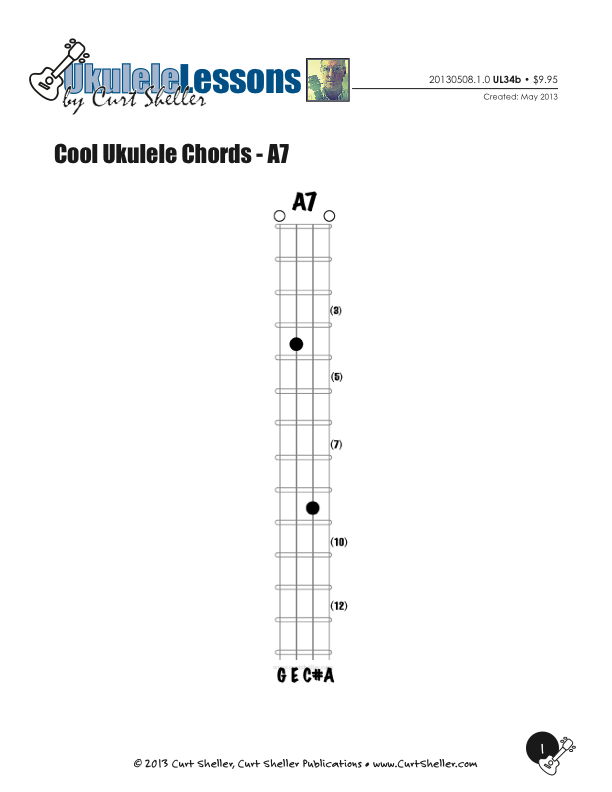
A cool chord is most likely a Free Form chord. A free form chord typically includes open strings, wide stretches, displaced chord tones and or chord voicings. Plus they just sound cool.
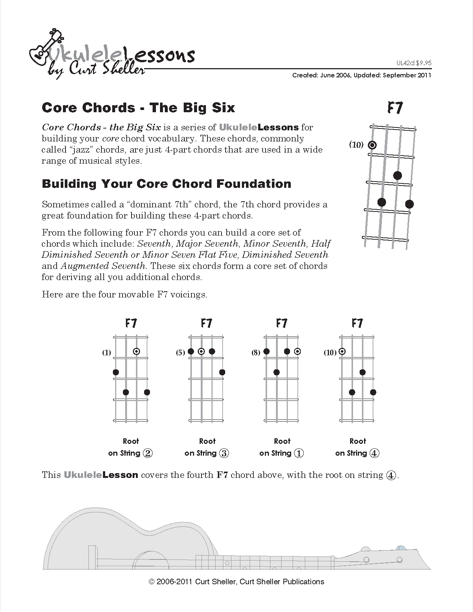
Taking a movable "F7" chord, you can derive each of the Big Six Core Chords. 7, maj7, m7, m7b5, dim7, and aug7 from that voicing.

Taking a movable "F7" chord, you can derive each of the Big Six Core Chords. 7, maj7, m7, m7b5, dim7, and aug7 from that voicing.
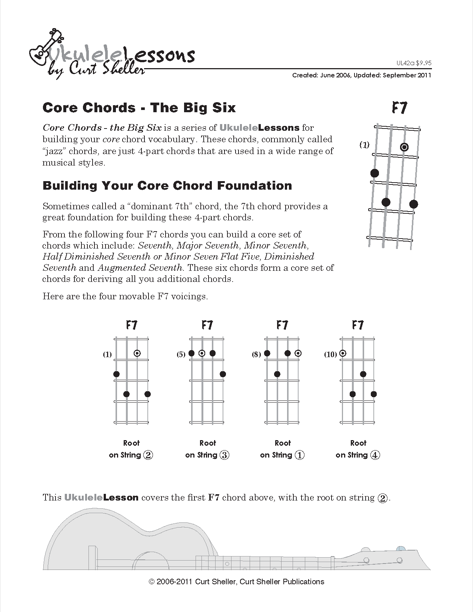
Taking a movable "F7" chord, you can derive each of the Big Six Core Chords. 7, maj7, m7, m7b5, dim7, and aug7 from that voicing.
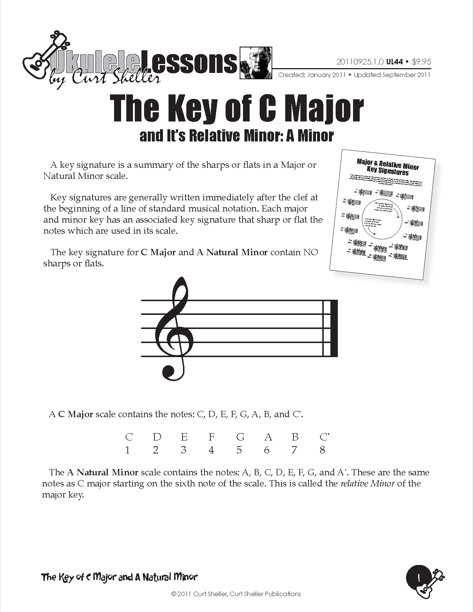
In music, it is important to learn and recognize the key signature for C Major and A Minor. These two keys have corresponding major and natural minor scales, along with basic ukulele chords that can be used with each scale. The key of C Major, also known as the learning key, is particularly easy to memorize and start using.
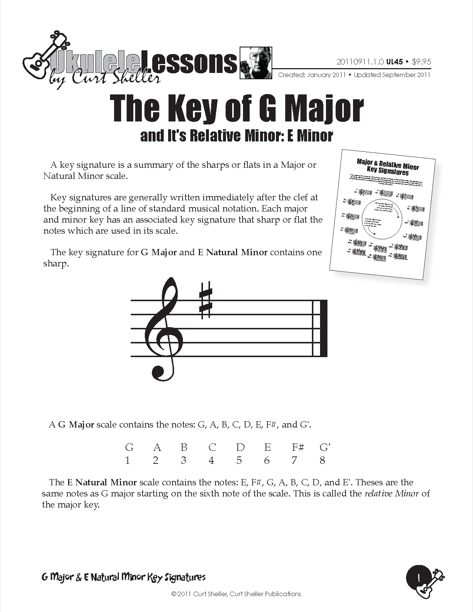
“G Major” (or the key of G) is a major scale based on G, with the pitches G A B C D E F#. Its key signature has one sharp: F#. Its Relative Minor scale is E Minor. Its Parallel Minor is D Minor.
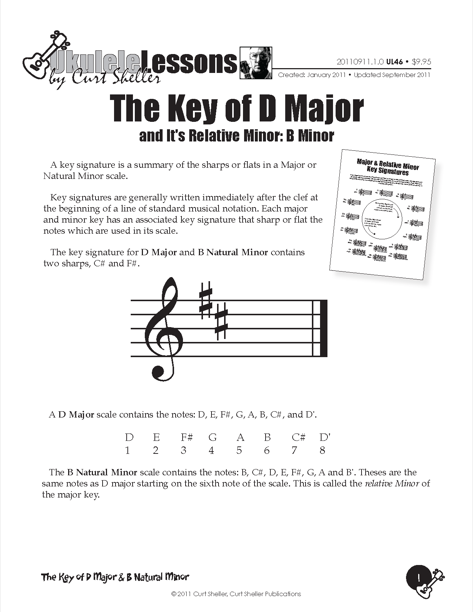
"D Major" (or the key of D) is a major scale based on D, with the pitches E F# G A B C#. Its key signature has two sharps: F# C#. Its Relative Minor scale is Bm Minor. Its Parallel Minor is D Minor.
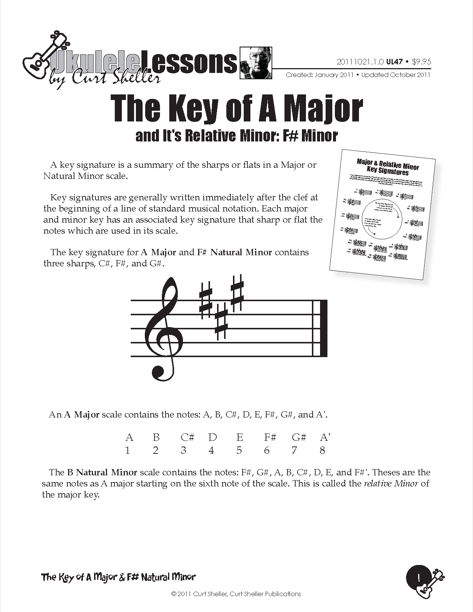
"A Major" (or the key of A) is a major scale based on A, with the pitches A B C# D E F# G#. Its key signature has three sharps: F# C# G#. Its Relative Minor scale is F# Minor, Minor. Its Parallel Minor is A Minor.
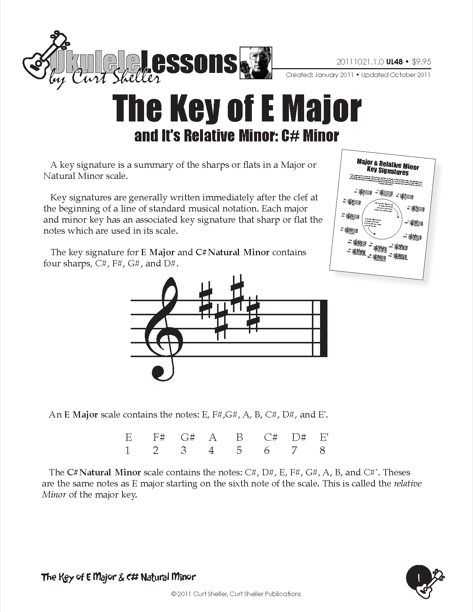
"E Major" (or the key of E) is a major scale based on E, with the pitches E F# G# a B C# D#. Its key signature has four sharps: F# C# G# D#. Its Relative Minor scale is B Minor. Its Parallel Minor is E Minor.
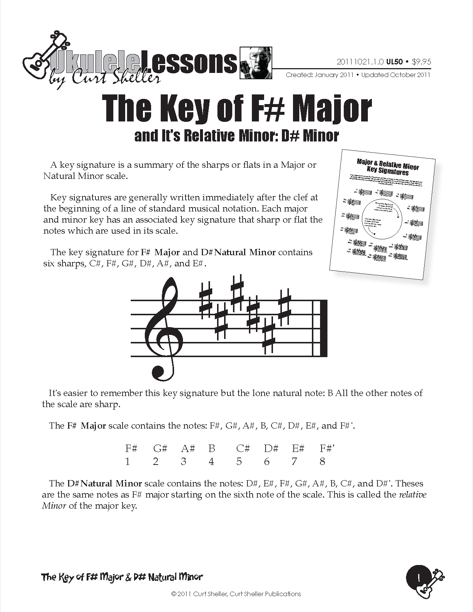
"F# Major" (or the key of F#) is a major scale based on F#, with the pitches F# G# A# B C# D# E#. Its key signature has six sharps: F# C# G# D# A# E#. Its Relative Minor scale is G# Minor. Its Parallel Minor is F# Minor and, its enharmonic equivalent is Gb minor.
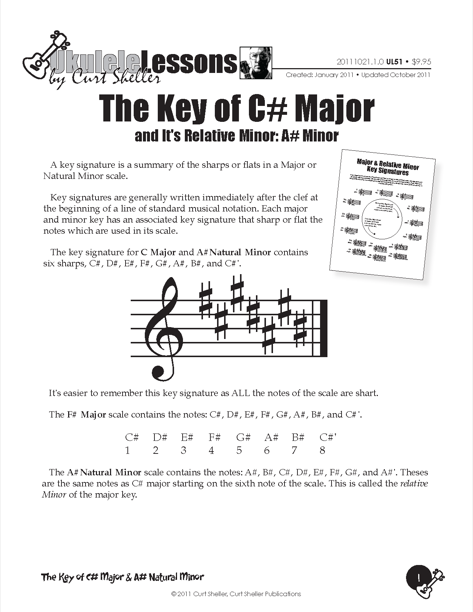
"C# Major" (or the key of C#) is a major scale based on C#, with the pitches, all sharps C# D# ES F# G# A#. Its key signature has seven sharps: F# C# G# D# A# E# B#. Its Relative Minor scale is A# Minor. Its Parallel Minor is C# Minor, and its enharmonic equivalent is Db minor. C# is a somewhat easy key and scale to memorize as all the note are sharp.
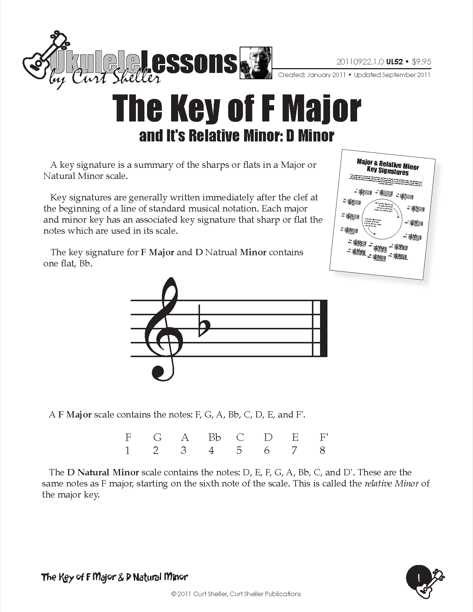
"F# Major" (or the key of F#) is a major scale based on F#, with the pitches F# G# A# B C# D# E#. Its key signature has six sharps: F# C# G# D# A# E#. Its Relative Minor scale is G# Minor. Its Parallel Minor is F# Minor and, its enharmonic equivalent is Gb minor.
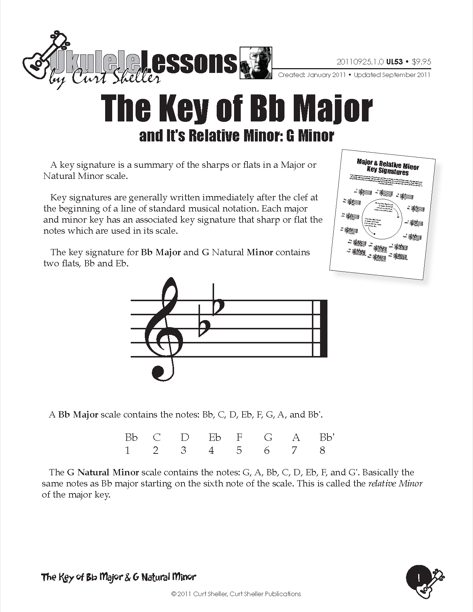
"Bb Major" (or the key of Bb) is a major scale based on Bb, with the pitches Bb C D Eb F G A. Its key signature has two flats: Bb Eb. Its Relative Minor scale is G Minor. Its Parallel Minor is Bb Minor. B-flat major is a suitable key for most wind instruments, especially those for which it is their home key, such as clarinets, trumpets, tenor saxophone, soprano saxophone and flutes in B-flat.
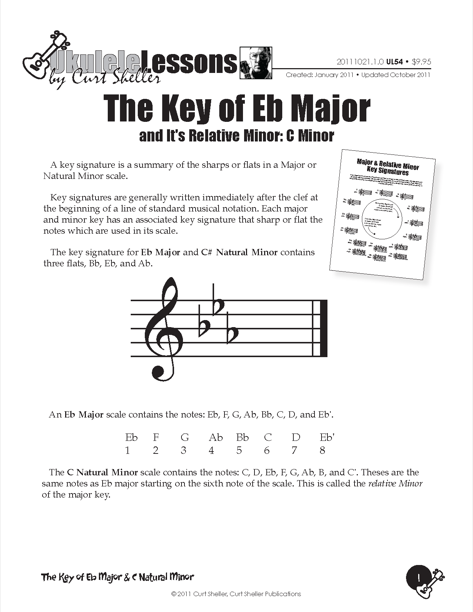
"Eb Major" (or the key of Eb) is a major scale based on Eb, with the pitches Eb F G Ab Bb C D. Its key signature has three flats: Bb Eb Ab. Its Relative Minor scale is C Minor. Its Parallel Minor is Eb Minor. E flat major is often associated with bold, heroic music, in part because of Beethoven's usage.
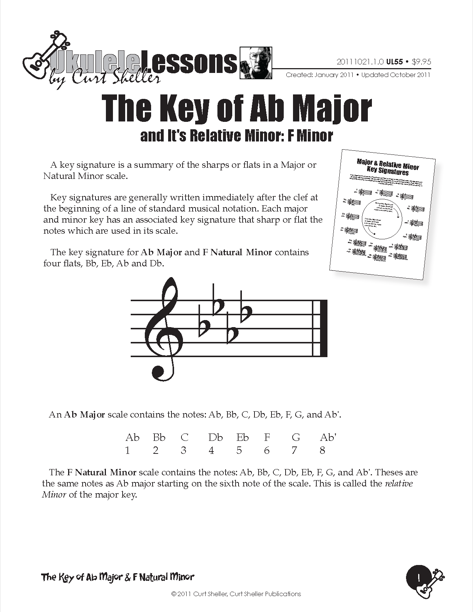
"Ab Major" (or the key of Ab) is a major scale based on Ab, with the pitches Ab Bb C D Eb F G. Its key signature has four flats: Bb Eb Ab Db. Its Relative Minor scale is F Minor. Its Parallel Minor is Ab Minor.
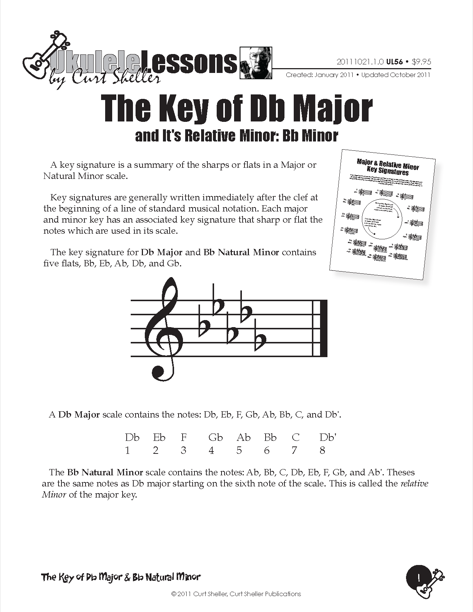
"Db Major" (or the key of Db) is a major scale based on Db, with the pitches Db Eb F Gb Ab Bb C. Its key signature has five flats: Bb Eb Ab Db Gb. Its Relative Minor scale is Bb Minor. Its Parallel Minor is Db Minor.
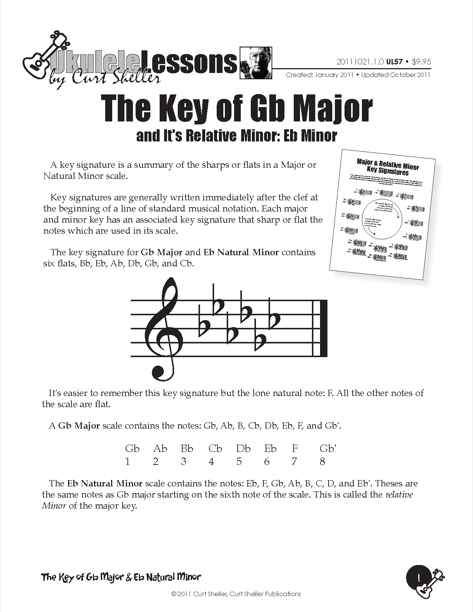
"Gb Major" (or the key of Gb) is a major scale based on Gb, with the pitches Gb Ab Bb Cb Db Eb Ab F. Its key signature has six flats: Bb Eb Ab Db Gb Cc. Its Relative Minor scale is Eb Minor. Its Parallel Minor is Gb Minor, usually replaced by F-sharp minor, since G flat minor, which would have nine flats, is theoretically possible but is not typically used.
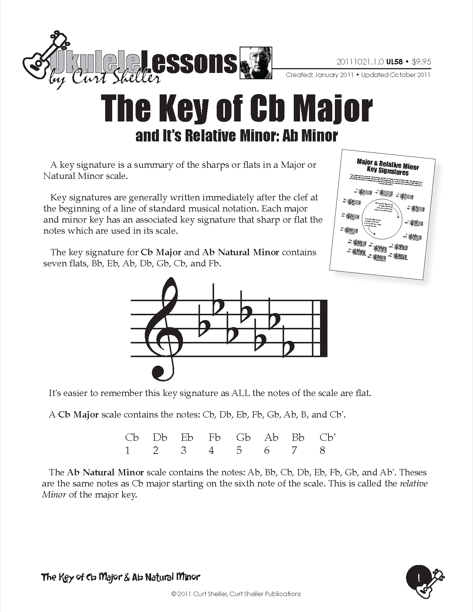
"Cb Major" (or the key of Cb) is a major scale centered around Cb, with the following pitches: Cb, Db, Eb, Fb, Gb, Ab, and Bb. The key signature of Cb Major includes seven flats: Bb, Eb, Ab, Db, Gb, Cb, and Fb. The relative minor scale of Cb Major is Ab Minor, while the parallel minor is Cb Minor. Cb Major is considered relatively easy to memorize, as all of its notes are flat.
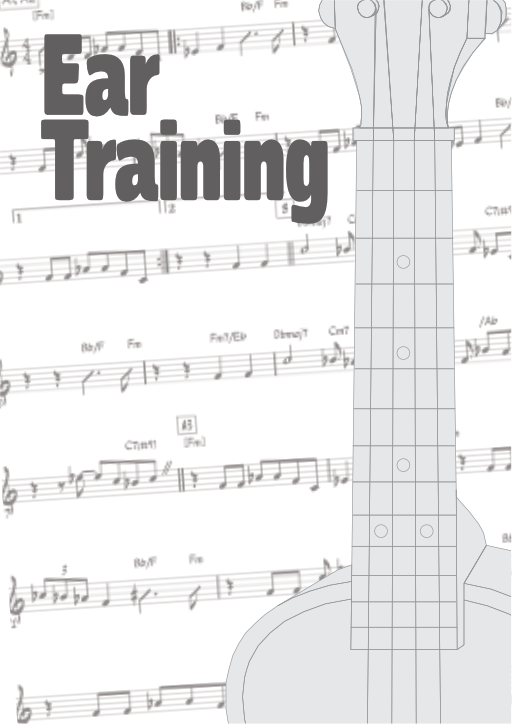
Ear Training is the development of the active and passive capability to relate to music aurally. This includes the ability to recognize melodic and harmonic intervals, chords, chords progressions, rhythm, melody and harmony.
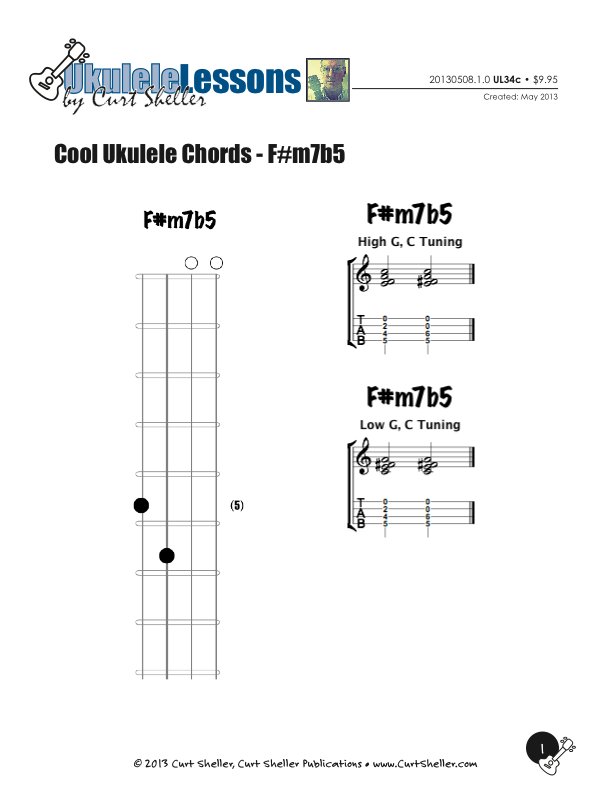
F#m7b5 or F# half-diminished seven is a common chord in the key of G major and Em - especially Em.
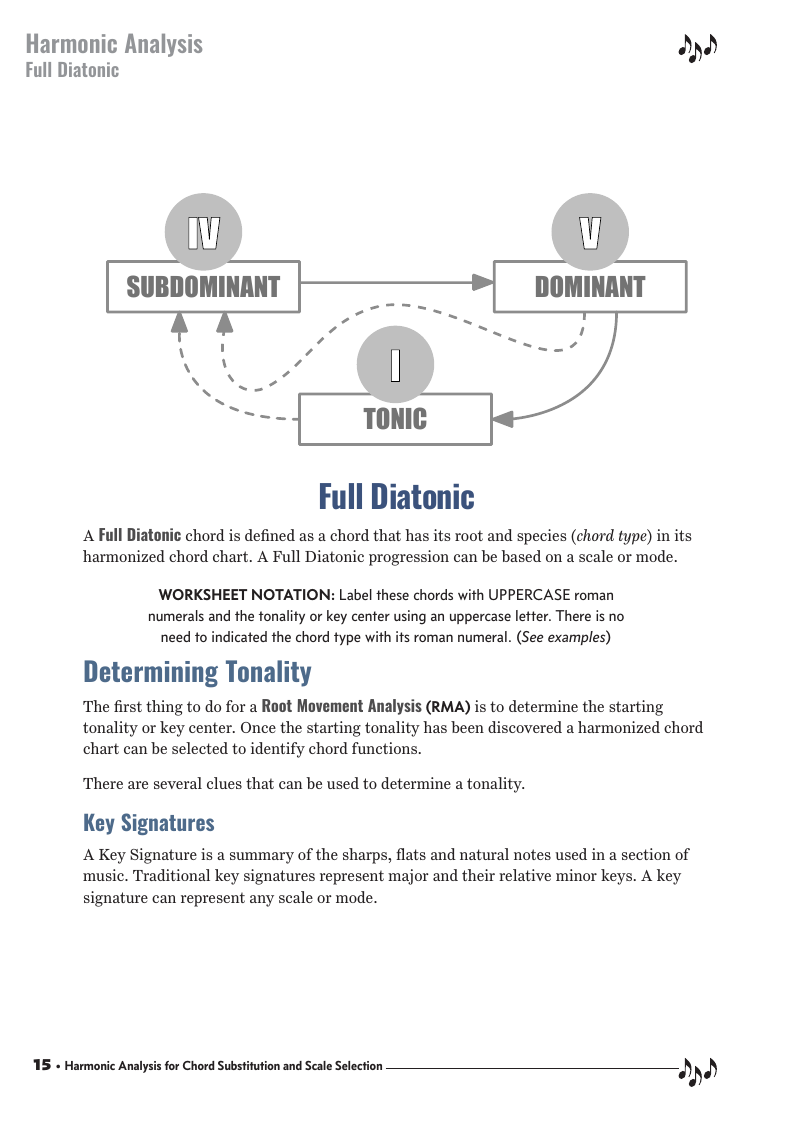
Harmonic Analysis is the understanding of the functional sequence of chords. It is the process used to analyze the harmonic structure of a progression, song, or composition. This analysis is then used to make scale selections for improvisation and chord substitution. This lesson covers the Full Diatonic harmonic principle.
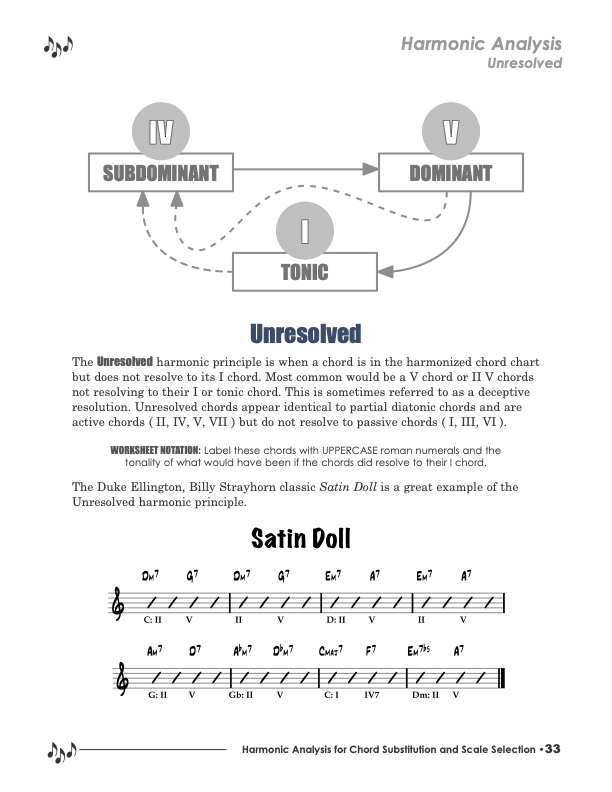
Harmonic Analysis is the understanding of the functional sequence of chords. It is the process used to analyze the harmonic structure of a progression, song, or composition. This analysis is then used to make scale selections for improvisation and chord substitution. This lesson covers the Unresolved harmonic principle.
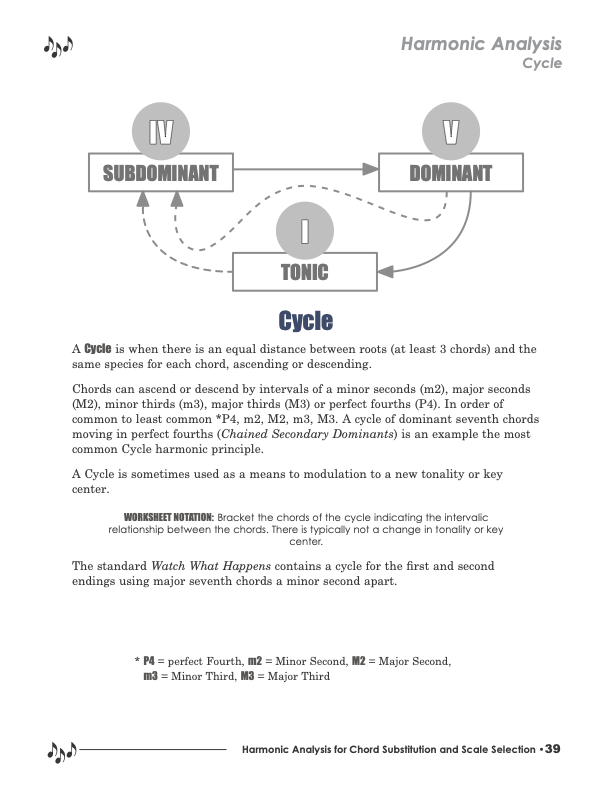
Harmonic Analysis is the understanding of the functional sequence of chords. It is the process used to analyze the harmonic structure of a progression, song, or composition. This analysis is then used to make scale selections for improvisation and chord substitution. This lesson covers the Cycles harmonic principle.
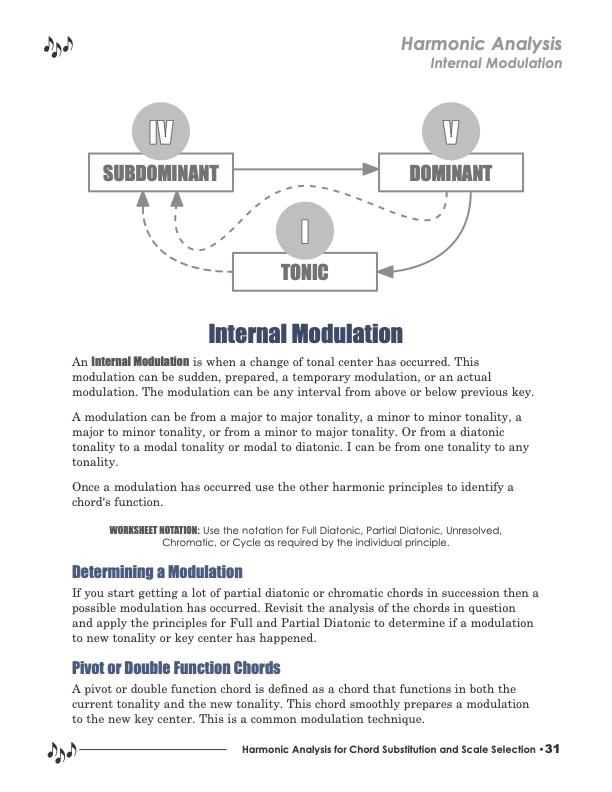
Harmonic Analysis is the understanding of the functional sequence of chords. It is the process used to analyze the harmonic structure of a progression, song, or composition. This analysis is then used to make scale selections for improvisation and chord substitution. This lesson covers the Internal Modulation harmonic principle.
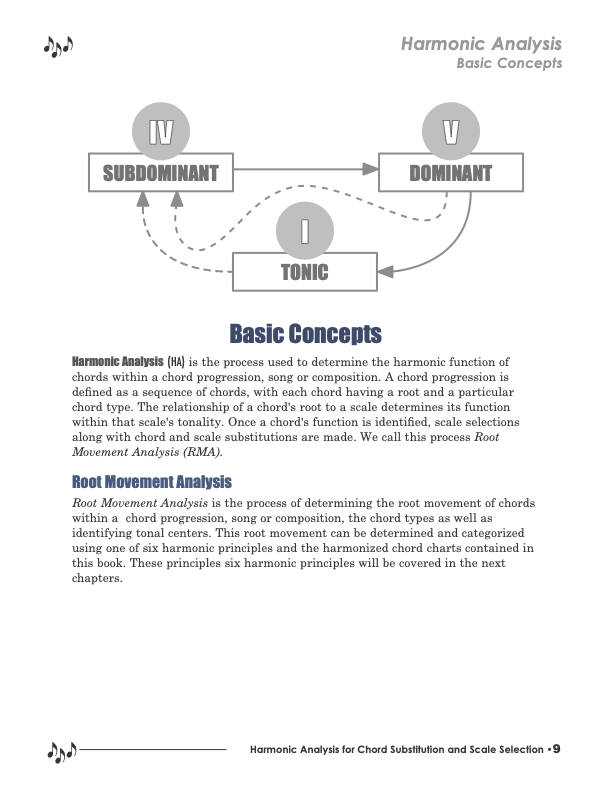
Harmonic Analysis is the process of determining the root movement of chords within a chord progression, the chord types that are used as well as identifying tonal centers. This root movement can be determined and categorized using one of six harmonic principles and the harmonized chord charts referenced in the lessons.

Harmonic Analysis is the understanding of the functional sequence of chords. It is the process used to analyze the harmonic structure of a progression, song, or composition. This analysis is then used to make scale selections for improvisation and chord substitution. This lesson covers the Chromatic harmonic principle.
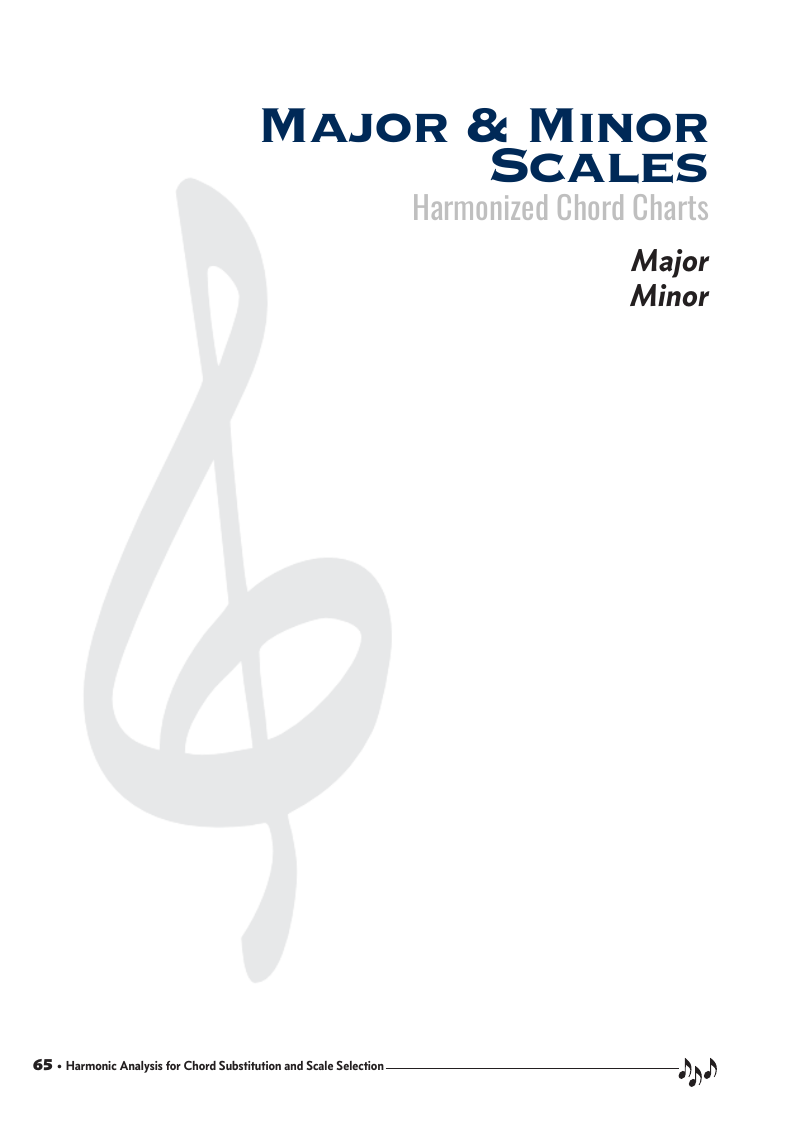
Major and Minor Harmonized Chord Charts are used for while doing a Harmonic Analysis (HA). Shows triads and 4-part chords for ALL 15 major and minor keys. "Yes, Virginia there are 15 keys."
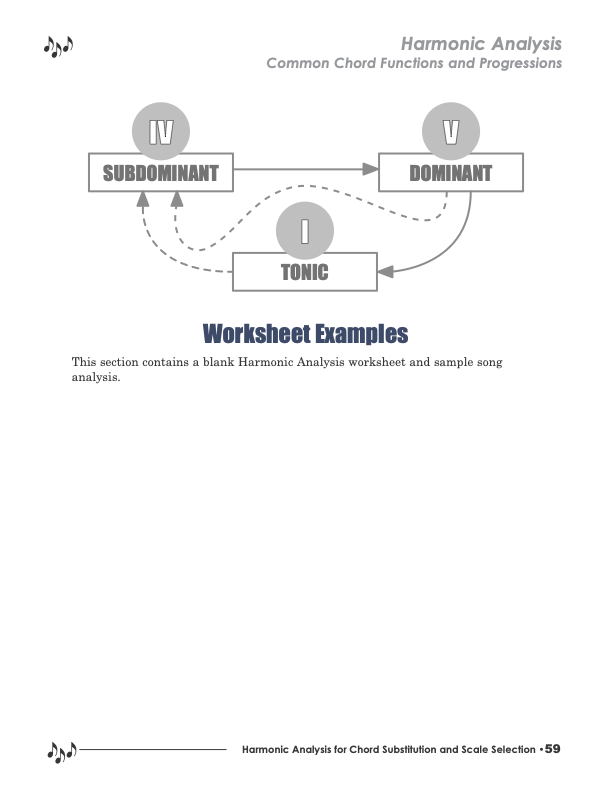
"Harmonic Analysis" is the understanding of the functional sequence of chords. It is the process used to analyze the harmonic structure of a progression, song or composition. A blank worksheet and examples for notating your harmonic analysis.
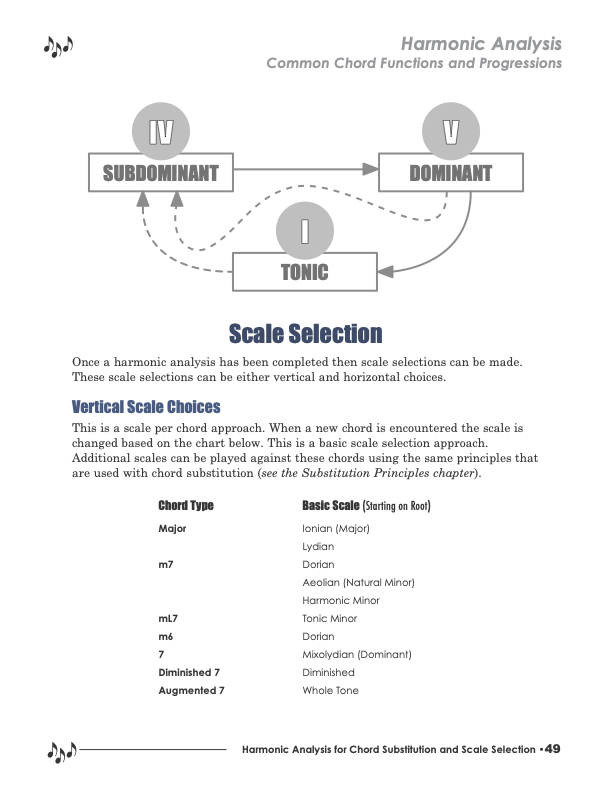
A Harmonic Analysis is then used to make vertical and horizontal scale selection for improvisation and chord substitution.
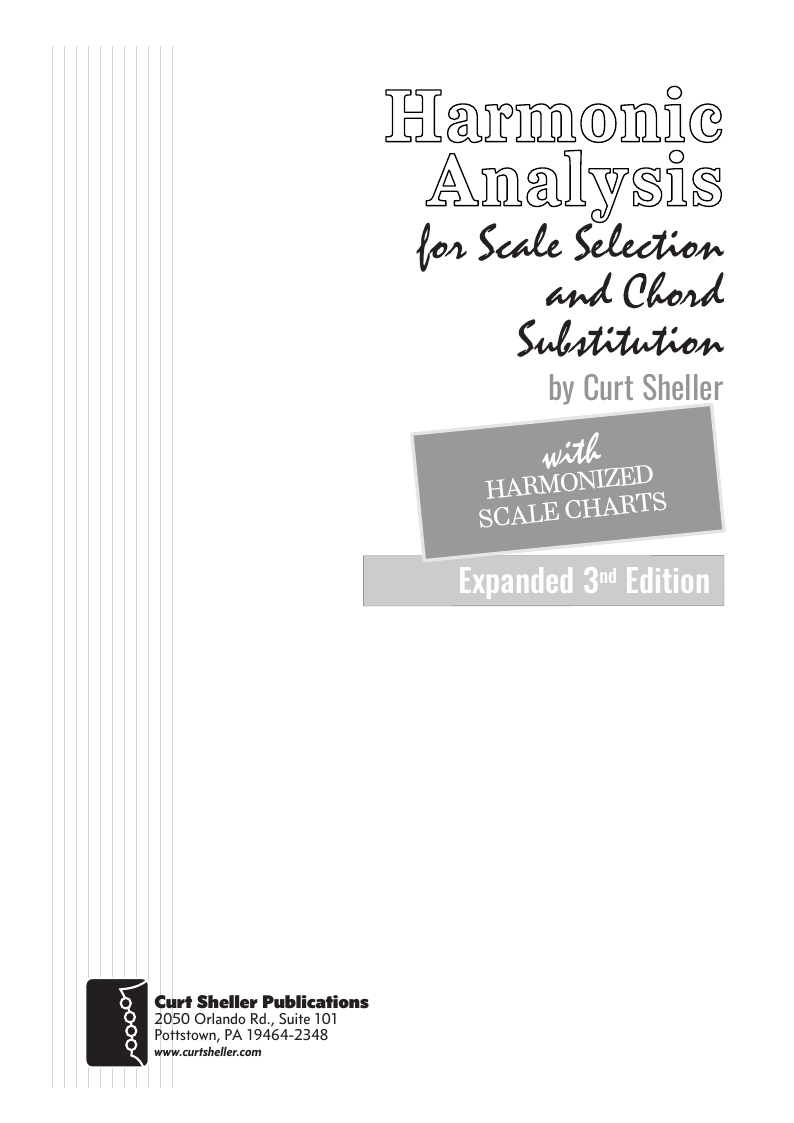
Harmonic Analysis (HA) is the process used to determine the harmonic function of chords within a chord progression, sequence, composition or song. A chord progression is defined as a sequence of chords, each chord has a root and has a particular chord type.
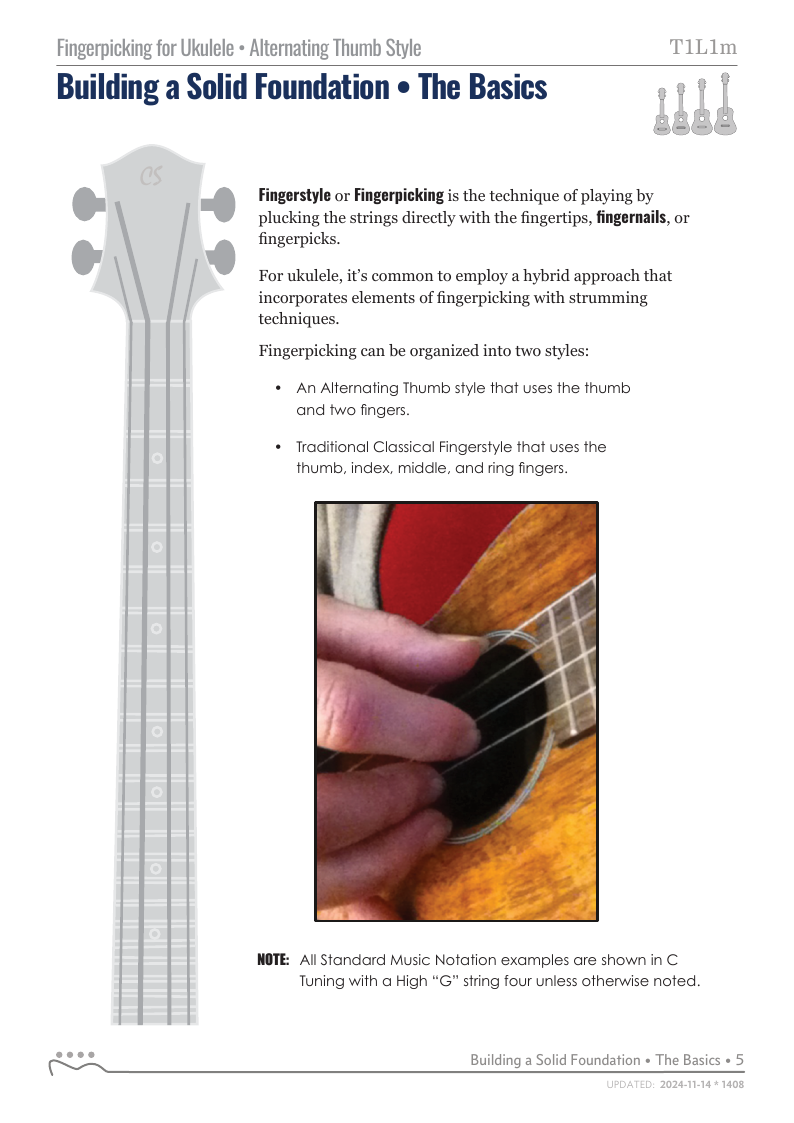
As the subtitle of this Fingerpicking Basics lesson for Ukulele implies, this lesson's focus is on the alternating thumb part of the style. Commonly called Travis Picking on guitar and Scrugg's Style for banjo. For guitar it’s an alternating bass note style with the thumb playing the lower, bass notes.
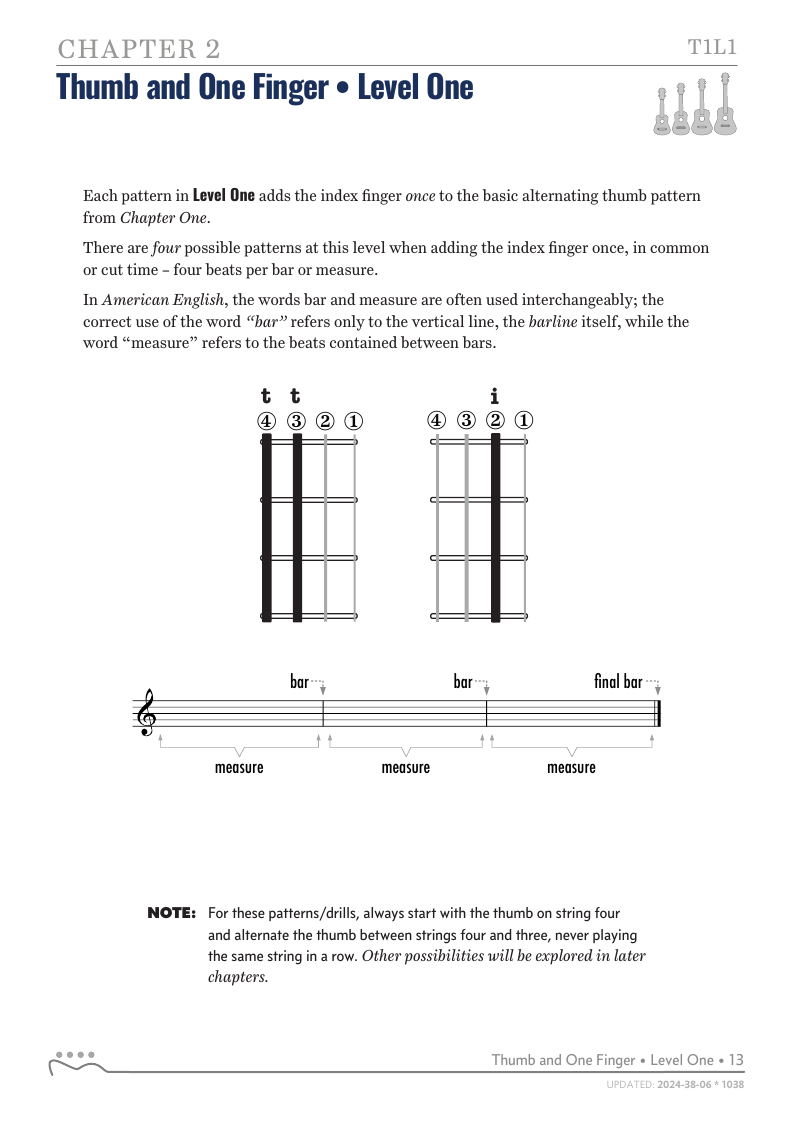
In this lesson we’re introducing the index finger once to the alternating thumb pattern mastered in the Alternate Thumb Fingerpicking Style - Introduction. There are four possible patterns when adding the index finger once in common or cut time.
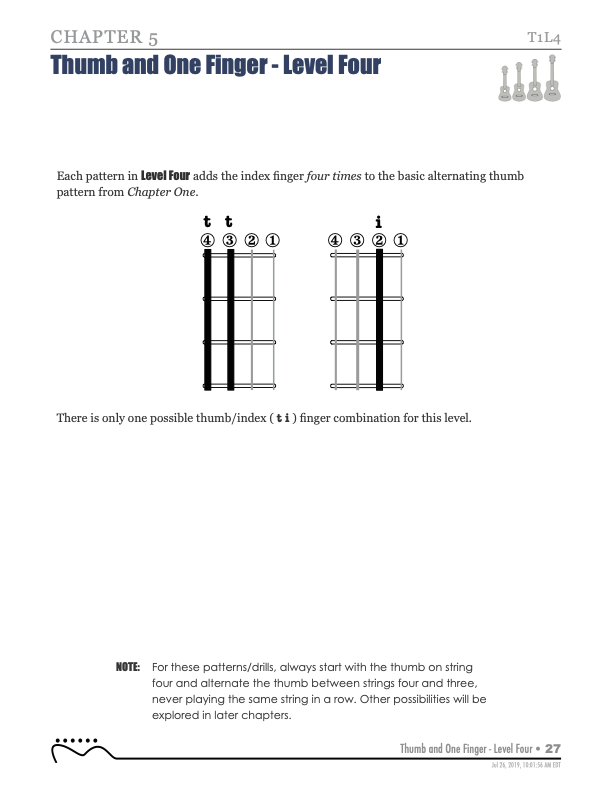
All the previous lessons in the "Fingerpicking for Ukulele, Alternating Thumb Style Series" where melodic, single notes only. This lesson introduces The *Pinch, where any one of the thumb/index finger or thumb/middle finger combinations can be played together - harmonically.

In this lesson we’re introducing the index finger three times to the alternating thumb pattern mastered in the Alternate Thumb Fingerpicking Style - Introduction. There are three possible patterns in common or cut time.

In this lesson we’re introducing the index finger twice to the alternating thumb pattern mastered in the Alternate Thumb Fingerpicking Style - Introduction. There are six possible patterns in common or cut time.ssible variations in this lesson.
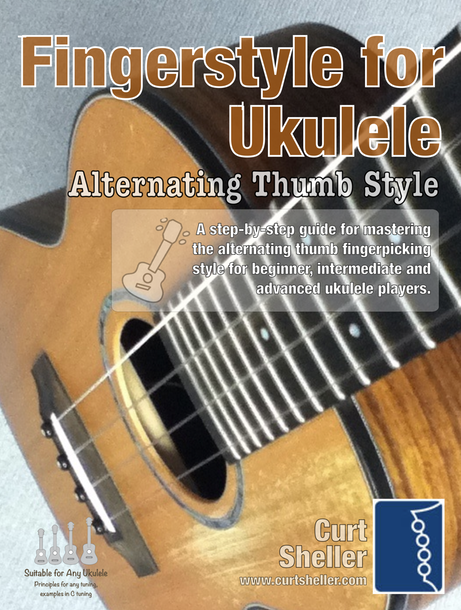
There are two common styles of fingerpicking on ukulele. This series of lessons explores the Alternating Thumb Style. A future series will explore the Thumb and three finger style, the traditional p i m a classical guitar style that we’ll adapt to ukulele.
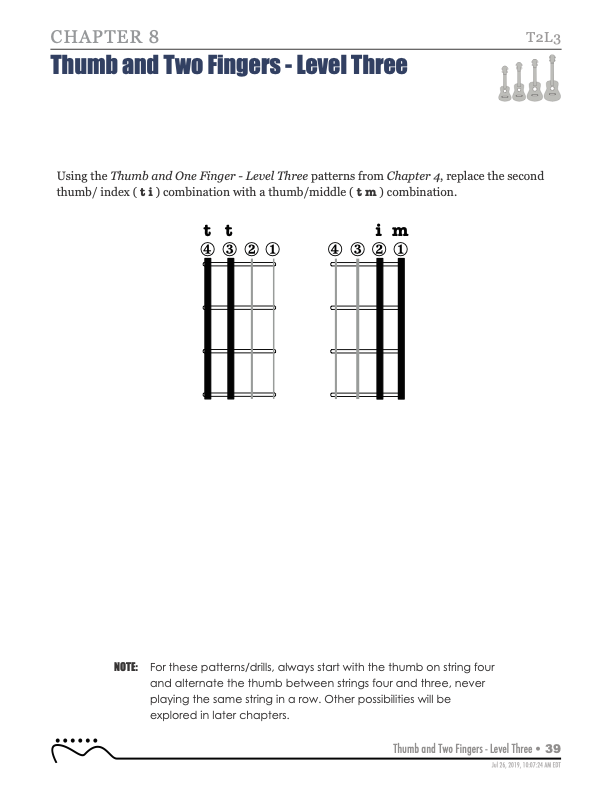
In this lesson we're introducing the middle finger to the fingerpicking patterns mastered in lesson/chapter four. There's three patterns in common or cut time.
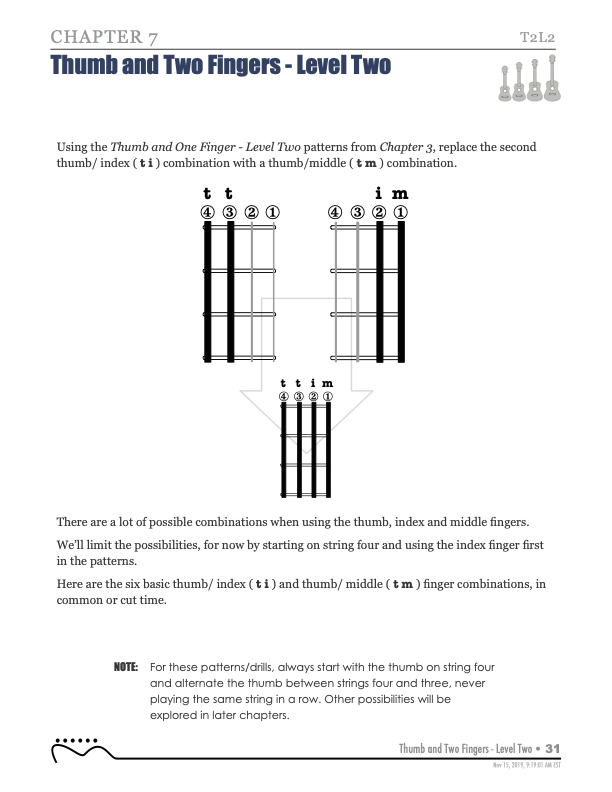
In this lesson we’re introducing the middle finger to the fingerpicking patterns mastered in chapter/lessons four. There are six possible patterns in common or cut time.
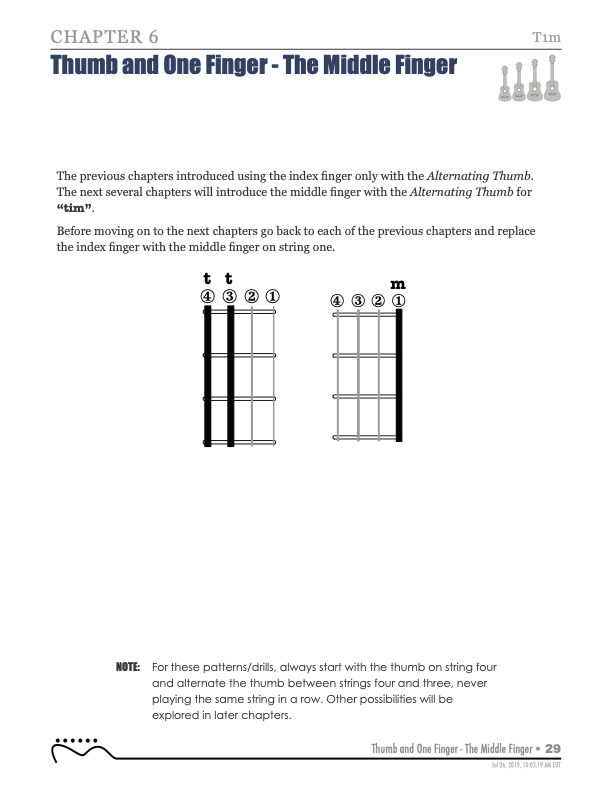
In this lesson we’re reolacing the index finger with the middle finger for the patterns mastered in chapters/lessons two, three and four.
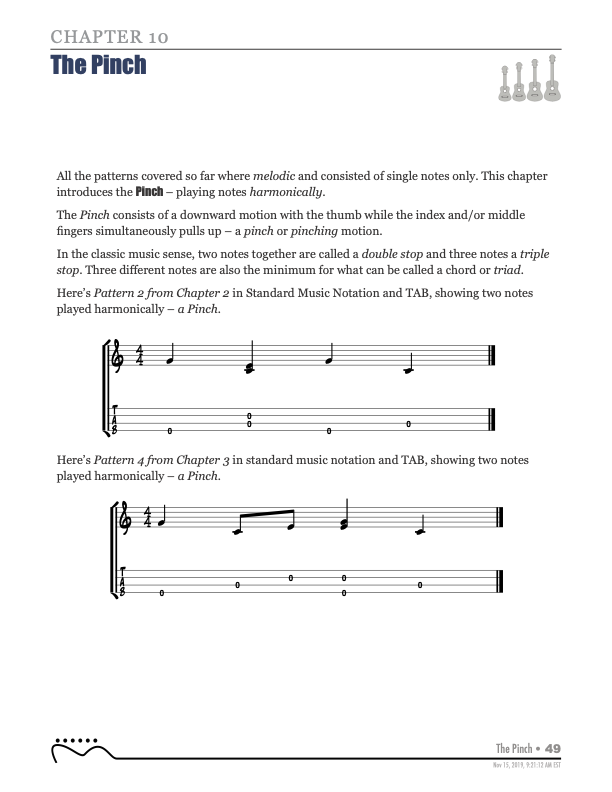
All the previous lessons in the "Fingerpicking for Ukulele, Alternating Thumb Style Series" where melodic, single notes only. This lesson introduces The *Pinch, where any one of the thumb/index finger or thumb/middle finger combinations can be played together - harmonically.
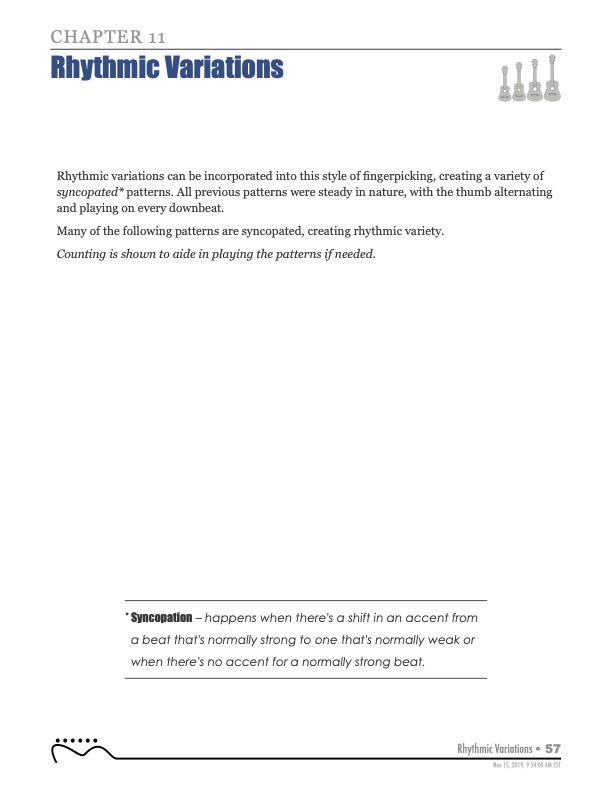
Rhythmic variations can be incorporated into this style of fingerpicking, creating a variety of syncopated patterns. All previous patterns were steady in nature, with the thumb alternating and playing on every downbeat. Many of the following patterns are syncopated, creating rhythmic variety.
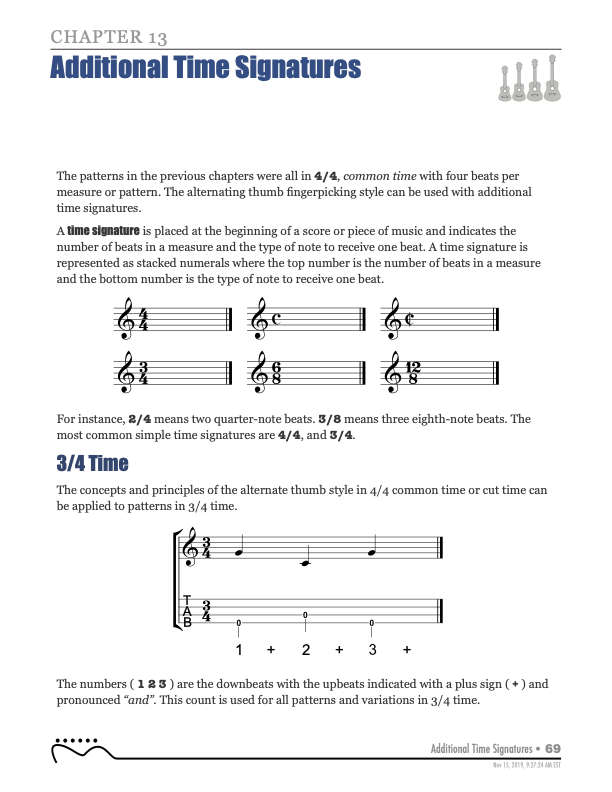
The patterns in the previous chapters were all in 4/4, common time with four beats per measure or pattern. The alternating thumb fingerpicking style can be used with additional time signatures.
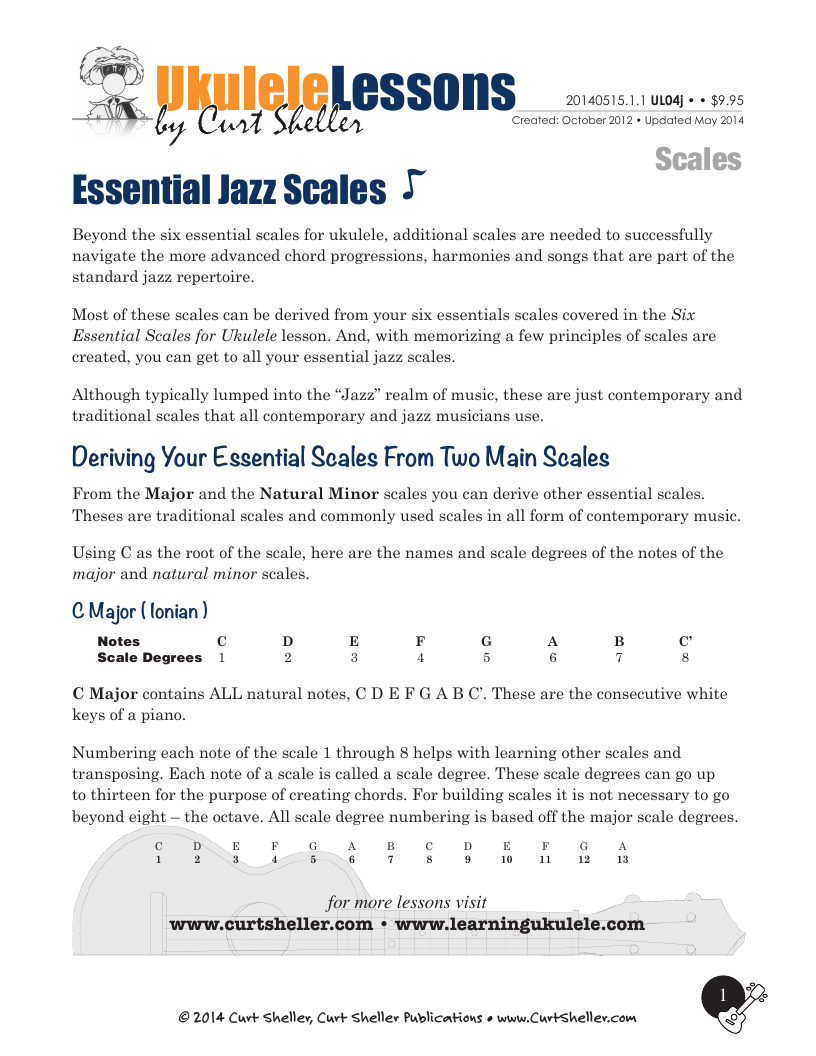
After you mastering the six essentials scales below and start to explore more advanced styles of music, especially jazz. There are a few more scales that are needed to cover the broader harmonic palette that a typical jazz tune draws from.
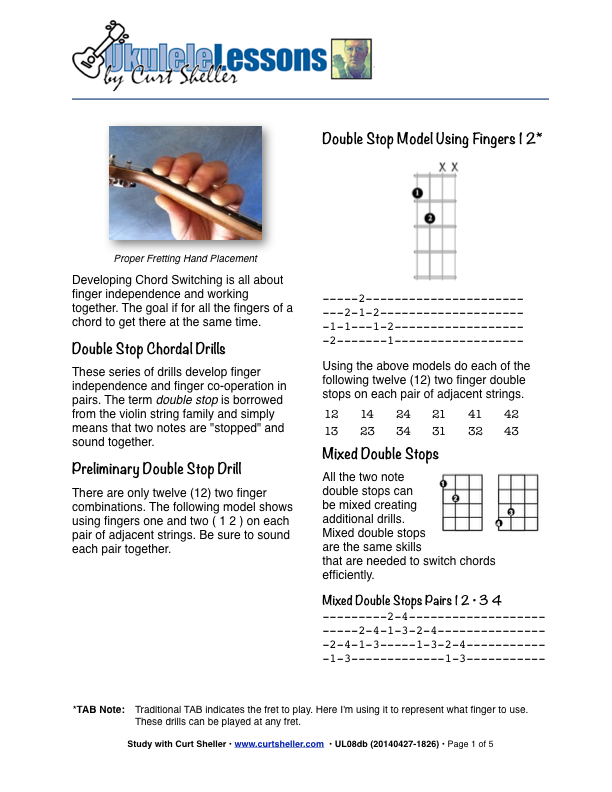
Switching chords are all about finger independence and working together. This can be developed using the "double stop" fingering drills presented in this lesson. A "double stop" is a term borrowed from violin technique where you are stopping two strings or two notes - an interval.
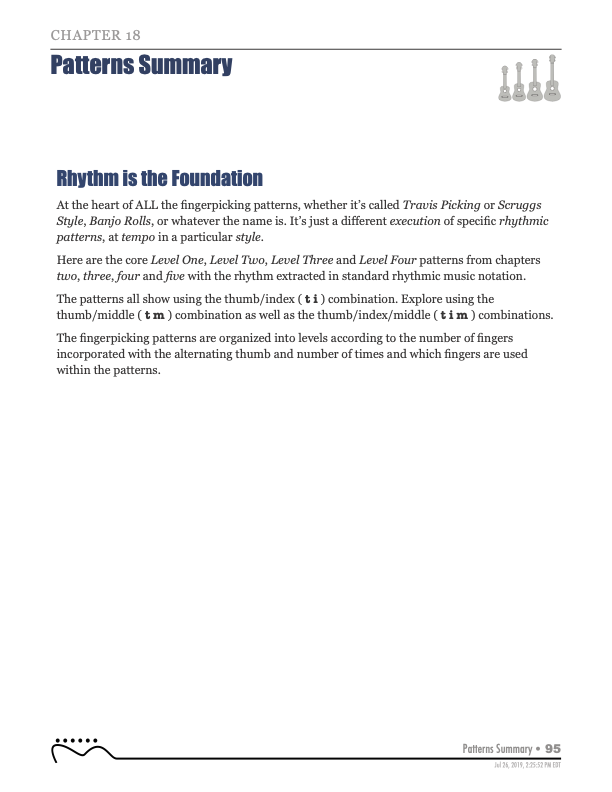
Summary of the core Alternating Thumb patterns from the Alternating Thumb Fingerpicking for Ukulele book.
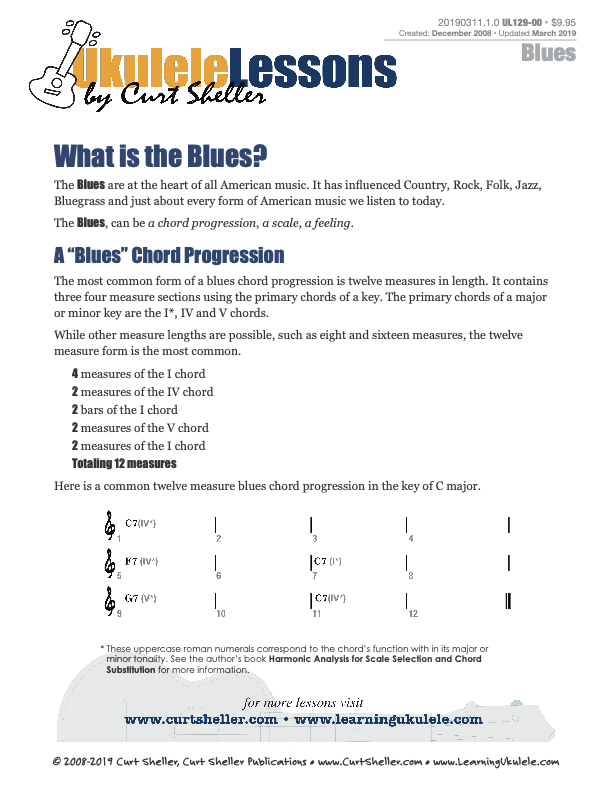
The Blues are at the heart of all American music. It has influenced Country, Rock, Folk, Jazz, Bluegrass and just about every form of American music we listen to today. The Blues - a chord progression, a scale, a feeling. This lesson presents an introduction to the blues progression and a couple of scale position of the pentatonic scale to get you started improvising.
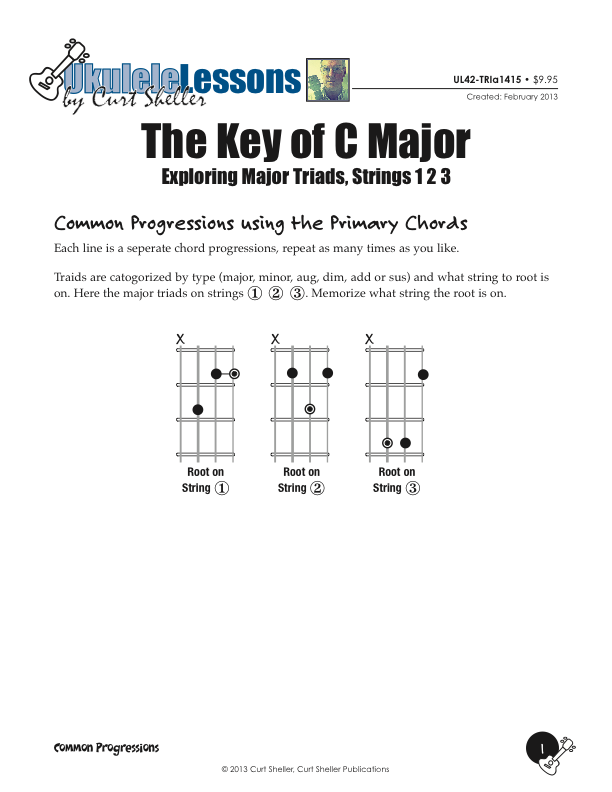
Building major triads using the primary chords of C major. Triads are one of the first chords that really bring to light the need to know the notes of the neck. This lesson shows the three voicings and the solutions for playing a common "1 4 1 5" progression using C, F and G triads on the string 1 2 3 set.
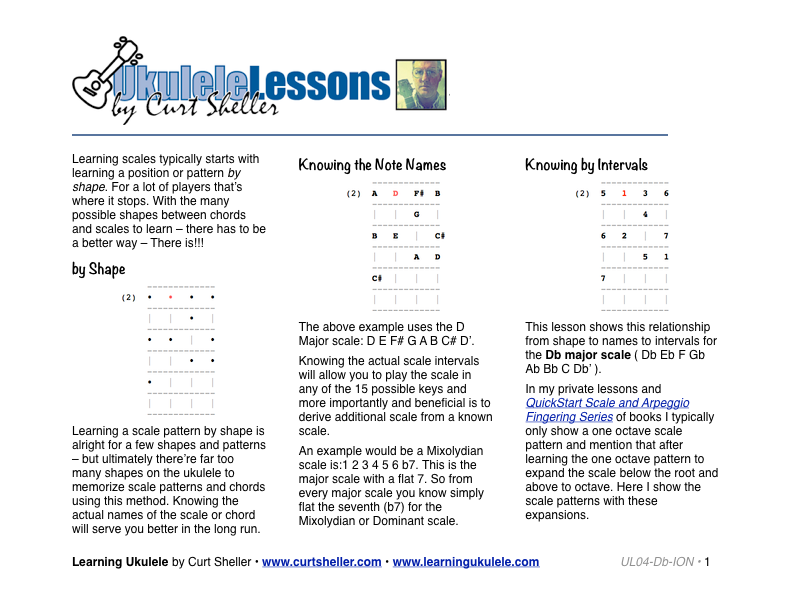
Essential DbMajor scale patterns for ukulele. Learning scales typically starts with learning a position or pattern by shape. For a lot of players that's where it stops. With the many possible shapes between chords and scales to learn – there has to be a better way – There is!!!
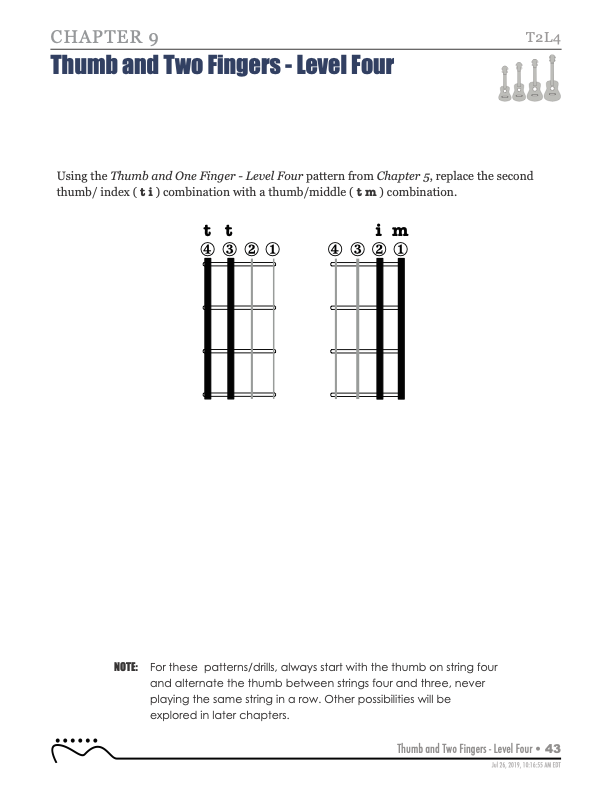
In this lesson we're introducing the middle finger to the fingerpicking patterns mastered in lesson/chapter five. There's only one pattern in common or cut time. this pattern is demonstarted on the four possible string orders.
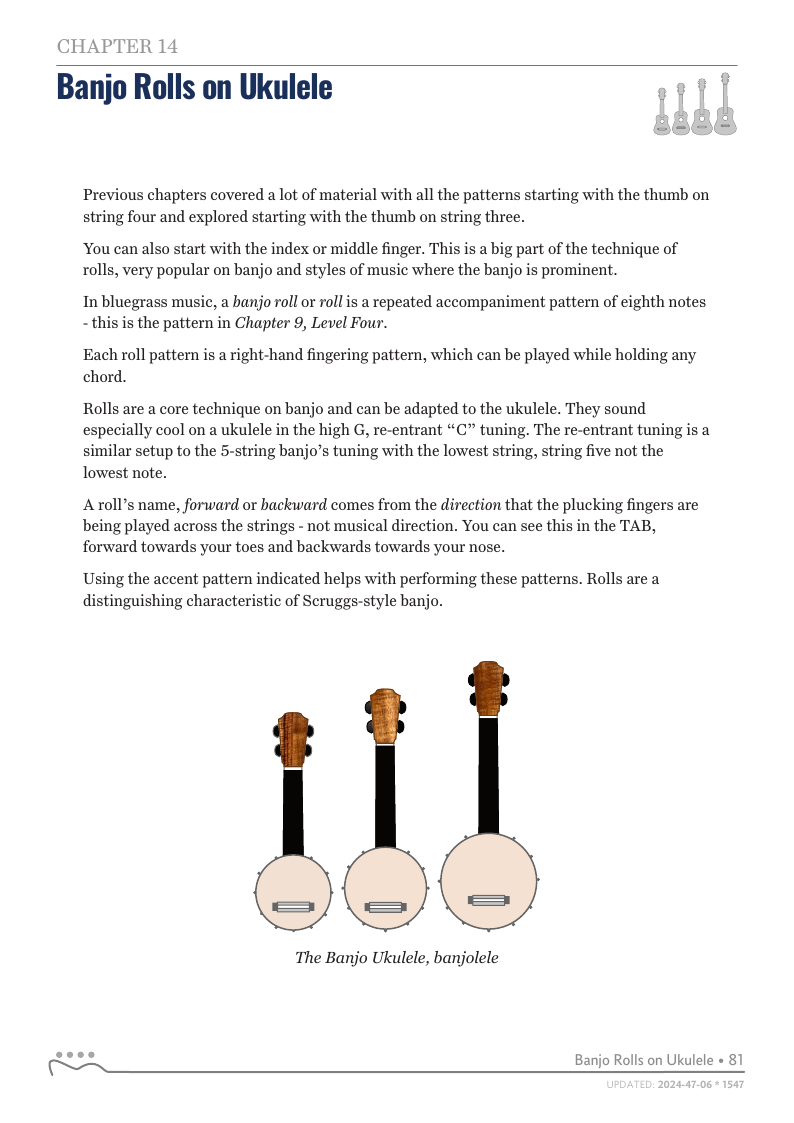
Exploring banjo rolls on ukulele. In bluegrass music, a banjo roll or roll is a repeated accompaniment pattern of eighth notes. Each roll pattern is a right hand fingering pattern, which can be played while holding any chord position.
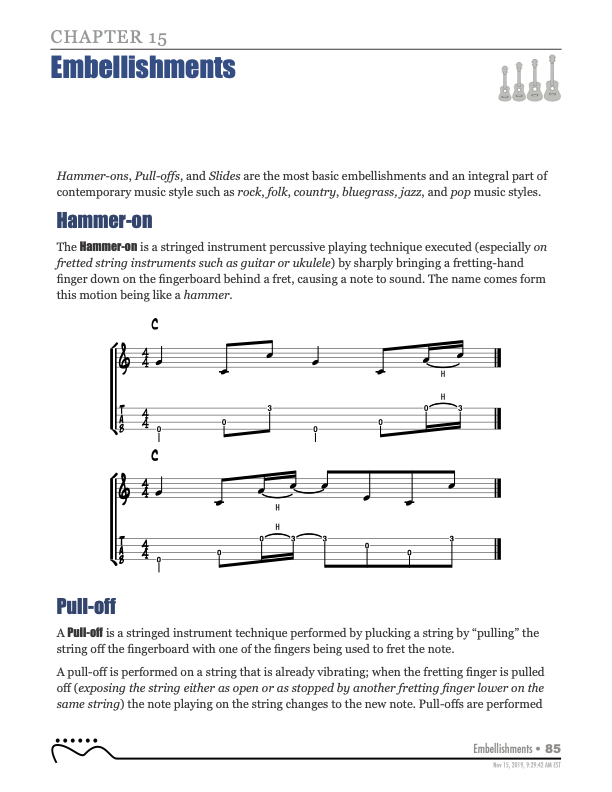
Hammer-ons, Pull-offs, and Slides are the most basic embellishments and an integral part of rock, folk, country, bluegrass, and pop music styles.
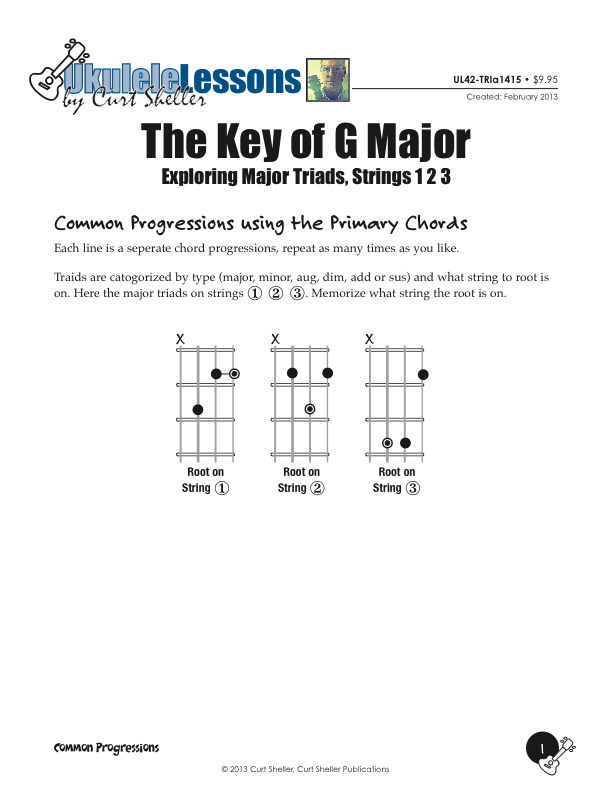
Exploring major triads using the primary chords of G major. Triads are one of the first chords that really bring to light the need to know the notes of the neck. This lesson shows the three voicings and the solutions for playing a common 1 4 1 5 progression using G, C and D triads on the string 1 2 3 set.
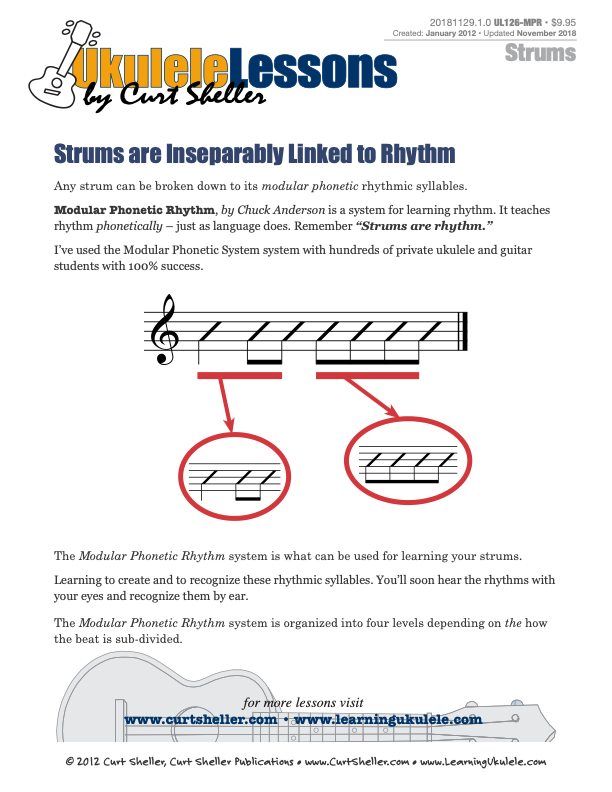
Strums are Inseparably Linked to Rhythm. Any strum can be broken down to its Modular Phonetic rhythmic syllables. Modular Phonetic Rhythm, by Chuck Anderson is a system for learning rhythm. It teaches rhythm phonetically - just as language does. Remember 'Strums ARE rhythm'
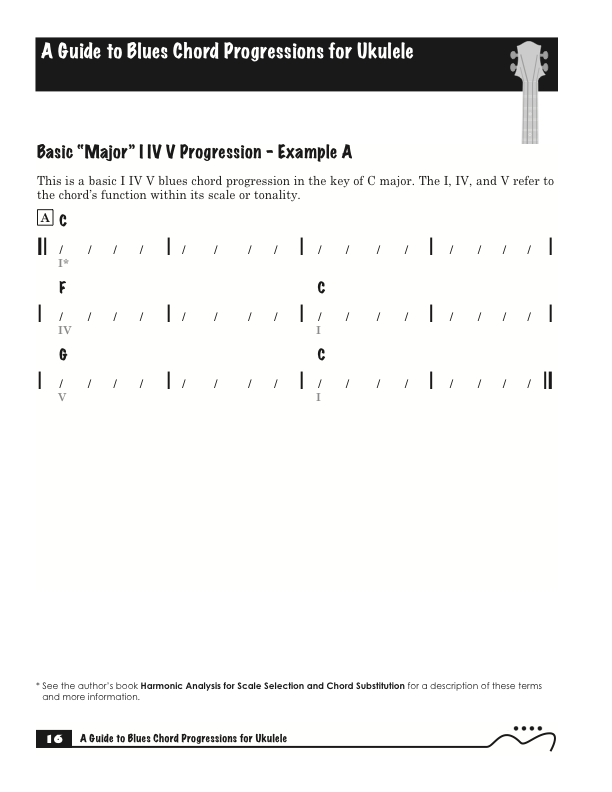
Example A blues progression from my book "A Guide To Blues Chord Progressions For Ukulele A To Z".
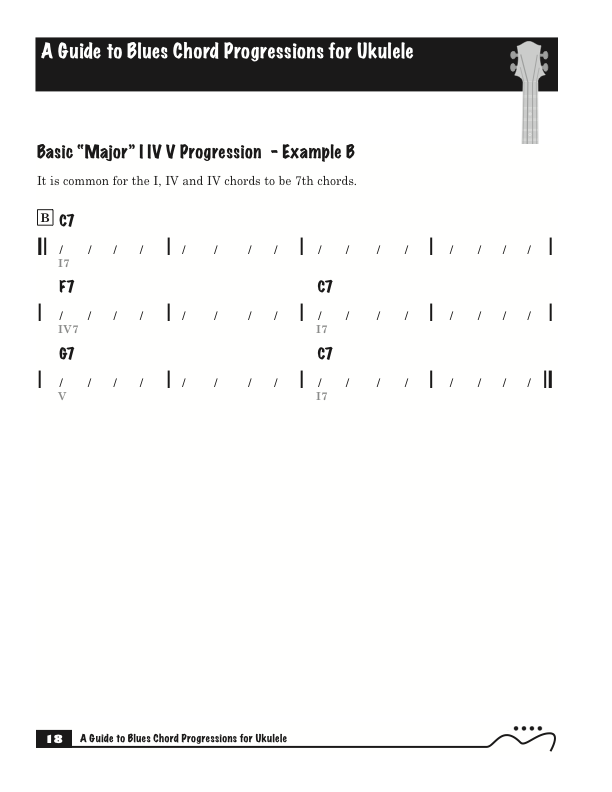
Example B blues progression from my book "A Guide To Blues Chord Progressions For Ukulele A To Z".
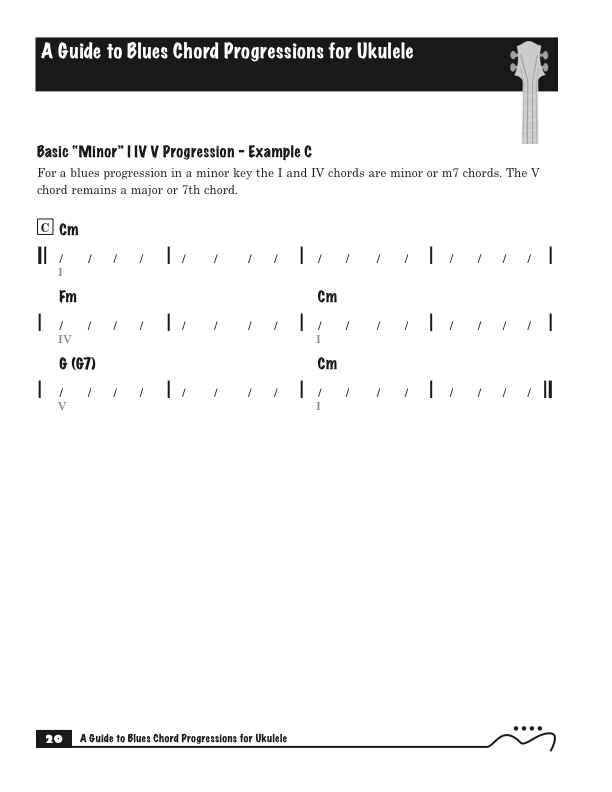
Example C blues progression from my book "A Guide To Blues Chord Progressions For Ukulele A To Z".
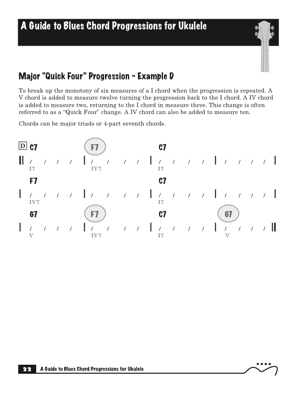
Example D blues progression from my book "A Guide To Blues Chord Progressions For Ukulele A To Z".

Example E blues progression from my book "A Guide To Blues Chord Progressions For Ukulele A To Z".
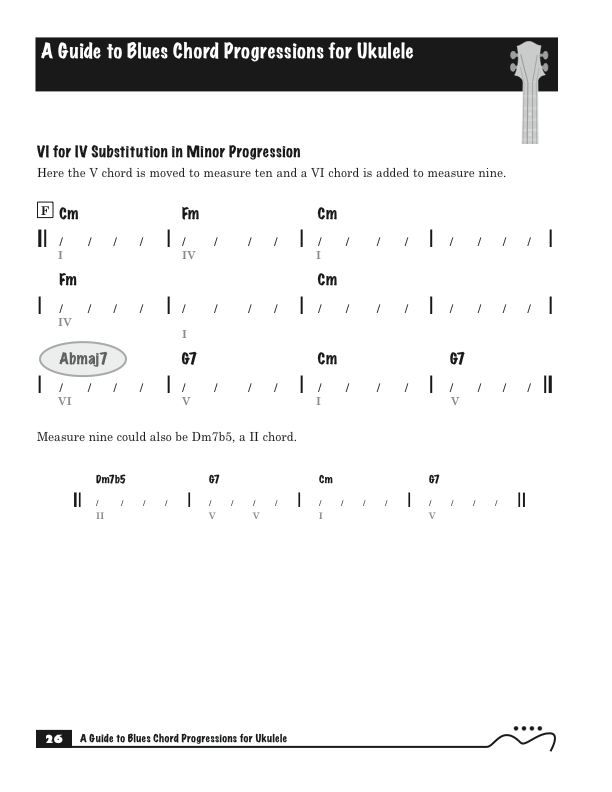
Example F blues progression from my book "A Guide To Blues Chord Progressions For Ukulele A To Z".
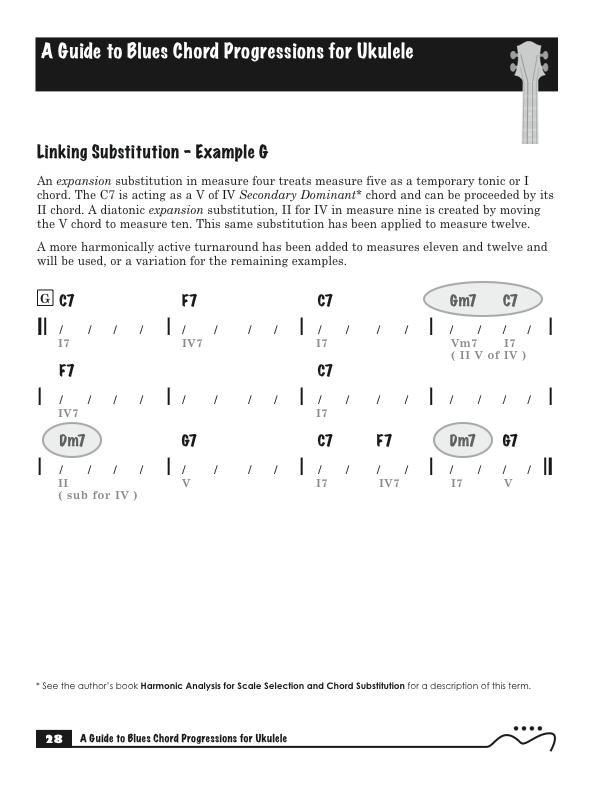
Example G blues progression from my book "A Guide To Blues Chord Progressions For Ukulele A To Z".
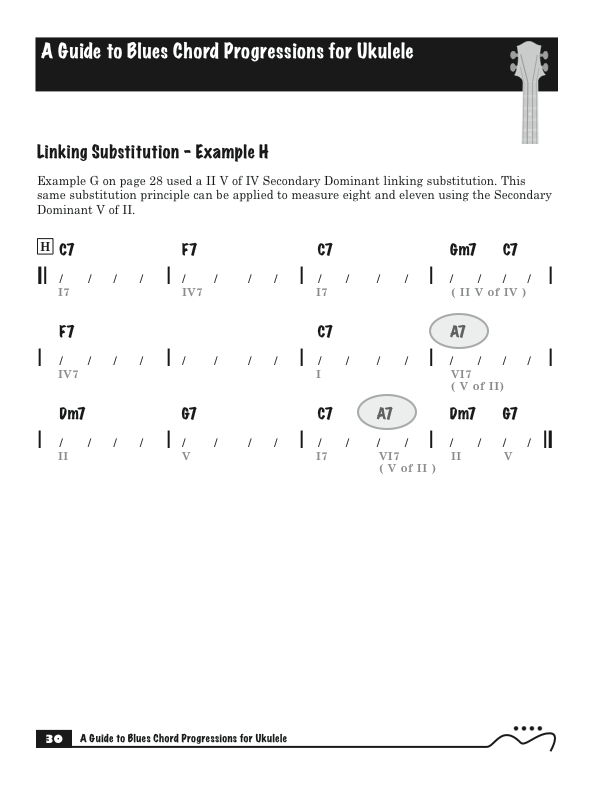
Example H blues progression from my book "A Guide To Blues Chord Progressions For Ukulele A To Z".
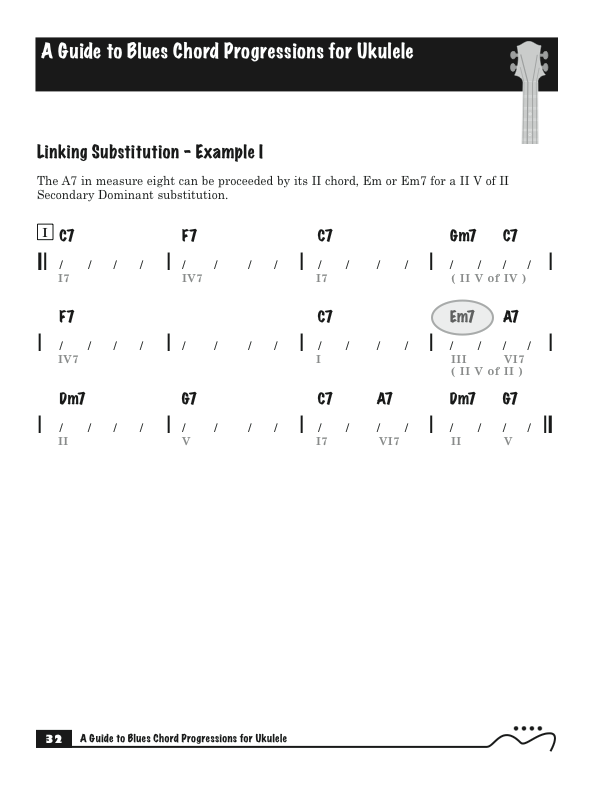
Example I blues progression from my book "A Guide To Blues Chord Progressions For Ukulele A To Z".
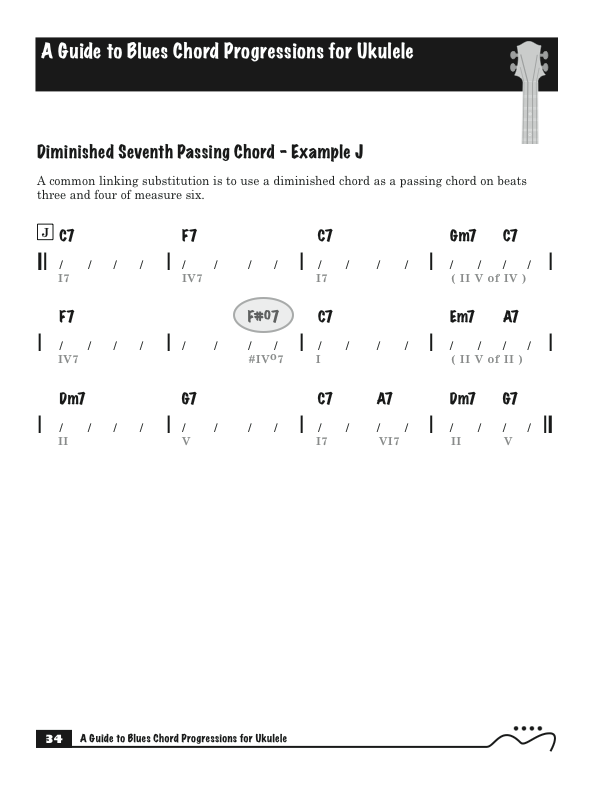
Example J blues progression from my book "A Guide To Blues Chord Progressions For Ukulele A To Z".
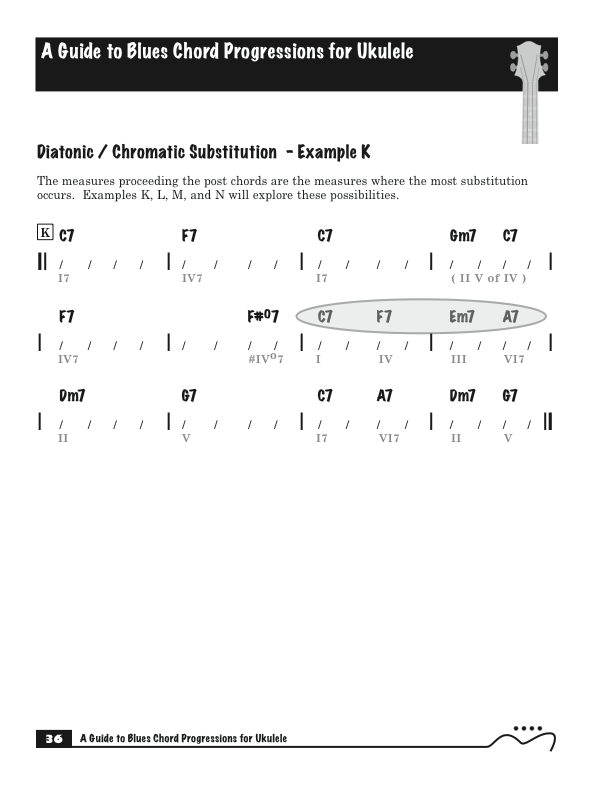
Example L blues progression from my book "A Guide To Blues Chord Progressions For Ukulele A To Z".
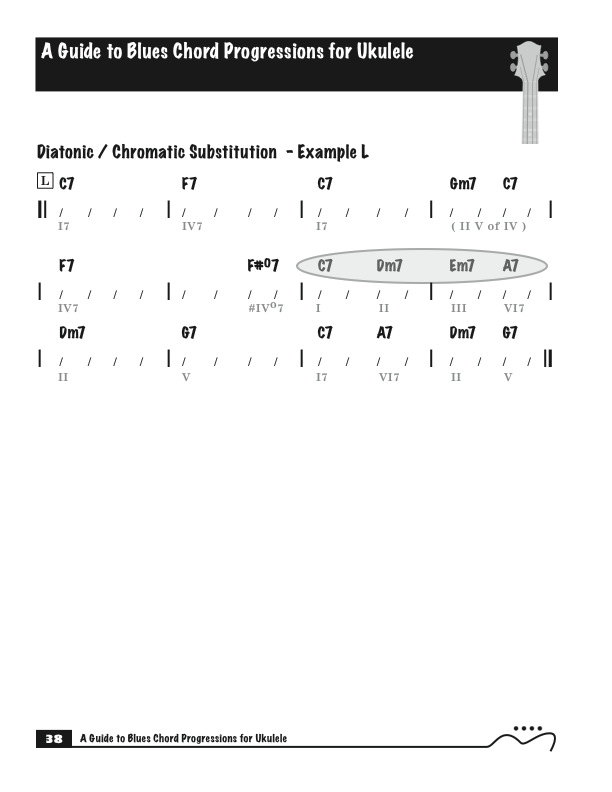
Example L blues progression from my book "A Guide To Blues Chord Progressions For Ukulele A To Z".

Example M blues progression from my book "A Guide To Blues Chord Progressions For Ukulele A To Z".
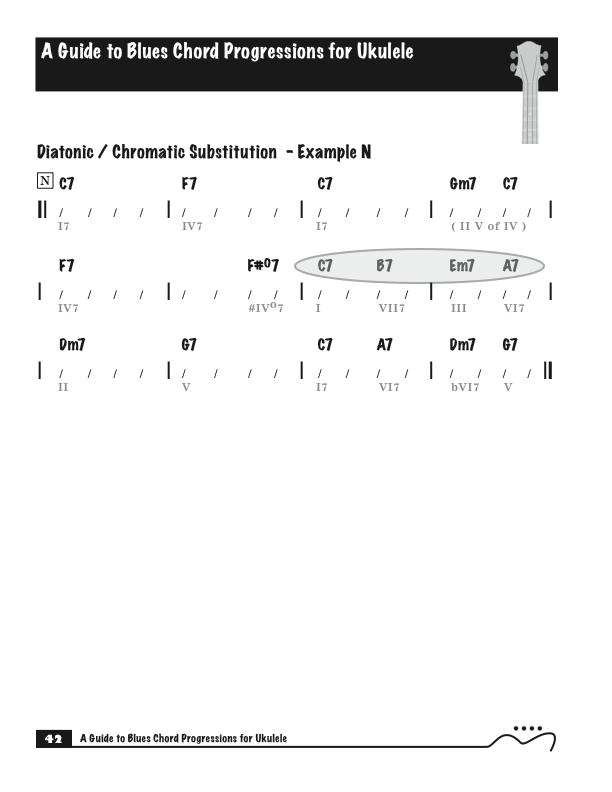
Example N blues progression from my book "A Guide To Blues Chord Progressions For Ukulele A To Z".
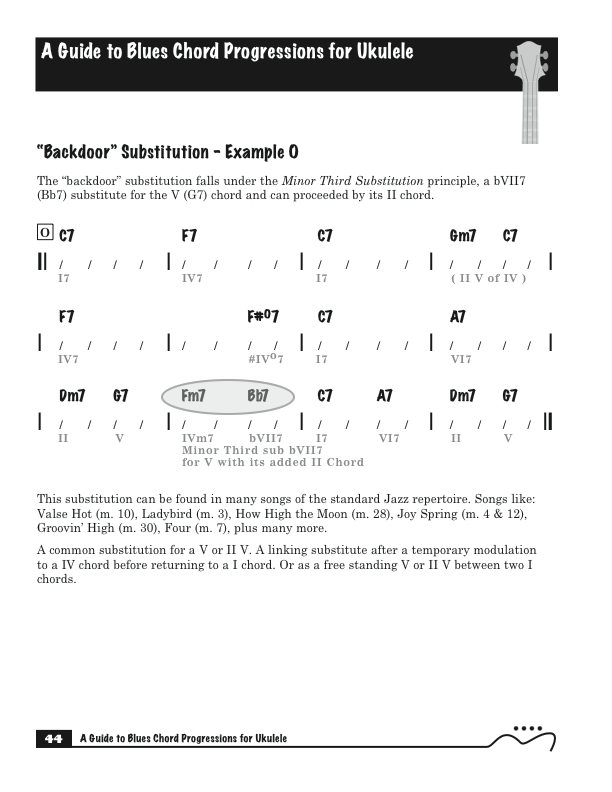
Example O blues progression from my book "A Guide To Blues Chord Progressions For Ukulele A To Z".
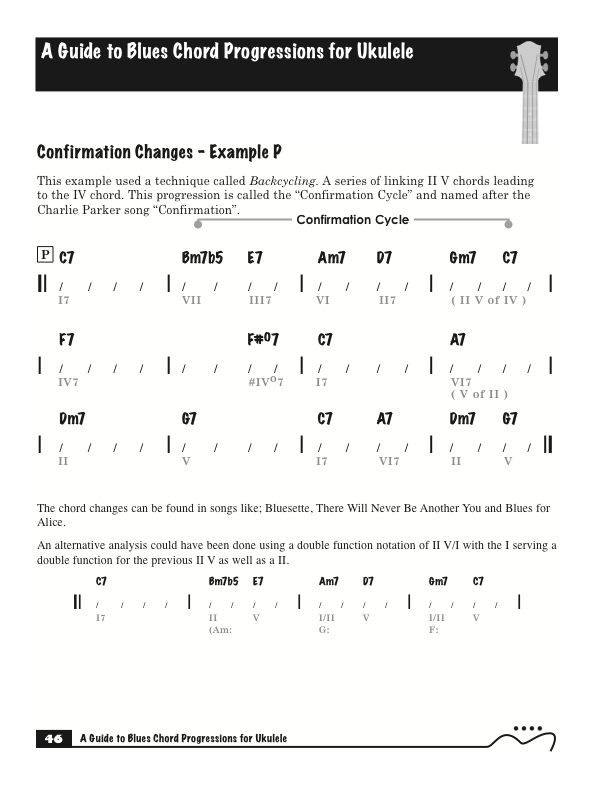
Example P blues progression from my book "A Guide To Blues Chord Progressions For Ukulele A To Z".
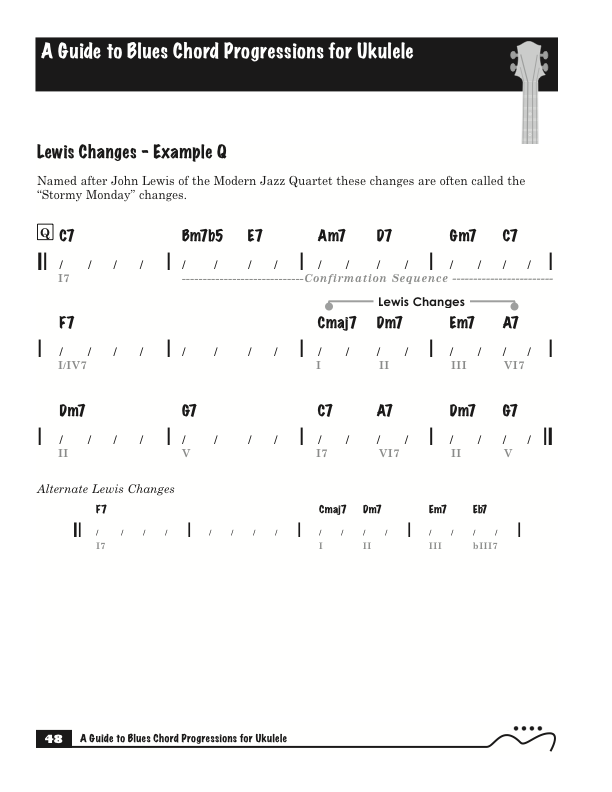
Example Q blues progression from my book "A Guide To Blues Chord Progressions For Ukulele A To Z".
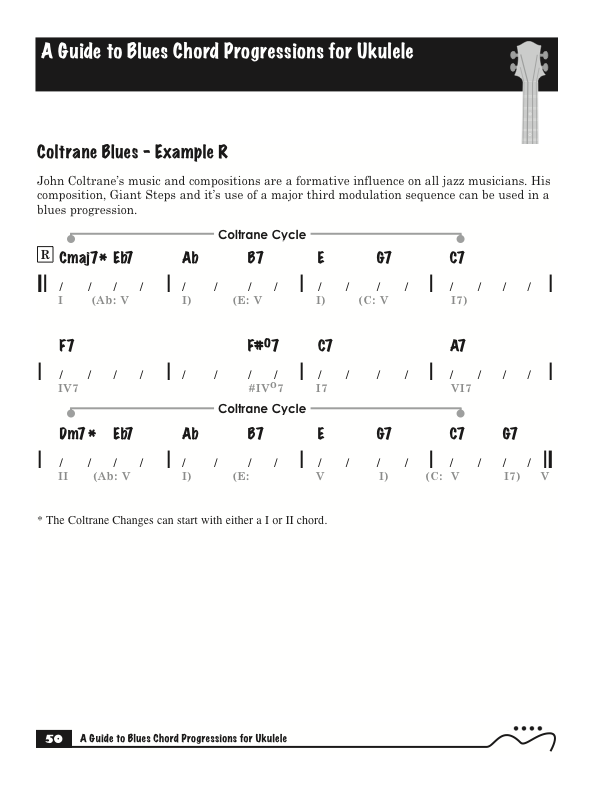
Example R blues progression from my book "A Guide To Blues Chord Progressions For Ukulele A To Z".
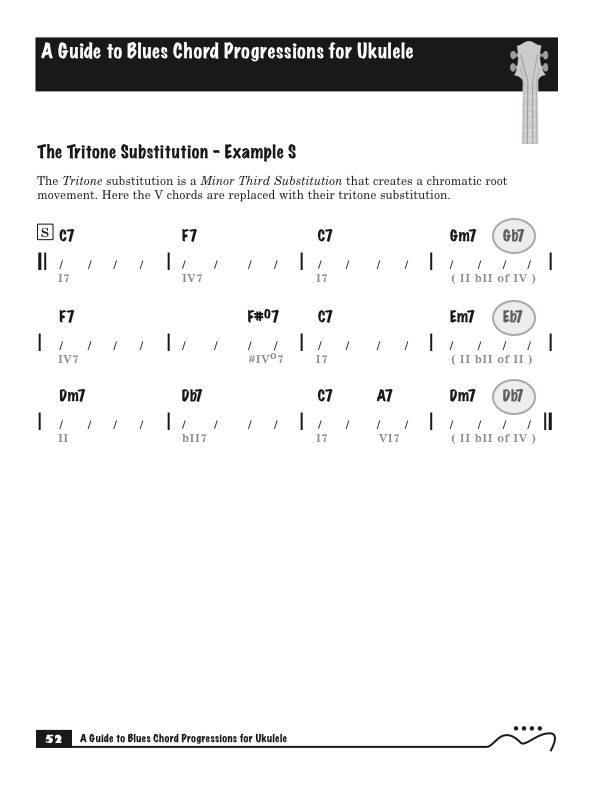
Example S blues progression from my book "A Guide To Blues Chord Progressions For Ukulele A To Z".
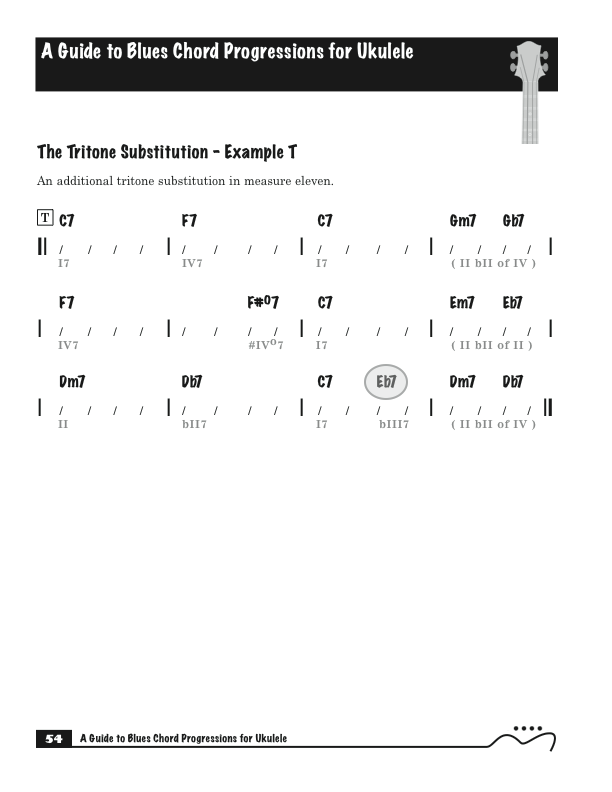
Example T blues progression from my book "A Guide To Blues Chord Progressions For Ukulele A To Z".
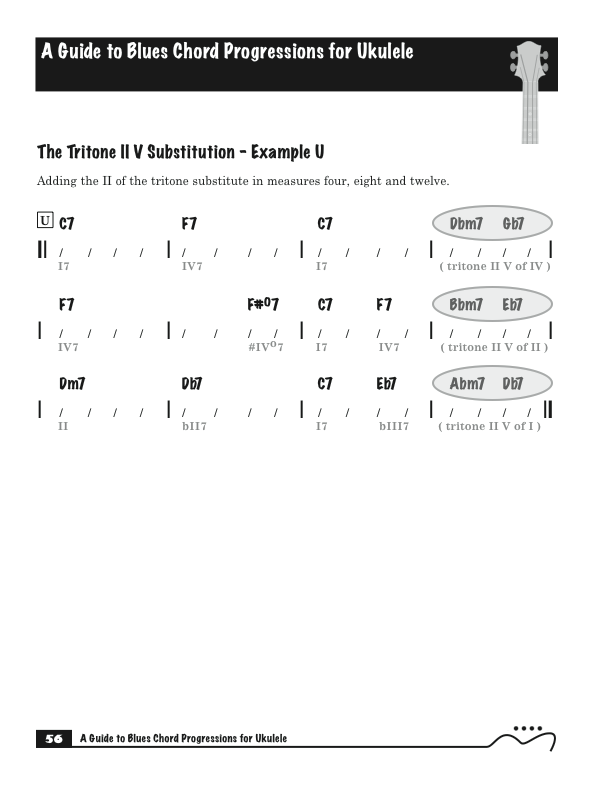
Example U blues progression from my book "A Guide To Blues Chord Progressions For Ukulele A To Z".
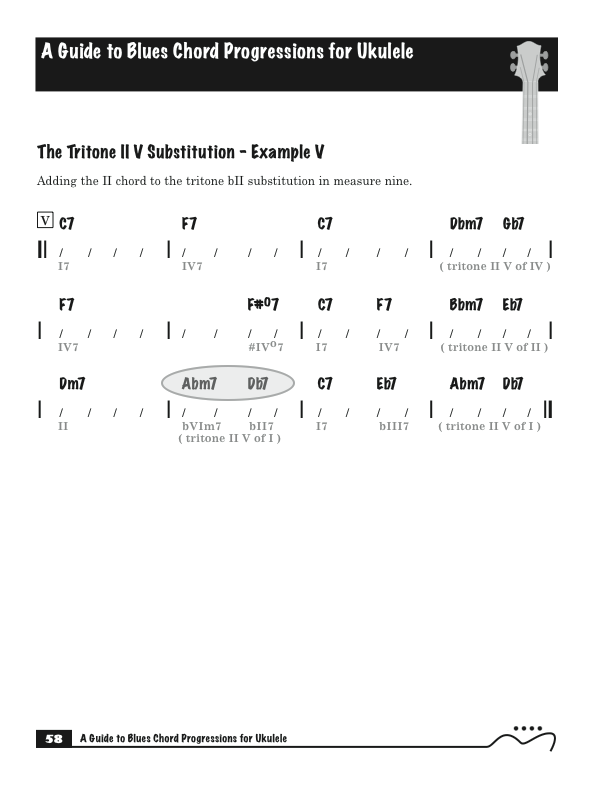
Example V blues progression from my book "A Guide To Blues Chord Progressions For Ukulele A To Z".
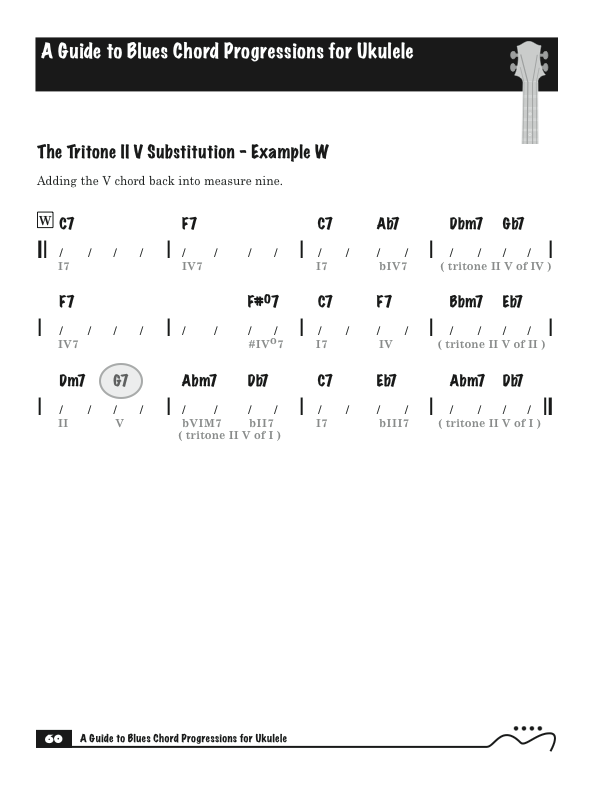
Example W blues progression from my book "A Guide To Blues Chord Progressions For Ukulele A To Z".
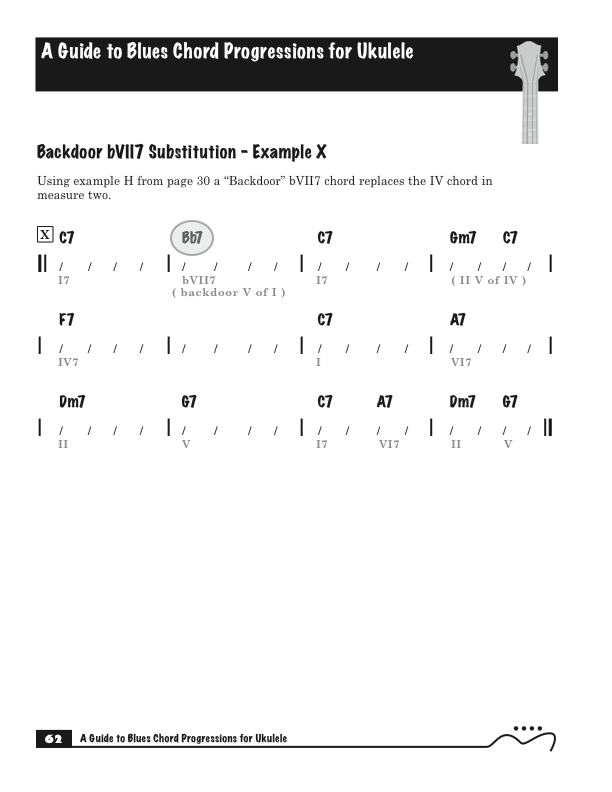
Example X blues progression from my book "A Guide To Blues Chord Progressions For Ukulele A To Z".
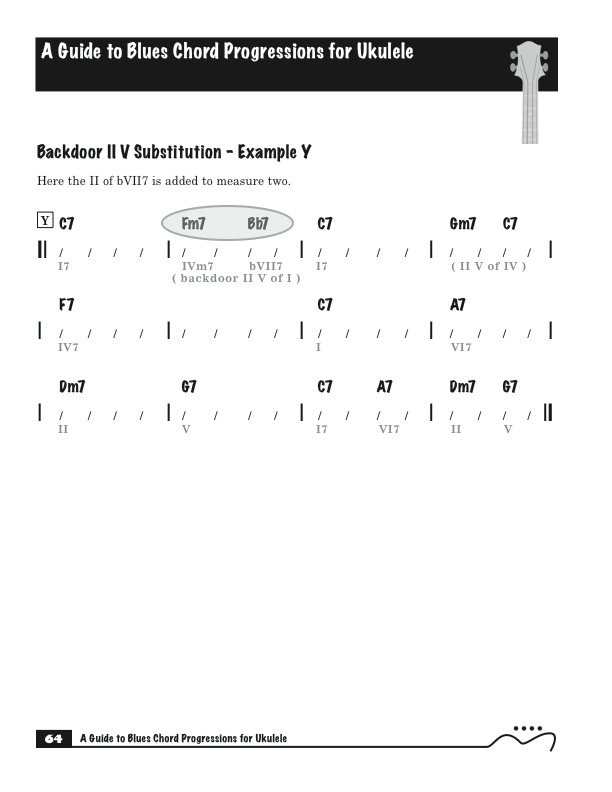
Example Y blues progression from my book "A Guide To Blues Chord Progressions For Ukulele A To Z".

Example Z blues progression from my book "A Guide To Blues Chord Progressions For Ukulele A To Z".
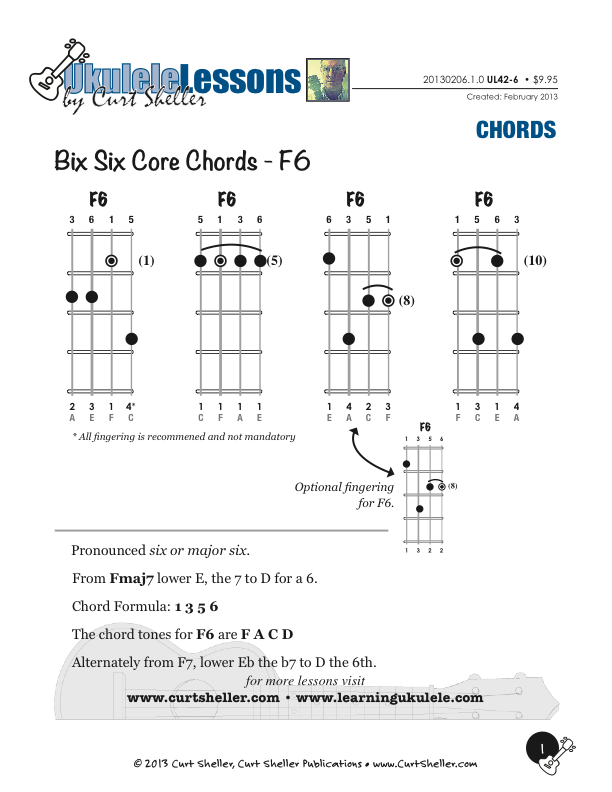
The Big Six Core Chords: "F6". This is the Level II of your core 4-part "Jazz" chords. The F6 is a 1 3 5 6 of the major scale, based on the root of the chord. A major 6th chord can be derived either from a seventh or major seventh chord. From a seventh chord lower the flat seventh one fret. From a major seventh chord lower the natural seventh two frets.
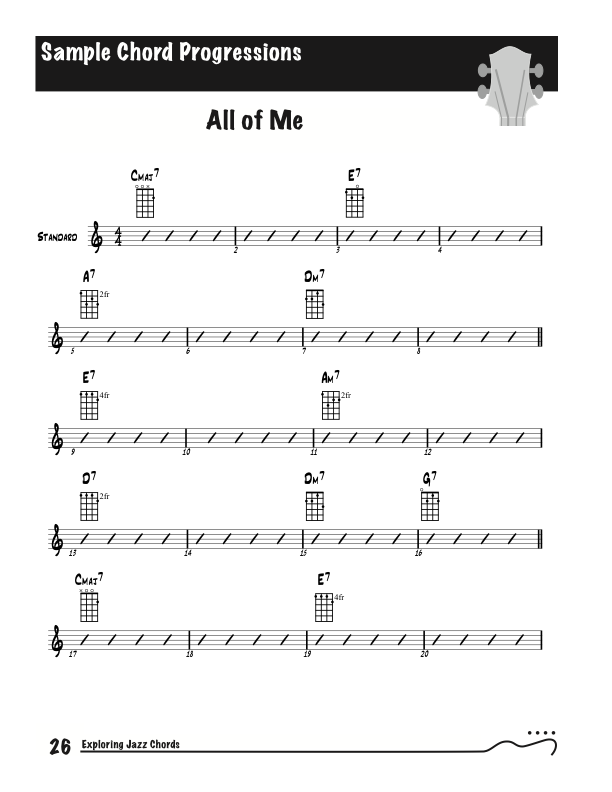
Using the jazz standard "All of Me" to explore jazz chords on ukulele.
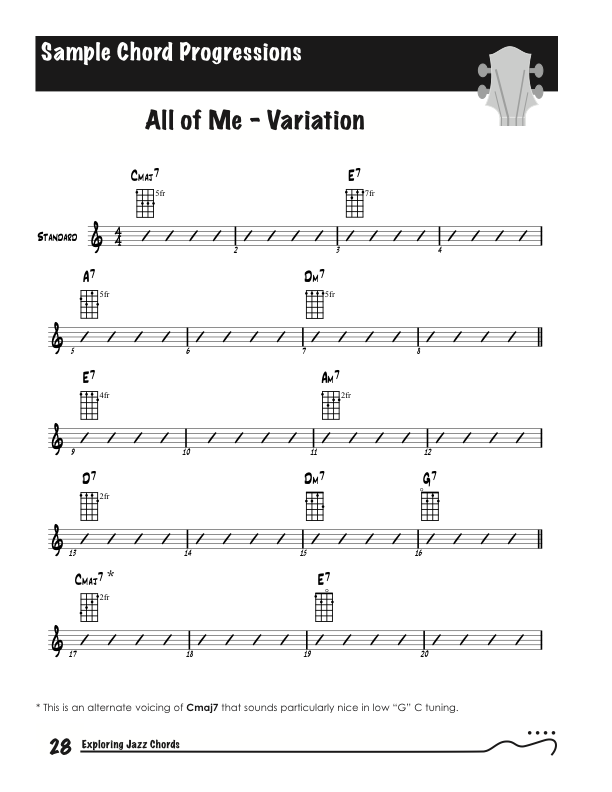
Using the jazz standard "All of Me" to explore jazz chords on ukulele.
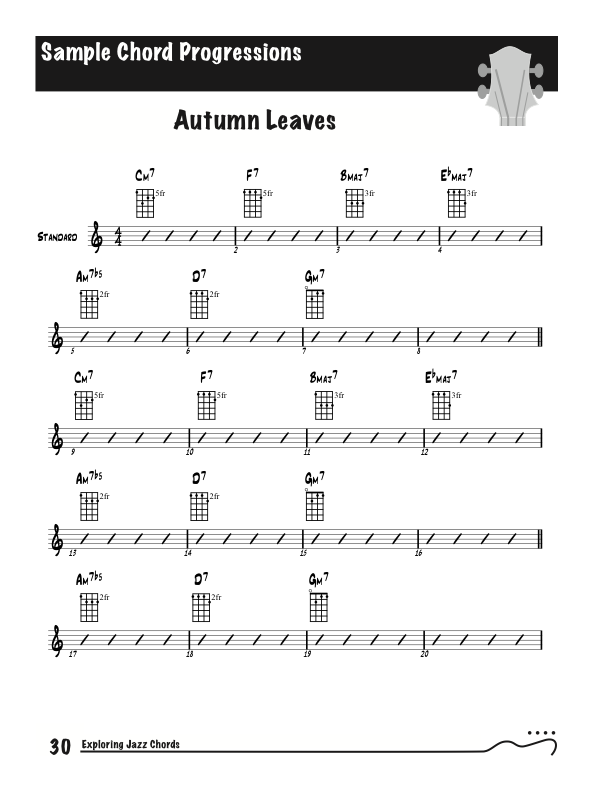
Using the jazz standard "Autumn Leaves" to explore jazz chords on ukulele.
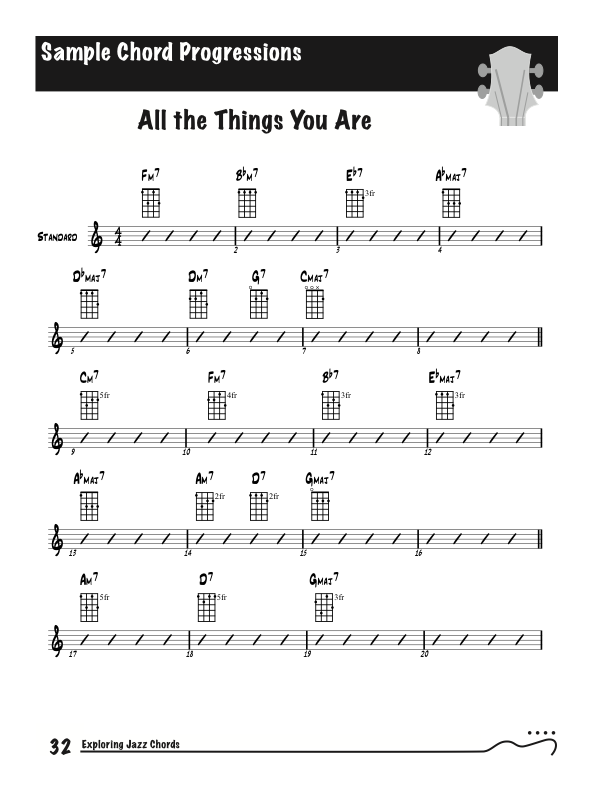
Using the jazz standard "All the Things You Are" to explore jazz chords on ukulele.
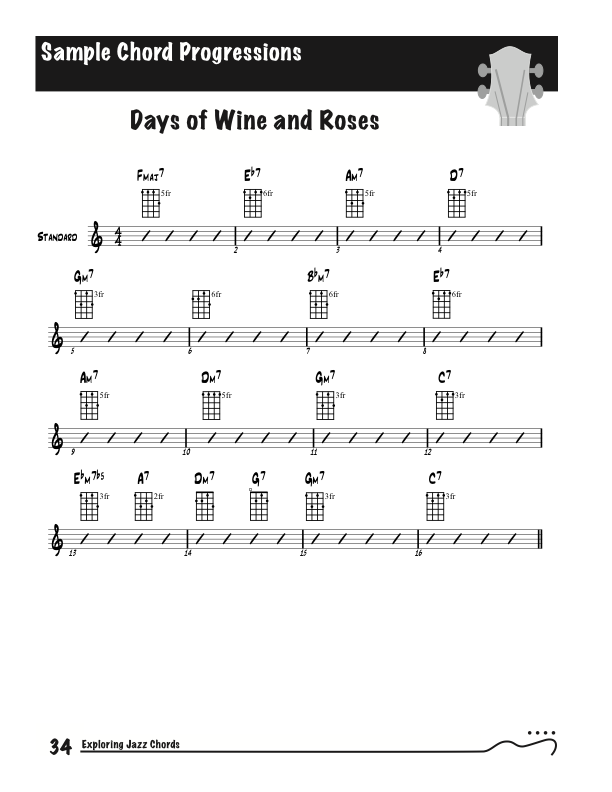
Using the jazz standard "The Days of Wine and Roses" to explore jazz chords on ukulele.
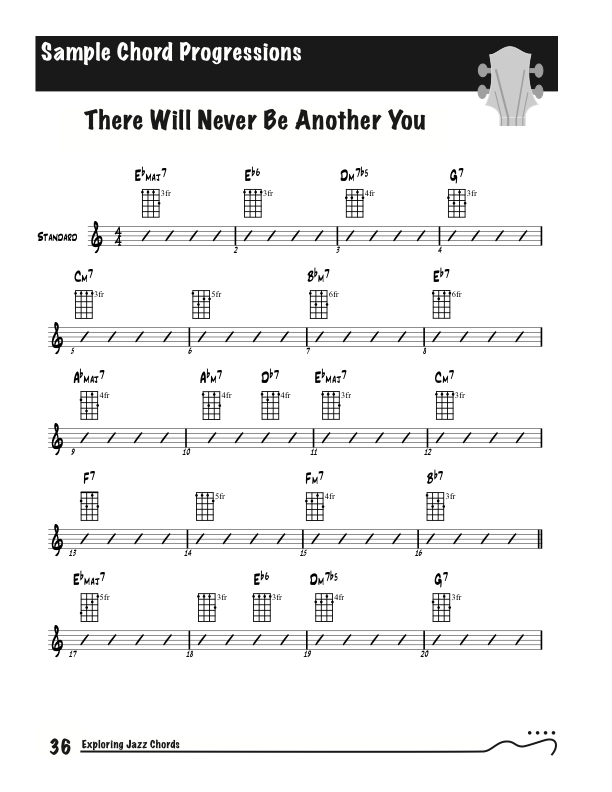
Using the jazz standard "There Will Never Be Another You" to explore jazz chords on ukulele.
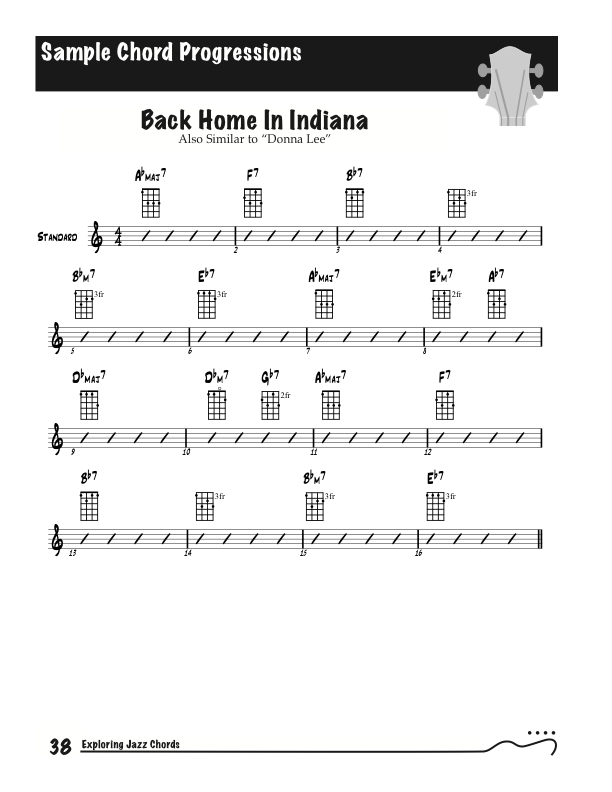
Using the jazz standard "Back Home in Indiana" to explore jazz chords on ukulele.
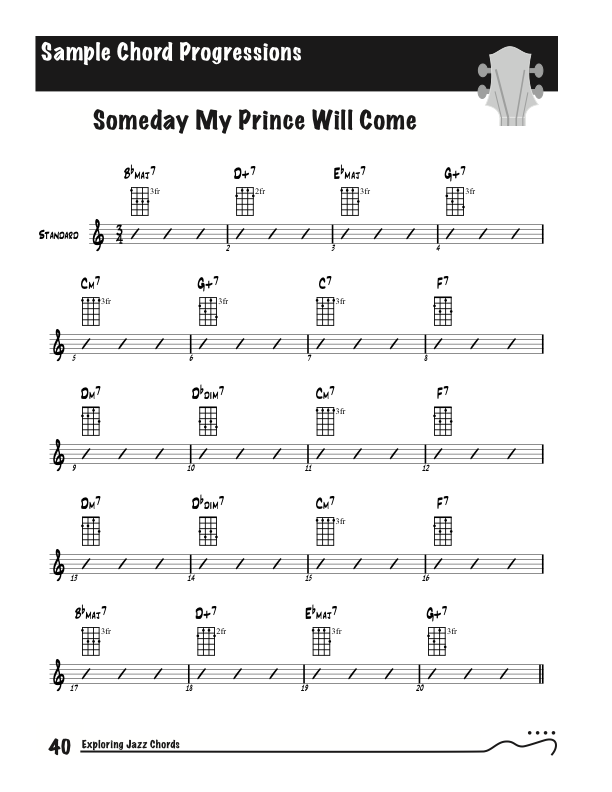
Using the jazz standard "Someday My Prince Will Come" to explore jazz chords on ukulele.
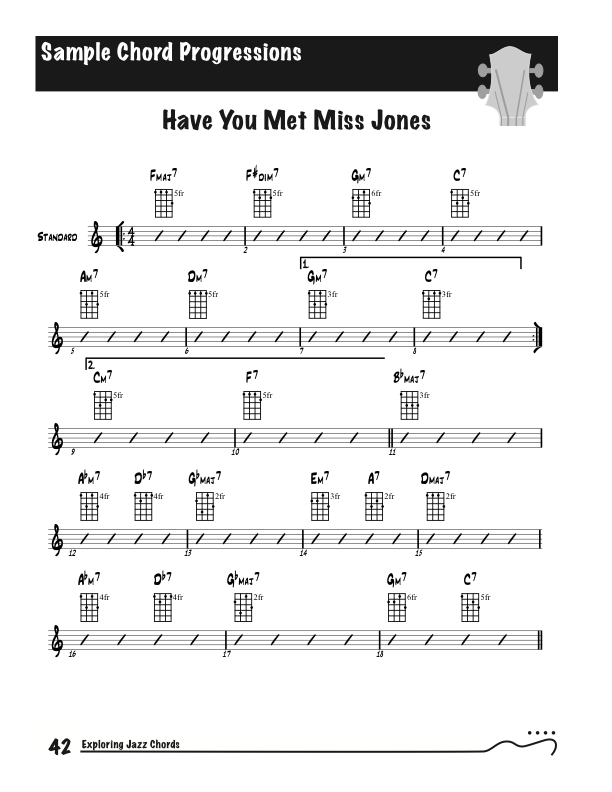
Using the jazz standard "Have You Met Miss Jones" to explore jazz chords on ukulele.
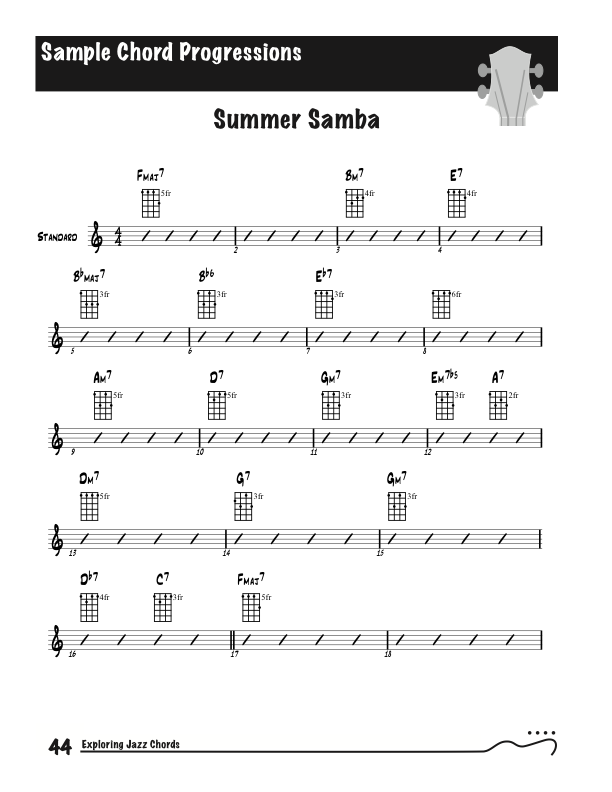
Using the jazz standard "Summer Samba" to explore jazz chords on ukulele.

Using the jazz standard "Sweet Georgia Brown" to explore jazz chords on ukulele.
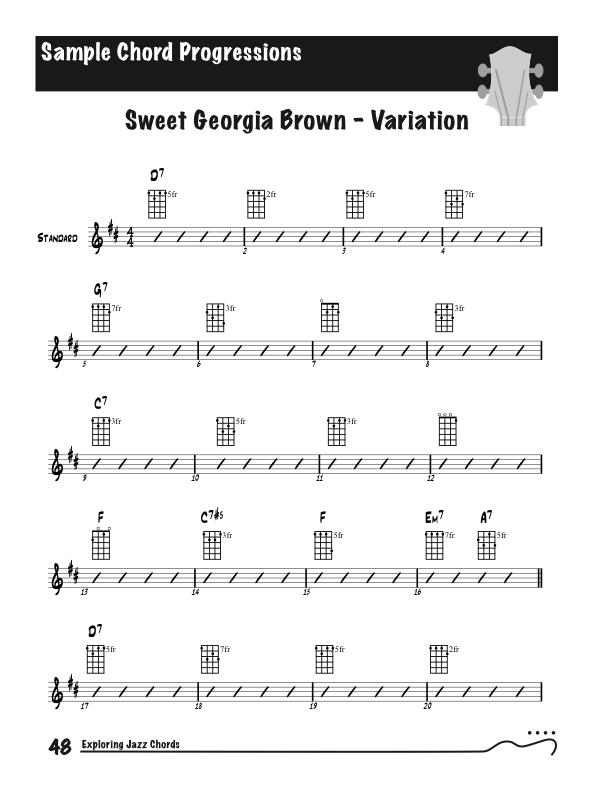
A variation of the previous lessons using the jazz standard "Sweet Georgia Brown" to explore jazz chords on ukulele.
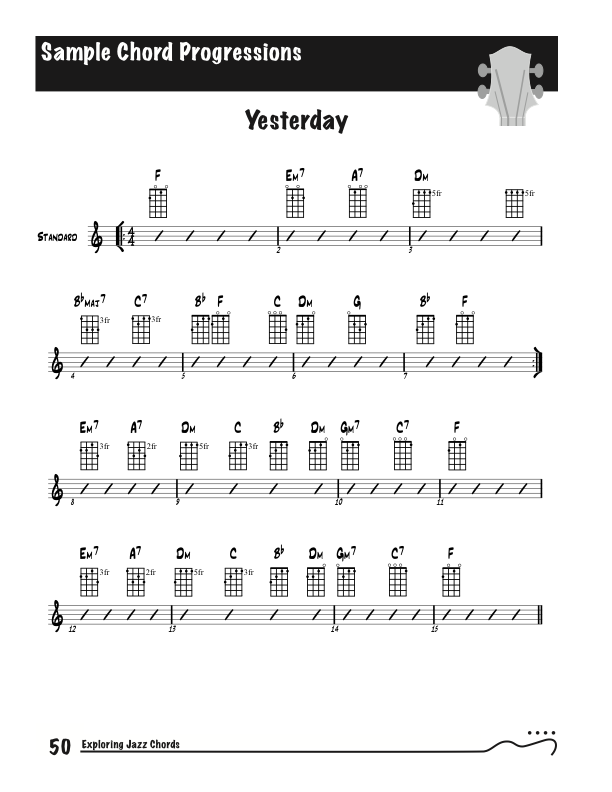
Using the classic Beatles cone by Paul McCartney "Yesterday" to explore jazz chords on ukulele.
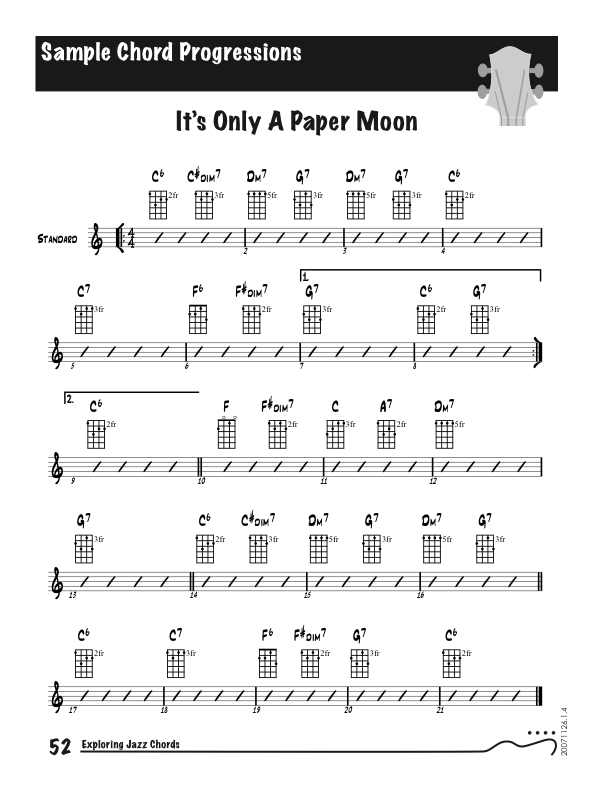
Using the jazz standard "It's Only a Paper Moon" to explore jazz chords on ukulele.
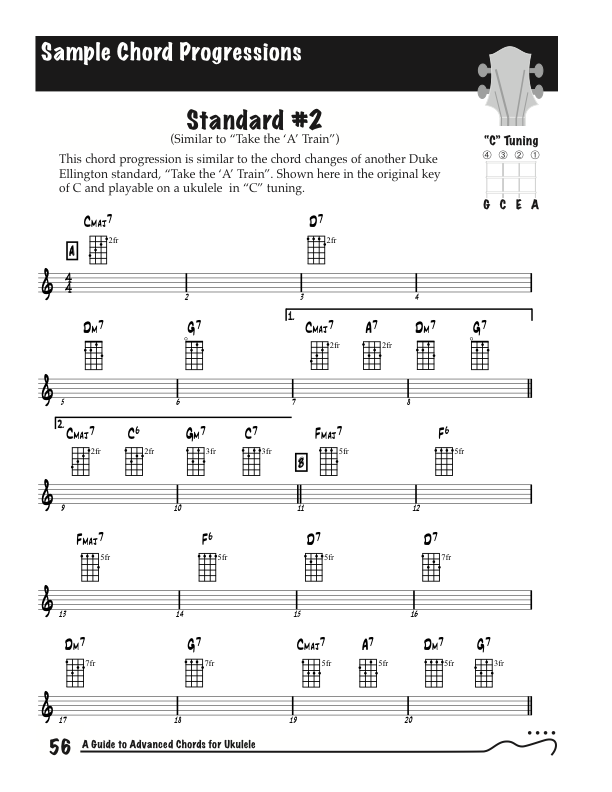
Using the jazz standard "Take the A Train" to explore jazz chords on ukulele.
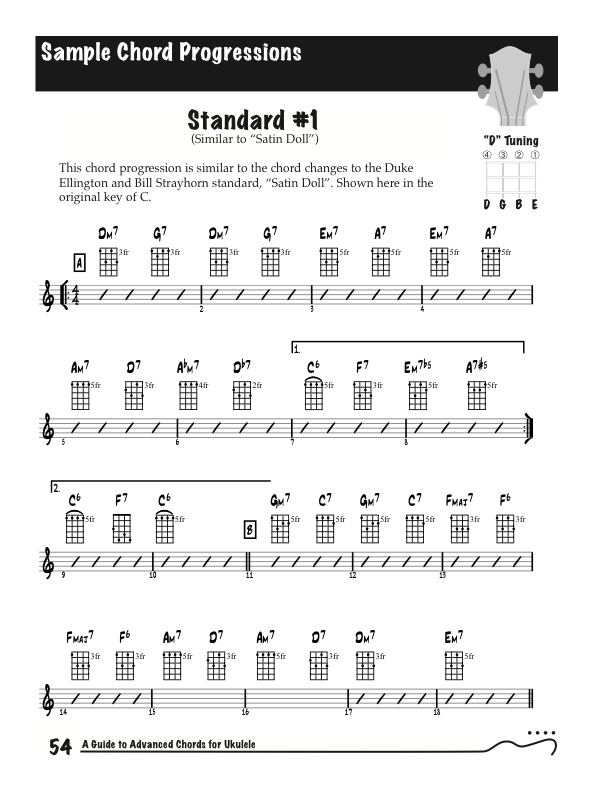
Using the jazz standard "Satin Doll" to explore jazz chords on ukulele. This also a great song for an introduction and exploring the very common, "II V" harmonic cell.
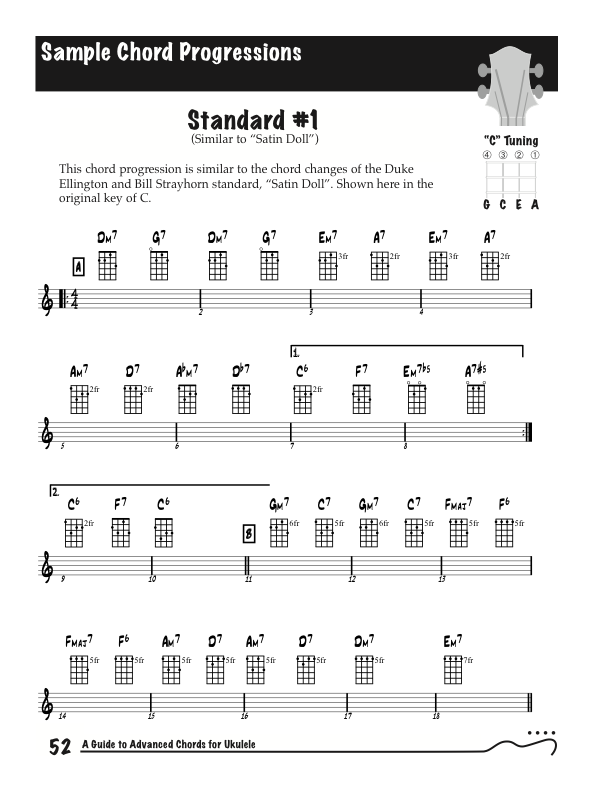
A variation using the jazz standard Satin Doll to explore jazz chords on ukulele.
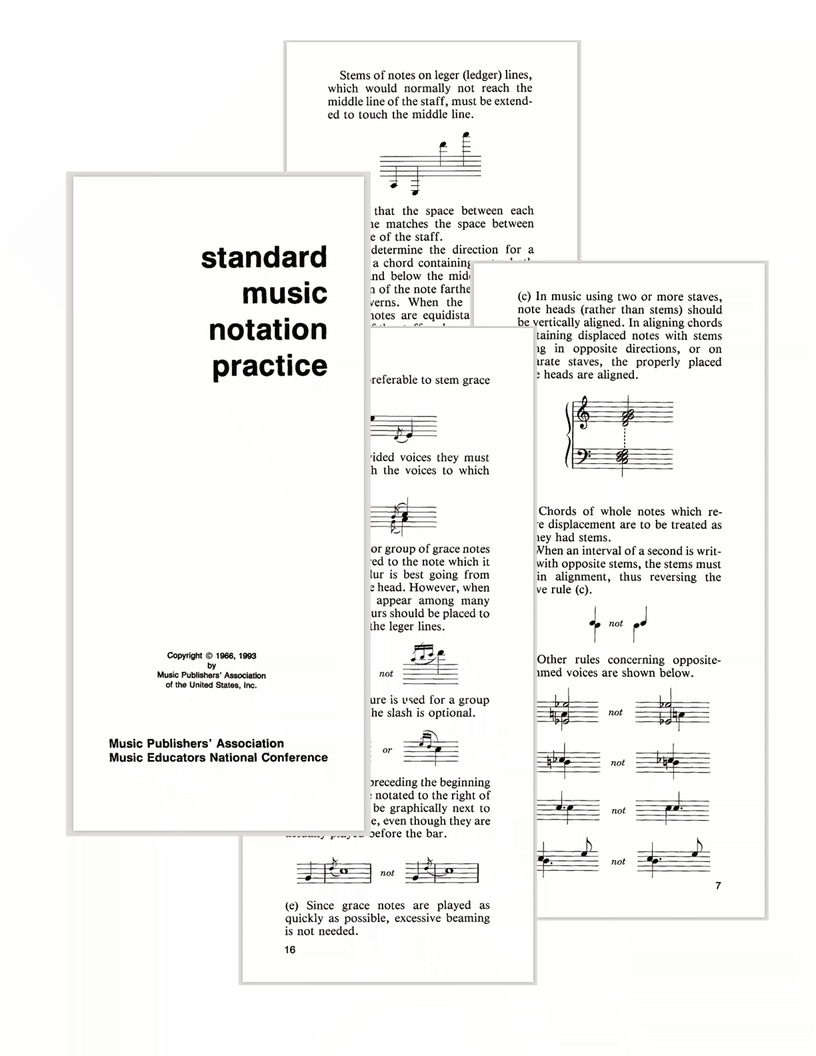
Music notation or musical notation refers to various systems of writing music. Diverse systems of musical notation have developed in various cultures. In fact, many cultures simply do not notate their music in any form.
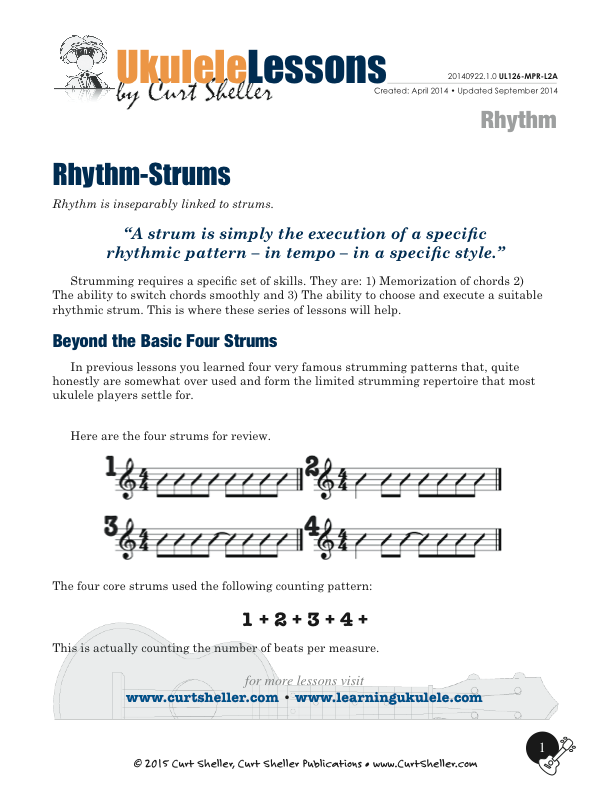
Level II Rhythmic Syllables 1 of 6 and 2 of 6 from the Modular Phonetic Rhythm, The Foundation and Workbook 1 book.
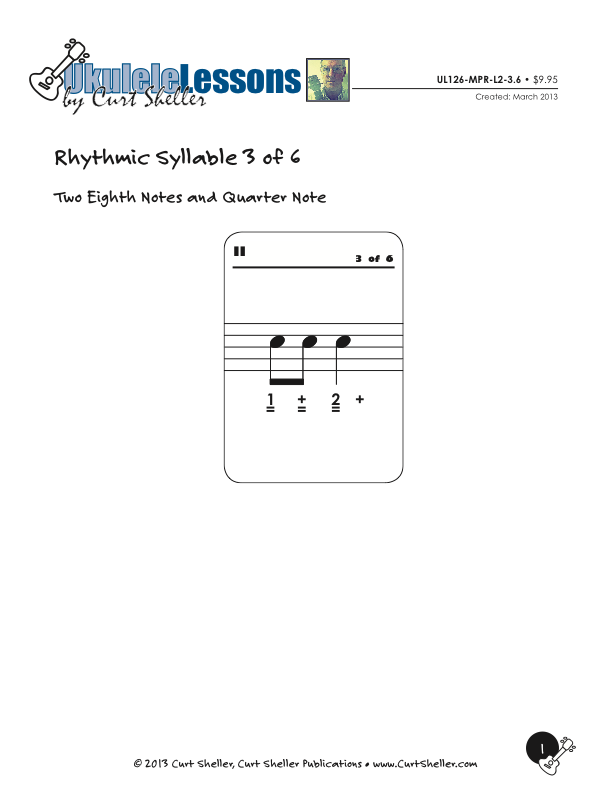
Level II Rhythmic Syllables 3 of 6 from the Modular Phonetic Rhythm, The Foundation and Workbook 1 book.
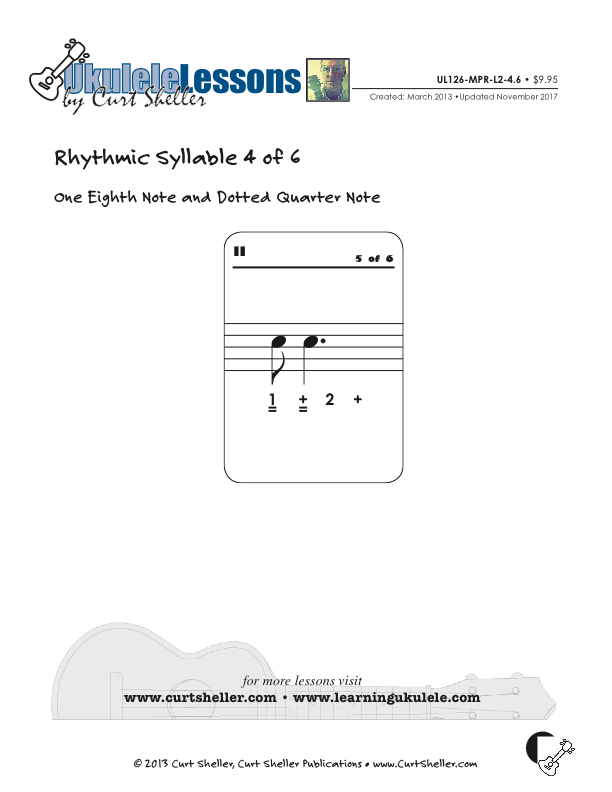
Level II Rhythmic Syllables 4 of 6 from the Modular Phonetic Rhythm, The Foundation and Workbook 1 book.
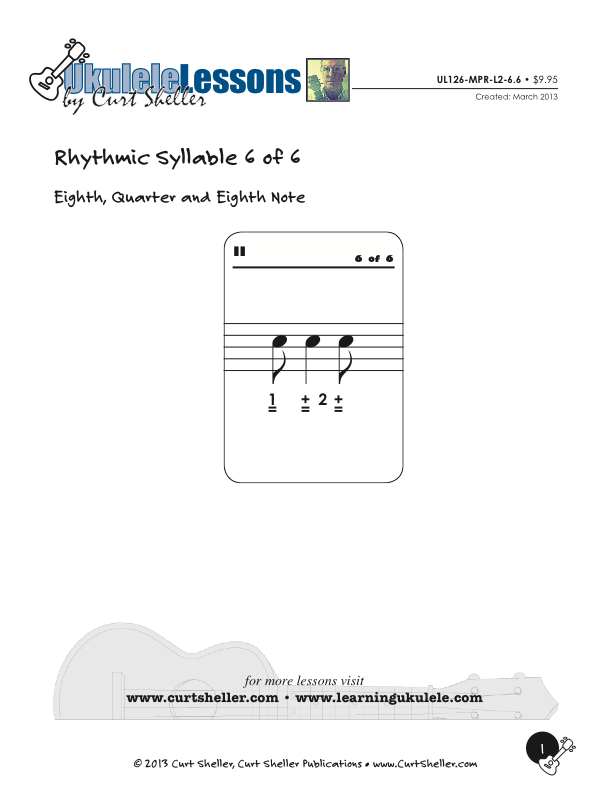
Level II Rhythmic Syllables 6 of 6 from the Modular Phonetic Rhythm, The Foundation and Workbook 1 book.
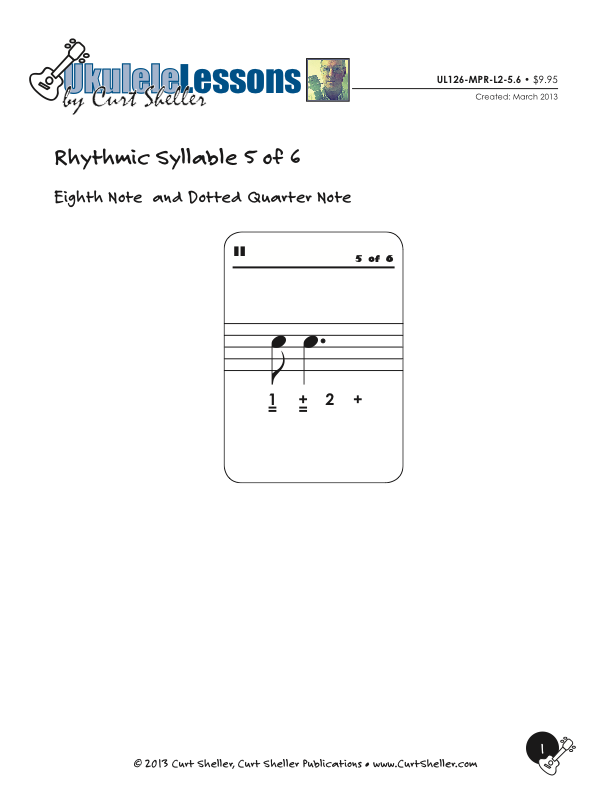
Level II Rhythmic Syllables 5 of 6 from the Modular Phonetic Rhythm, The Foundation and Workbook 1 book.
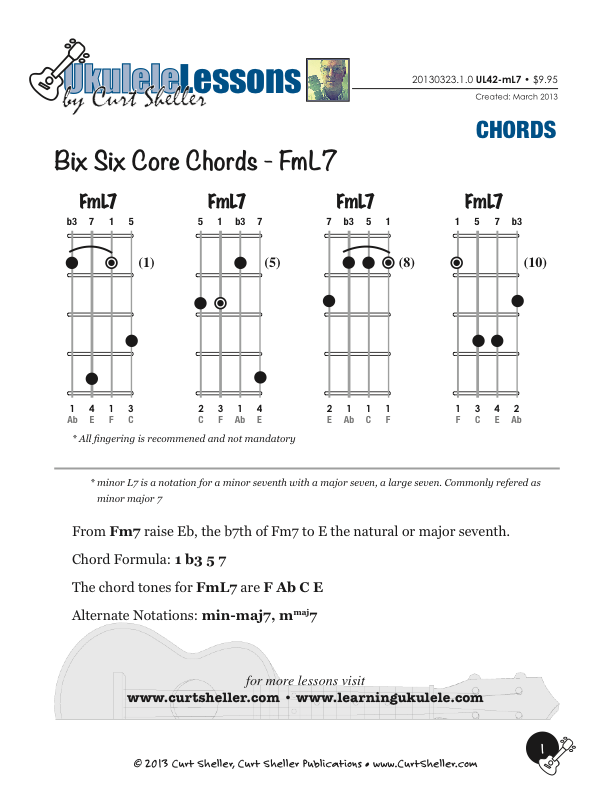
The Big Six Core Chords - Level II: "FmL7" is created from the "1 b3 5 7" of the major scale, based on the root of the chord. For "FmL7" the chord tones are: F Ab C E. The L is a contemporary chord designation and refers to a large seventh, a major seventh.
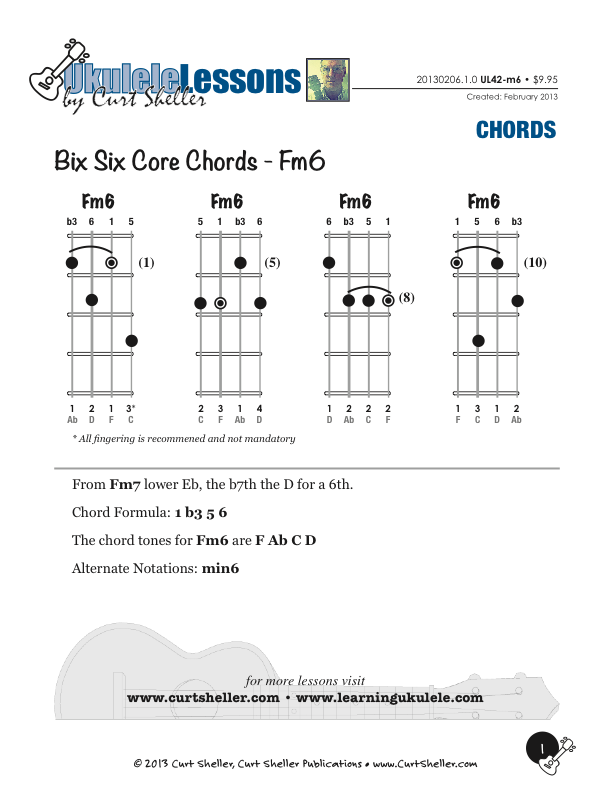
The Big Six Core Chords: "Fm6". This is the Level II of your core 4-part "Jazz" chords. The Fm6 is a 1 b3 5 6 of the major scale, based on the root of the chord. A minor 6th chord can be derived either from a minor seventh or major sixth chord. From a minor seventh chord lower the flat seventh one fret. From a major sixth chord lower the natural third one fret.
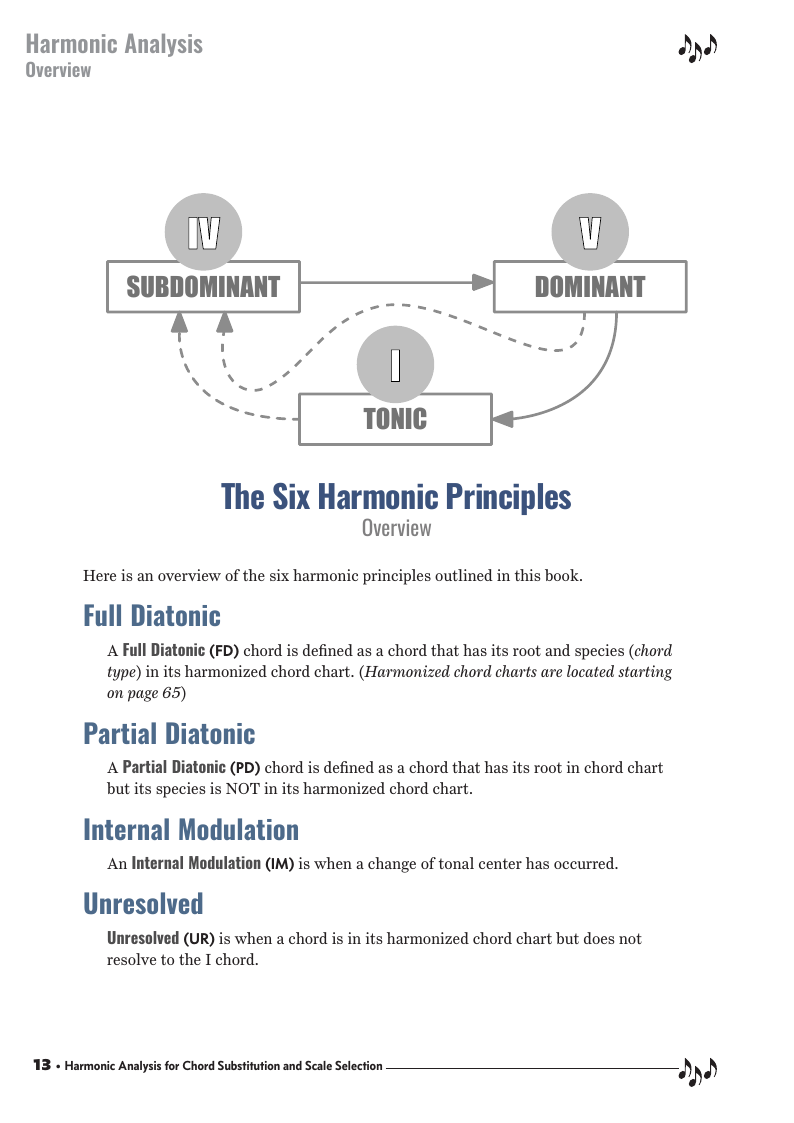
This lessons cover the "Six Harmonic Principles" that are used to do a Harmonic Anlyasis - the understanding of the functional sequence of chords.
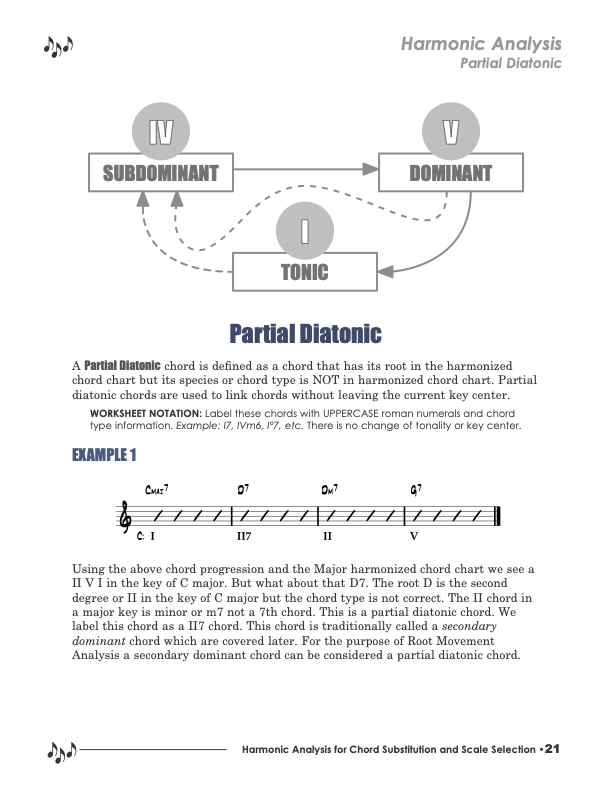
"Partial Diatonic" is defined as a chord that HAS its root in the - "Harmonize Chord Chart," but its species or chord type is NOT in the Harmonized Chord Chart. Partial Diatonic chords are used to link chords without leaving the current key center. Secondary Dominant chords are a big part of this harmonic principle.
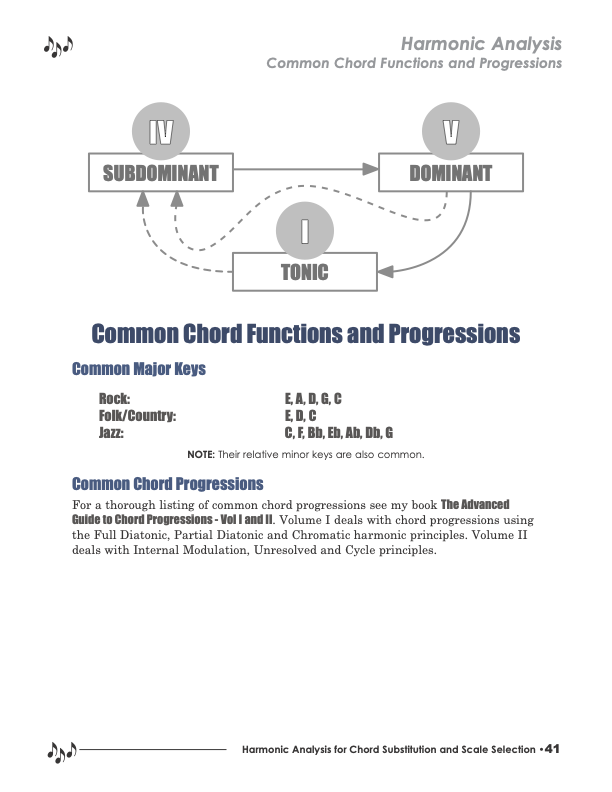
Common chord progression are simply the sequence of chords that contiounly show up in various styles of music and common keys.
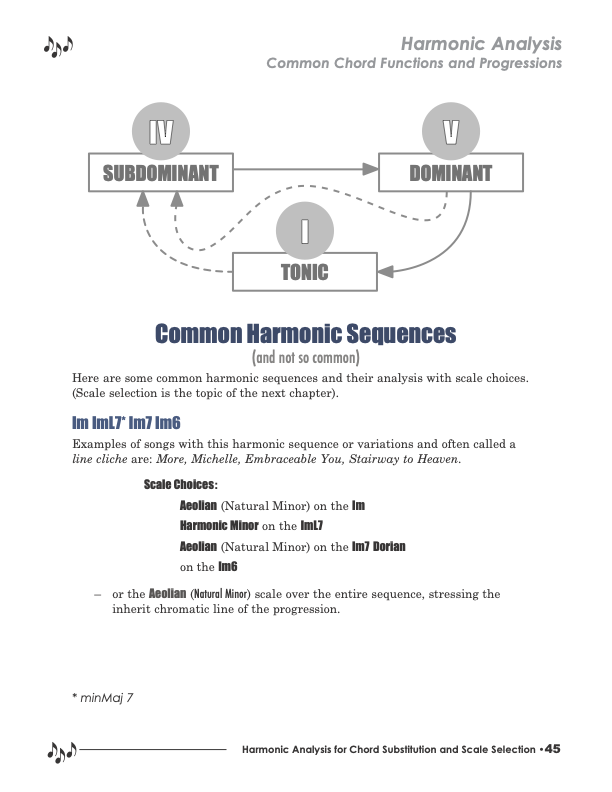
Common harmonic sequences and their analysis with scale choices.
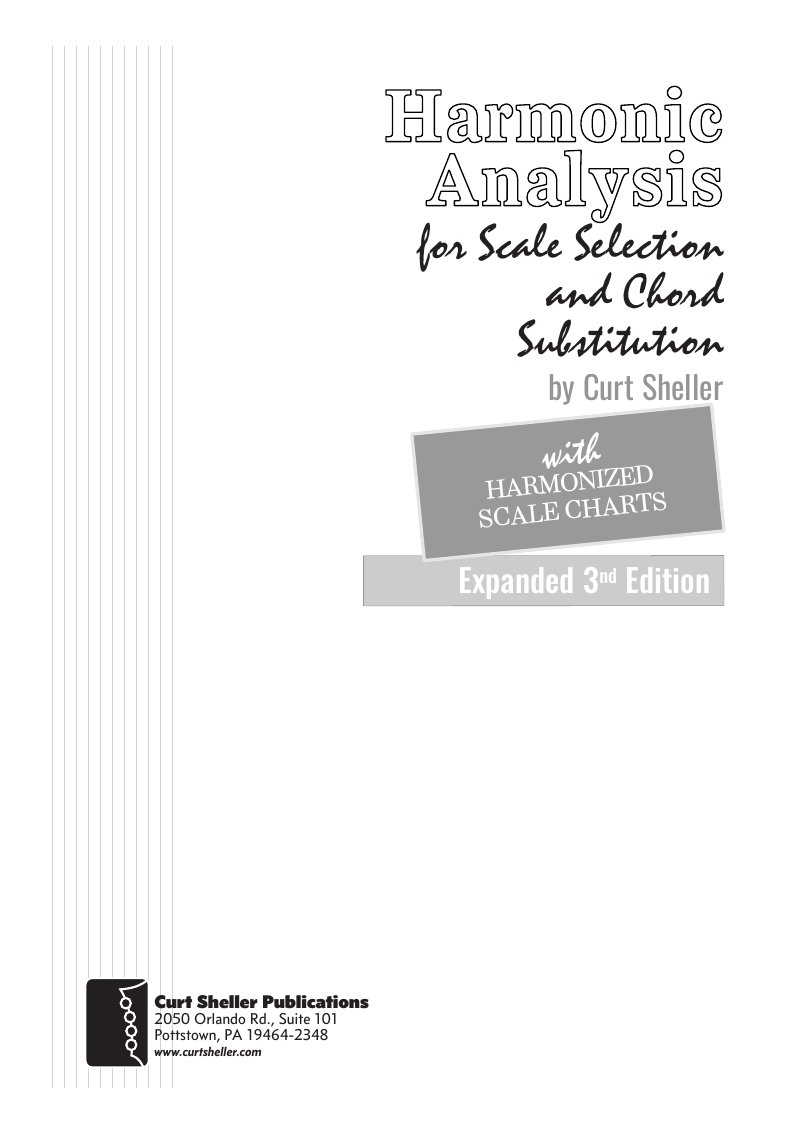
Harmonic Analysis ( HA ) is the process used to determine the harmonic function of chords within a chord progression. A chord progression is defined as a sequence of chords, each chord has a root and has a particular chord type. The relationship of a chord's root to a scale determines its function within that scale's tonality. Once a chord's function is identified, scale selections along with chord and scale substitutions can be made. This process is called Root Movement Analysis ( RMA ). This series of lessons are extracted from my book for use with individual private and on-line students. Each lesson directly corresponds the chapters in my book Harmonic Analysis for Scale Selection and Chord Substitution by Curt Sheller (me).
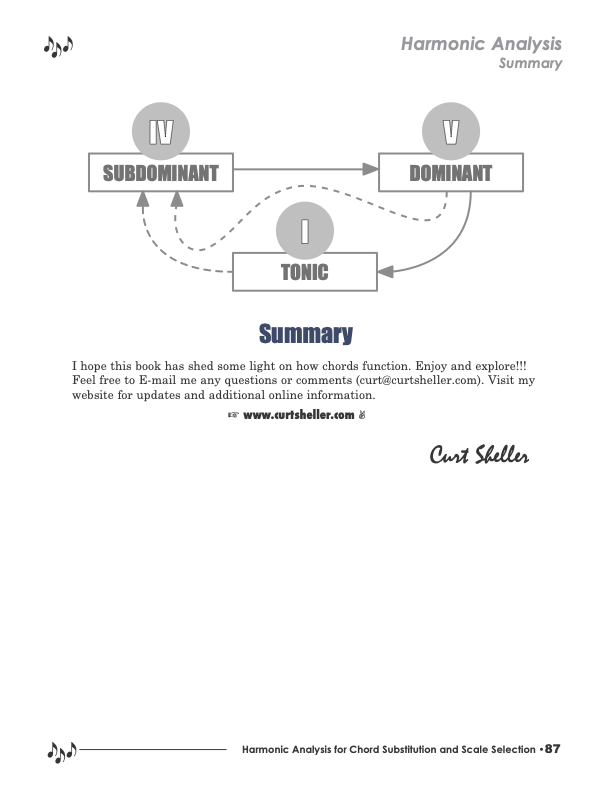
HARMONIC ANALYSIS for Scale Selection and Chord Substitution explored the six harmonic principles for analyzing chord progressions and songs using tradition tonic-dominant harmony and the scale modes.
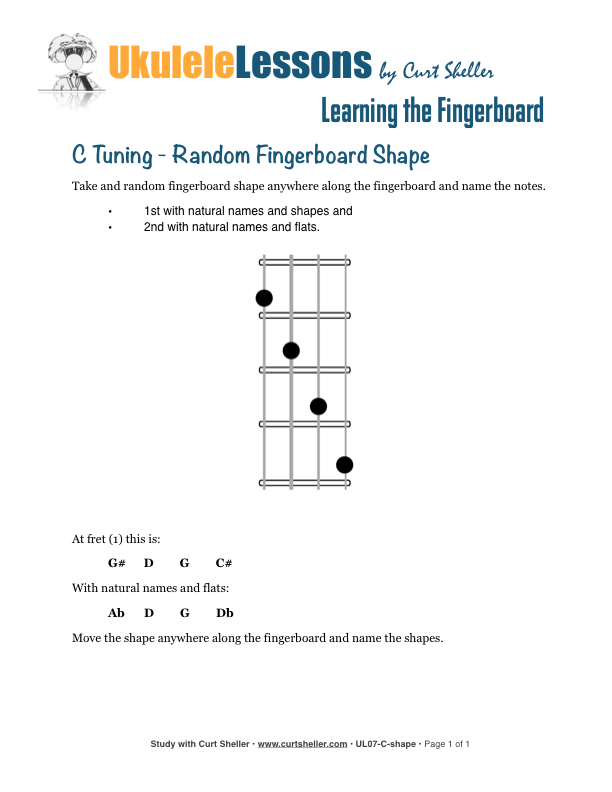
There is nothing that returns more value when learning a fretted musical instrument like the ukulele than really , and I mean really knowing the names of the notes of the fingerboard. This exercise takes any random fingerboard shape and names the notes using any combination of their natural, sharps and or flats names.
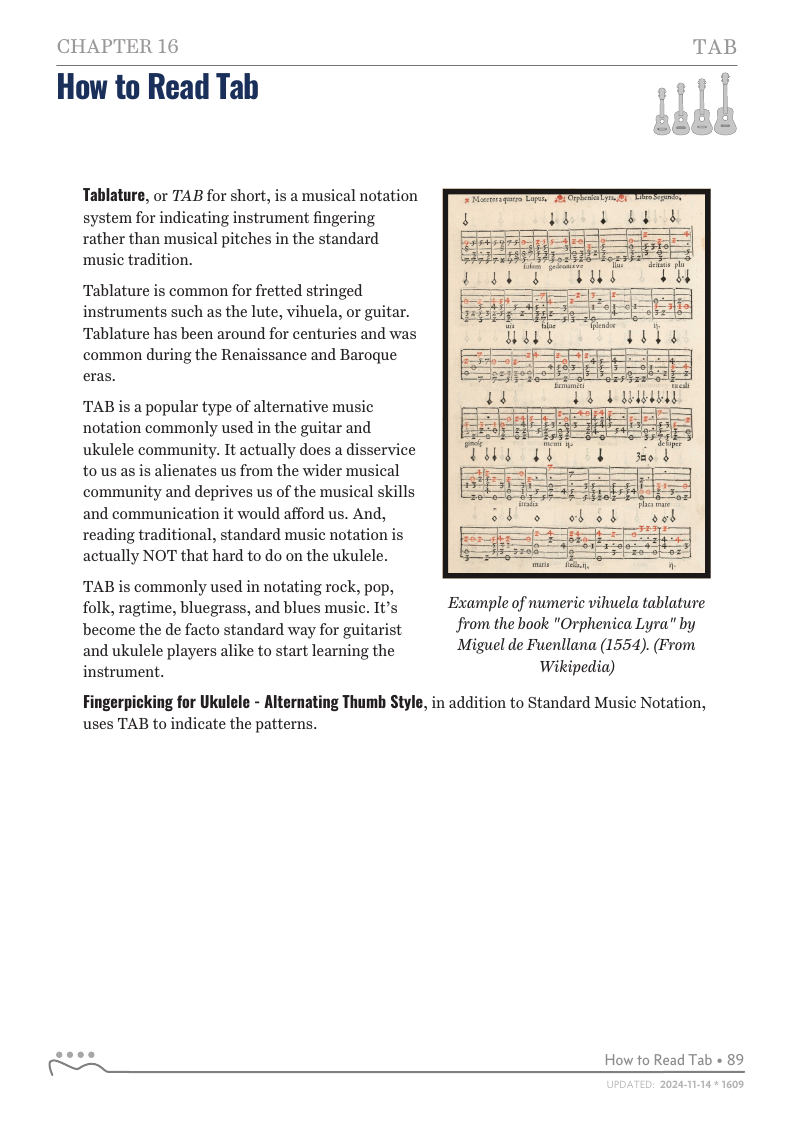
Tablature, or "TAB" for short, is a musical notation system for indicating instrument fingering rather than musical pitches in the standard music tradition. Tablature is common for fretted stringed instruments such as the lute, vihuela, or guitar. Tablature has been around for centuries and was common during the Renaissance and Baroque eras.
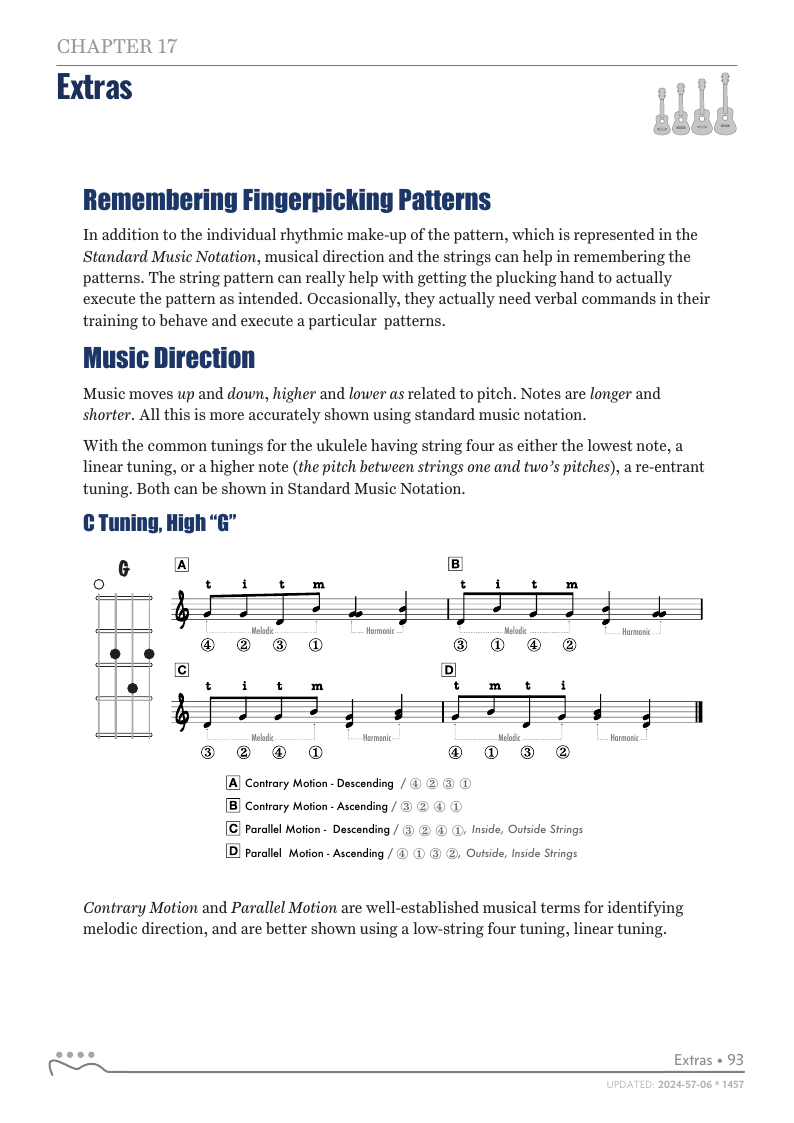
In addition to the individual rhythmic make-up of the pattern which is represented in the Standard Music Notation. Musical direction and the strings can help in remembering the patterns. The string pattern can really help with getting the plucking hand to actually execute the pattern as intended.
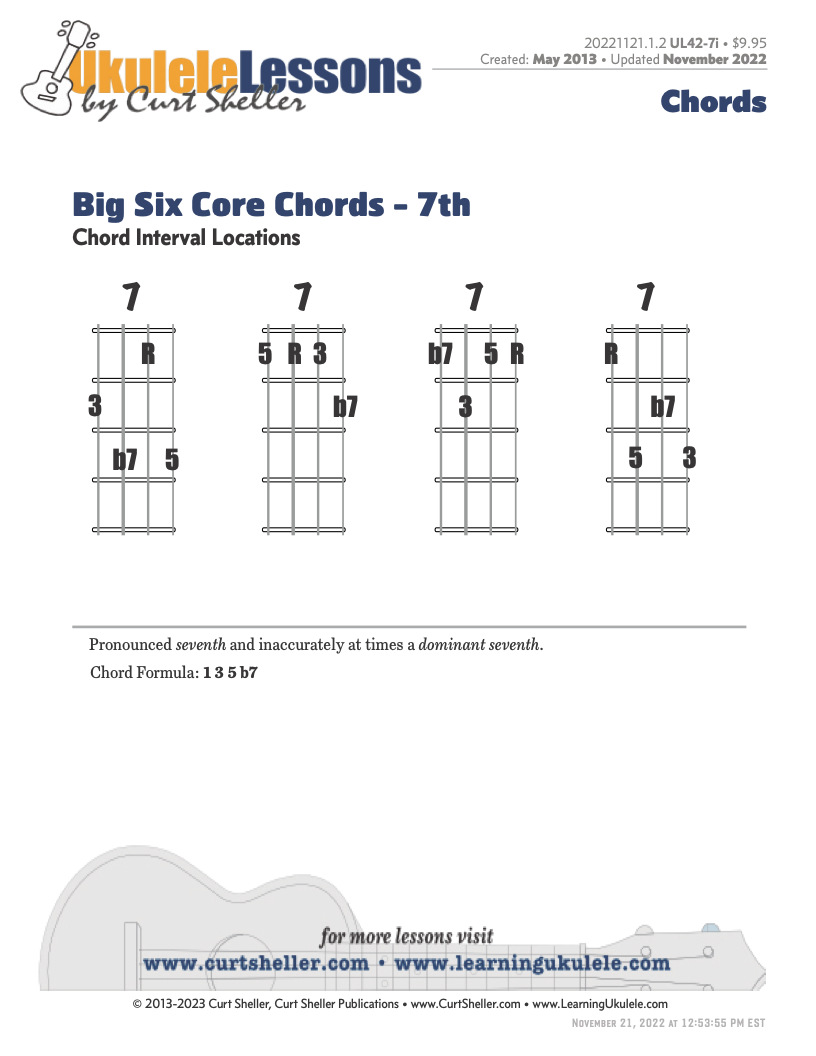
The Big Six Core Chords - Level I: "F7" is created from the "1 3 5 b7" of the major scale, based on the root of the chord. For "F7" the chord tones are: F A C Eb. This lesson introduces the four "F7" voicings on the string set, strings 1, 2. 3, and 4. The Chords are shown for C Tuning, Low and High G.
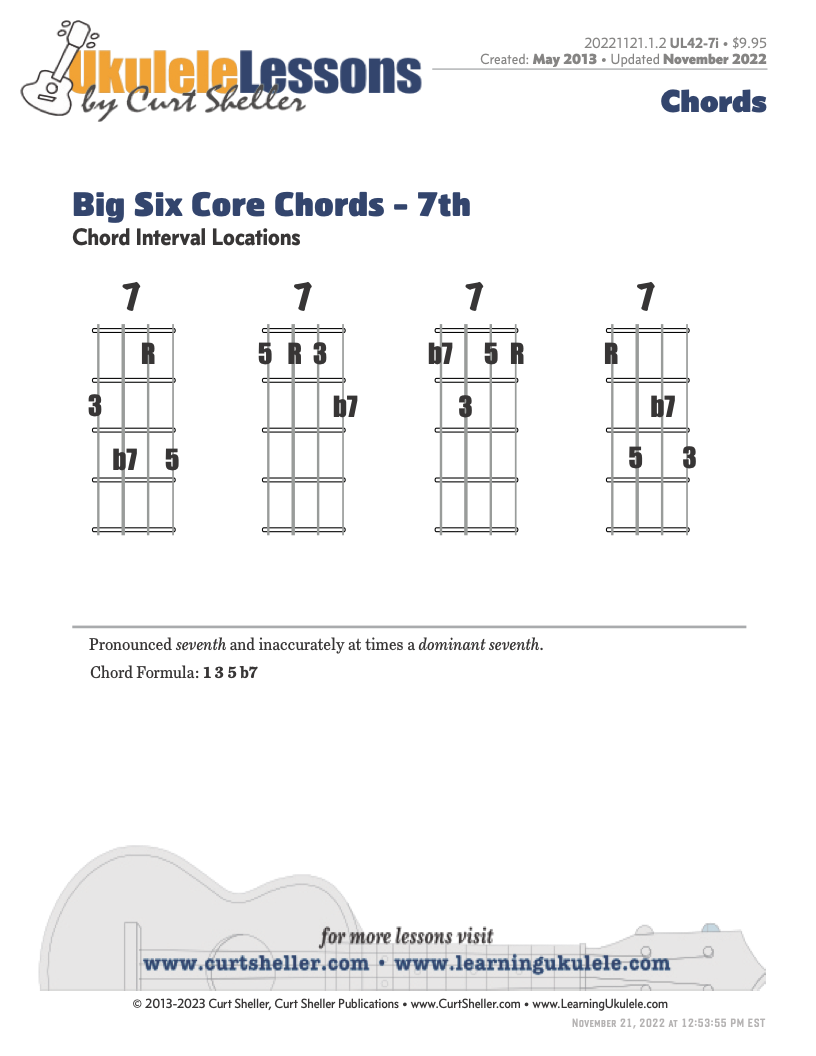
Learning the locations of the chord tones - the actual names of the "F7" chords, the foundation chord for our Big Six Core Chords.
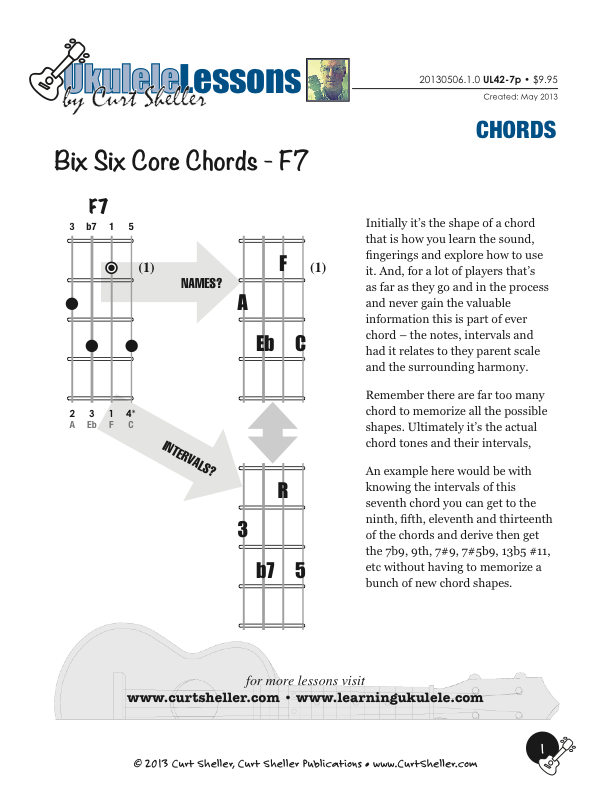
The Big Six Core Chords - "F7", four voicings. From shape to chord tones to intervals and back again. Really, learning what a chord is made of.
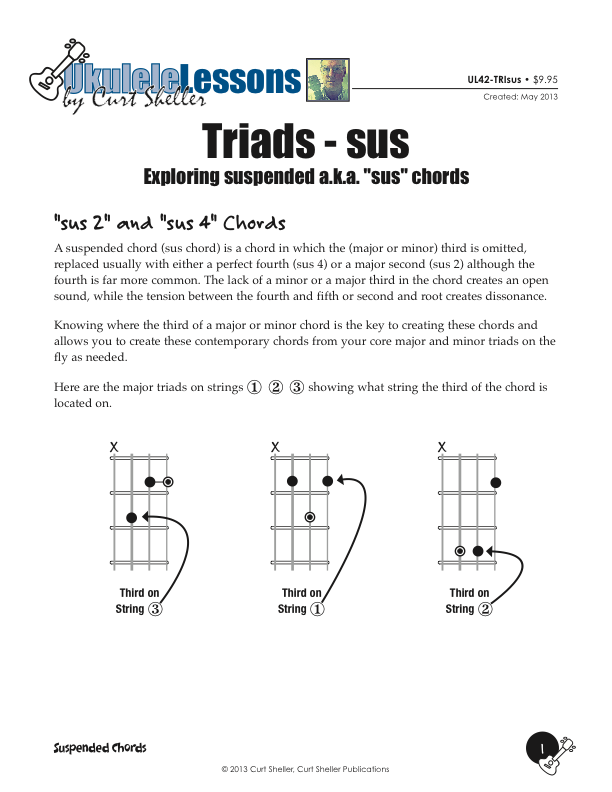
A triad is a three note chord. In traditional chord theory there are four traditional triad chord types: major, minor, diminished and augmented. And four contemporary triad chord types: sus2, sus4, add2 and add9.
This series of lessons explores contemporary suspended or sus chords using triads cover is earlier lessons of this series.
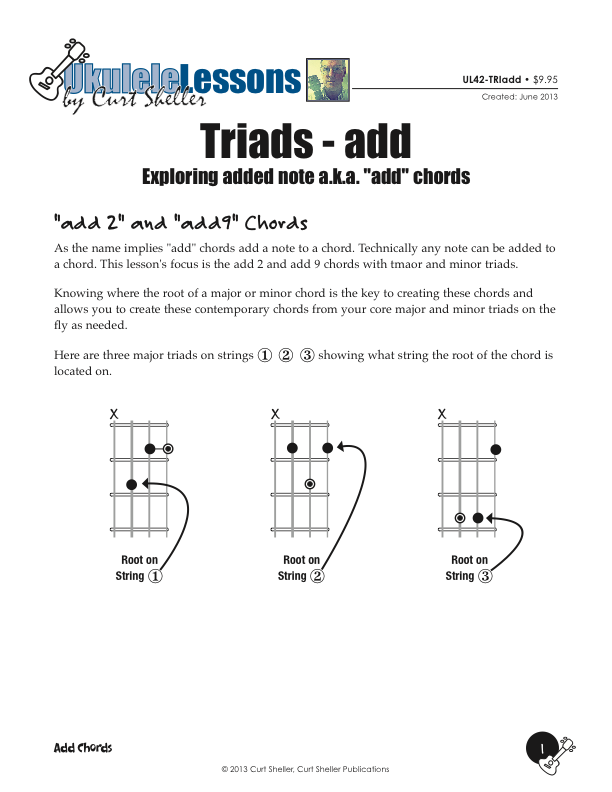
A triad is a three note chord. In traditional chord theory there are four traditional triad chord types: major, minor, diminished and augmented. And four contemporary triad chord types: sus2, sus4, add2 and add9. This series of lessons explores contemporary add chords using triads covered in earlier lessons of this series.
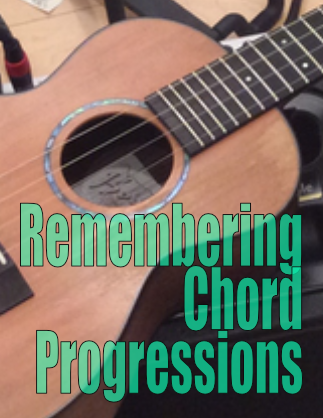
Listening to songs and wanting to play the same songs on ukulele – that's what draws most people to the ukulele. That and it looks like a load of fun and easy to play – which it is. Then you need to actually remember the songs that you're learning, so you can play them again. And, hopefully, not have to read them off a sheet all the time.
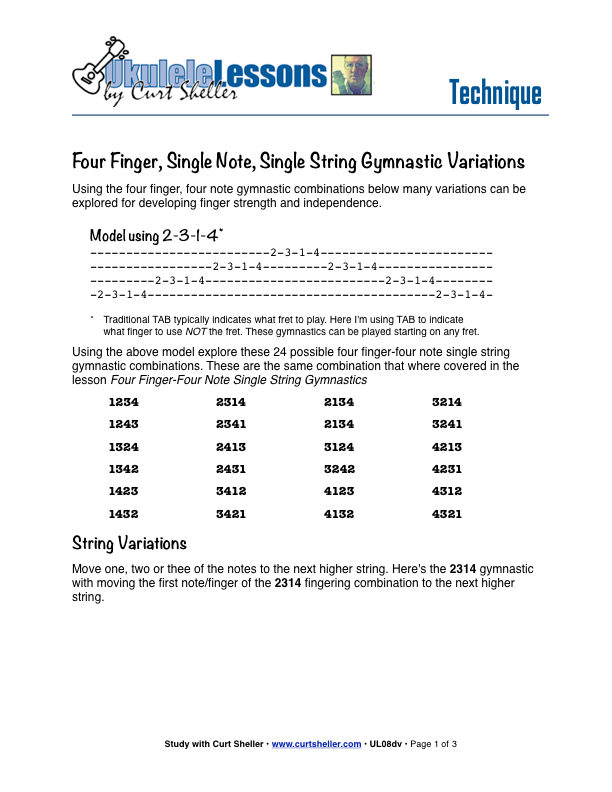
All the basic single string one, two, three and four finger gymnastics can be revisited and variations created by moving a note to higher strings. Rhythmic variation are also possible.

Ukulele Gymnastics series contains quite a few lessons for developing your finger strength and independence of the fretting hand. The fretting hand is responsible for playing chords and single notes. The fretting hand and plucking hand are responsible for getting the music out.
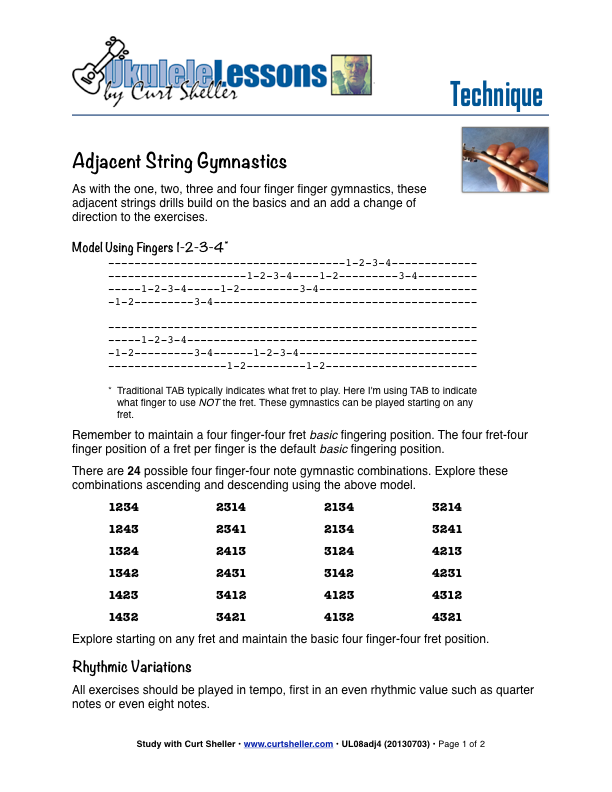
Building on the one, two, three and four finger finger gymnastics, these adjacent strings drills add a change of direction to the exercises.
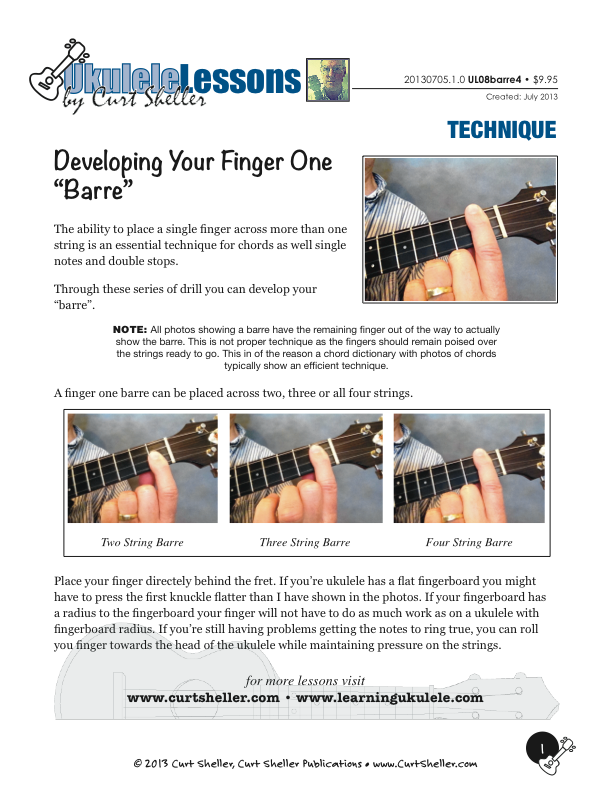
The ability to place a single finger across more than one string, a “barre” is an essential technique for chords as well single notes and double stops.
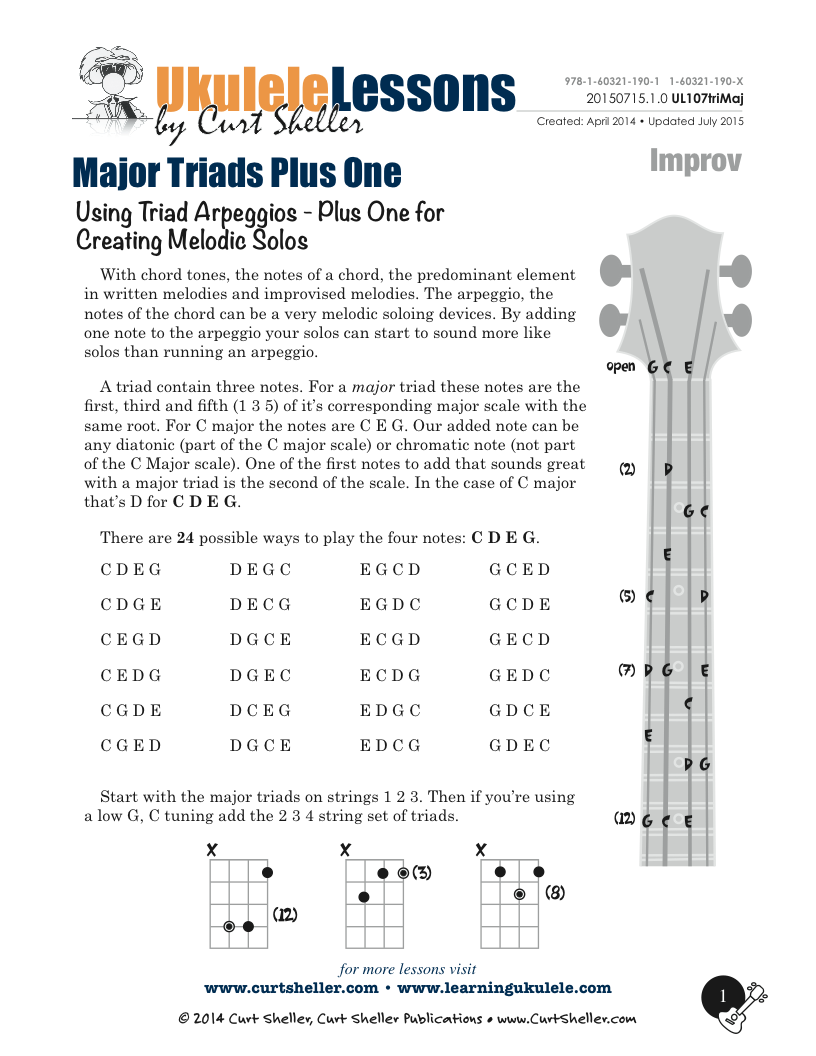
Using Major Triad Arpeggios - Plus One for Creating Melodic Solos. With chord tones, the notes of a chord playing a predominant role in writing melodies and in improvised melodies. The triad plus one additional note is a great melodic device for creating melodies - either written or improvised.
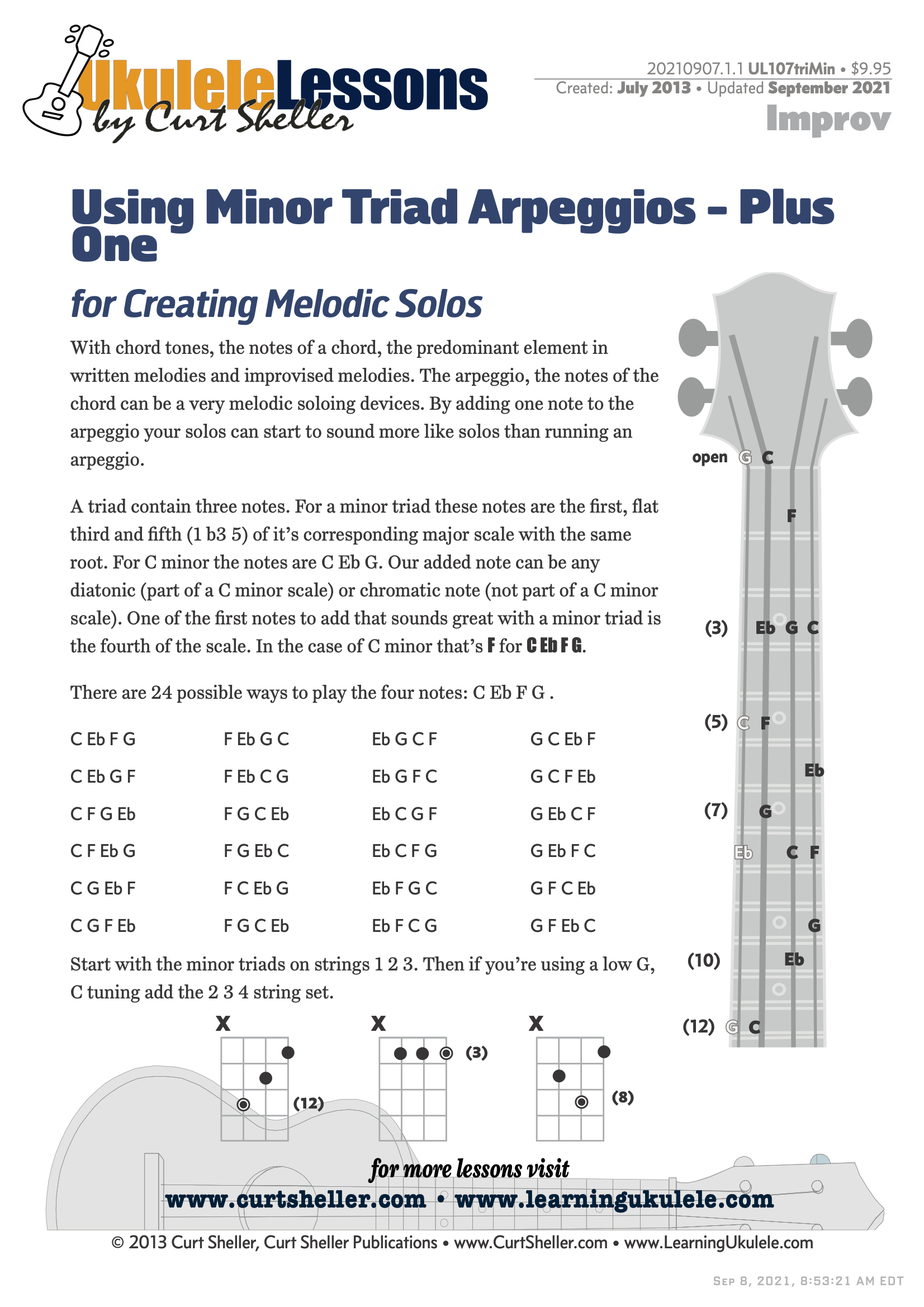
Using Minor Triad Arpeggios - Plus One for Creating Melodic Solos. With chord tones, the notes of a chord playing a predominant role in writing and in and improvised melodies. The triad plus one additional note is a great melodic device for creating melodies - either written or improvised.

Common Jazz Chord Progressions - there is a lot more common between songs than you might think. This lessons show some common progressions and the jazz standards that use them.

The "Alternating Thumb Style" lessons are in their own section and book.
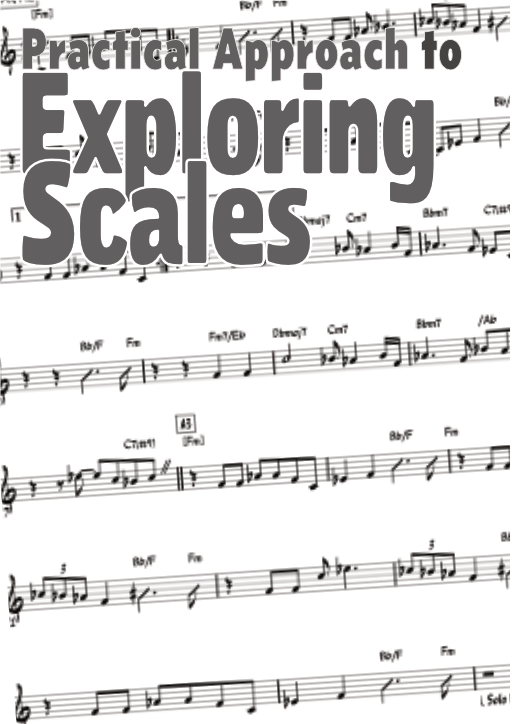
On ukulele there aren't many positions where you can play a one octave scale from the root to octave. An instrument like the guitar with the additional lower strings five and six allows one to play a one octave scale in multiple positions in the basic 4-fret, 4-finger position. On ukulele there might be one or two depending on the scale and the key - and whether your using a low string four tuning. This lesson offers a practical approach to practicing your scales on ukulele.
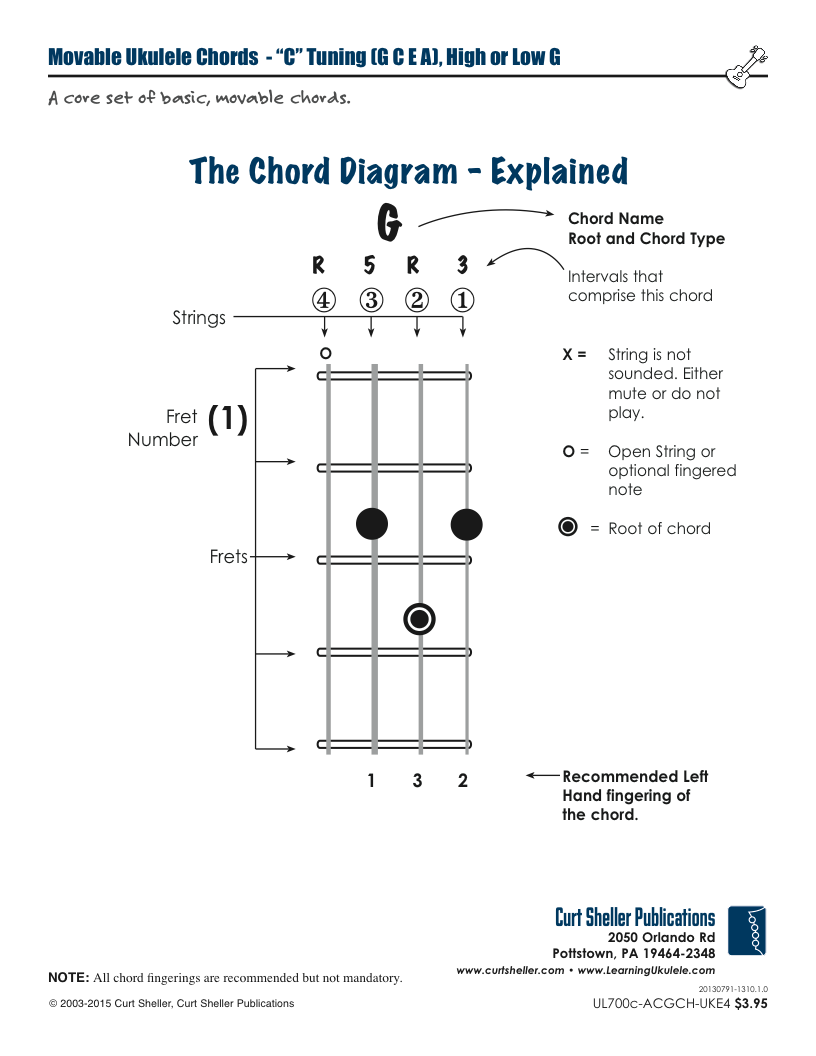
These chords are movable chord forms based on core 4-part seventh chords and triads with duplicated and/or omitted notes.
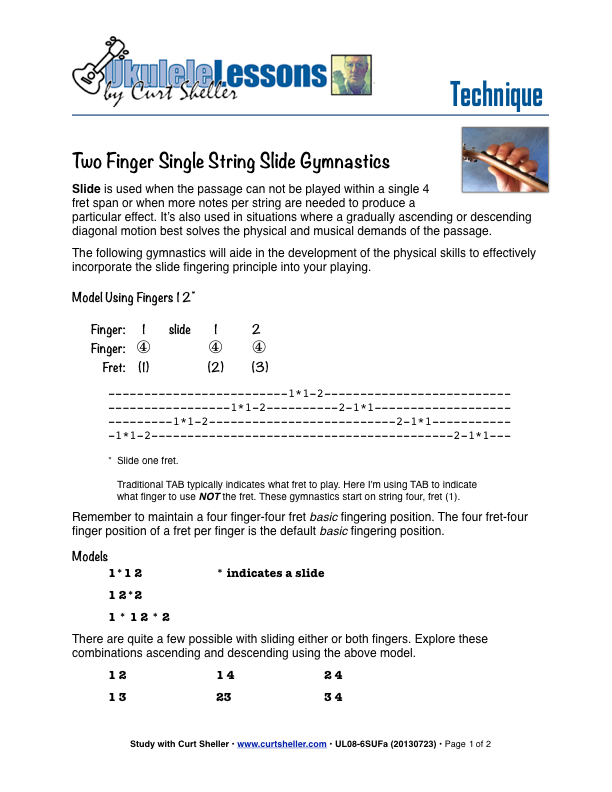
Slide is used when the passage cannot be played within a single 4 fret span or when more notes per string required to produce a particular effect. I's also used in situations where a gradually ascending or descending diagonal motion best solves the physical and musical demands of the passage.
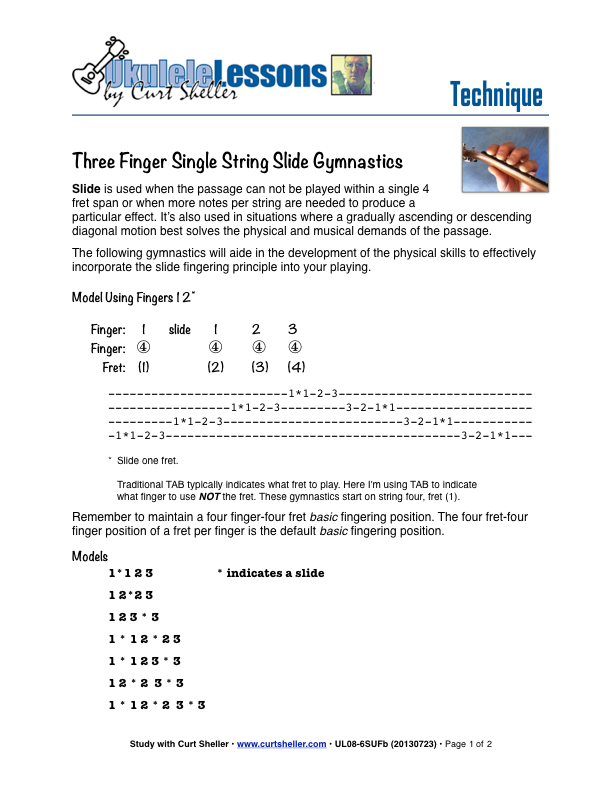
Slide is used when the passage cannot be played within a single 4 fret span or when more notes per string required to produce a particular effect. I's also used in situations where a gradually ascending or descending diagonal motion best solves the physical and musical demands of the passage.
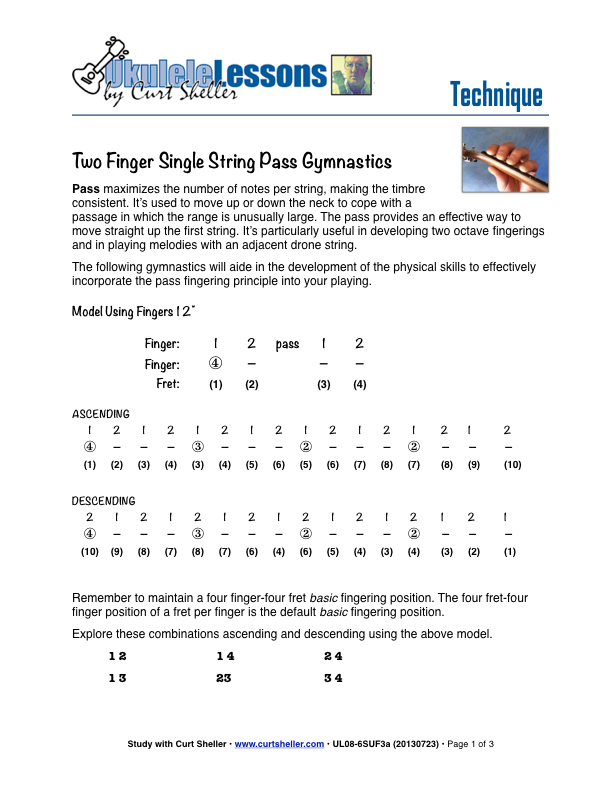
Pass maximizes the number of notes per string, making the timbre consistent. It's used to move up or down the neck to cope with a passage in which the range is unusually large. The pass provides an effective way to move straight up the first string. It's particularly useful in developing 3 octave fingerings and in playing melodies with an adjacent drone string.

In jazz and jazz harmony, the chord progression from IV7 to bVII7 to I has been nicknamed the backdoor progression or the backdoor II-V. This name derives from an assumption that the normal progression to the tonic, the II-V-I turnaround (II-V7 to I, see also authentic cadence) is, by inference, the front door. It can be considered a minor plagal cadence in traditional theory.
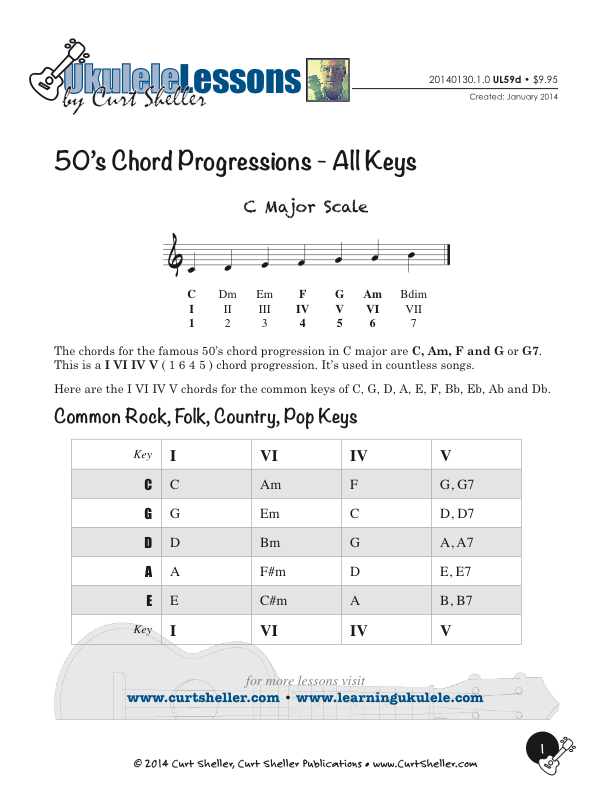
Another common way of extending the I - IV - V sequence is by adding the chord of the sixth scale degree, giving the sequence I - vi - IV - V or I - vi - ii - V, sometimes called the 50s progression.
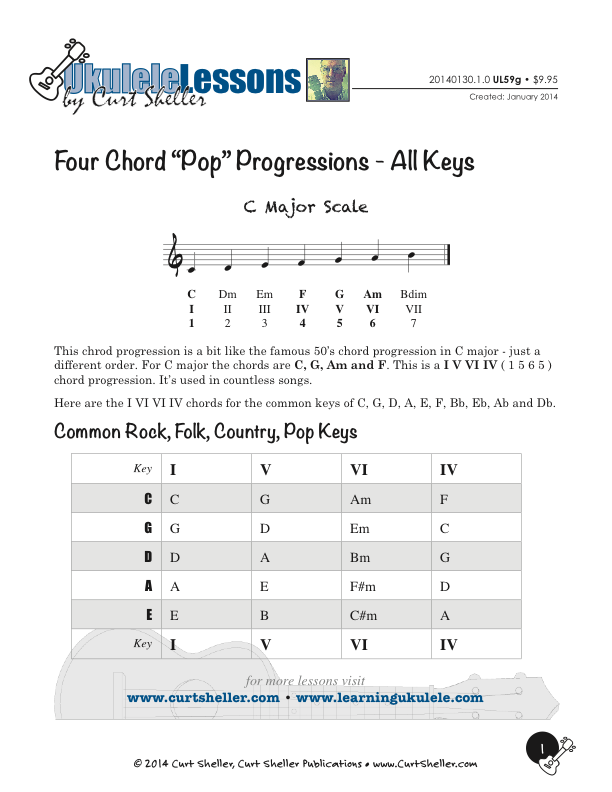
This is the most popular chord progression in use today. It has replaced the most common chord progression that was used in the 50s, the 1 6 2 5 chord progression.
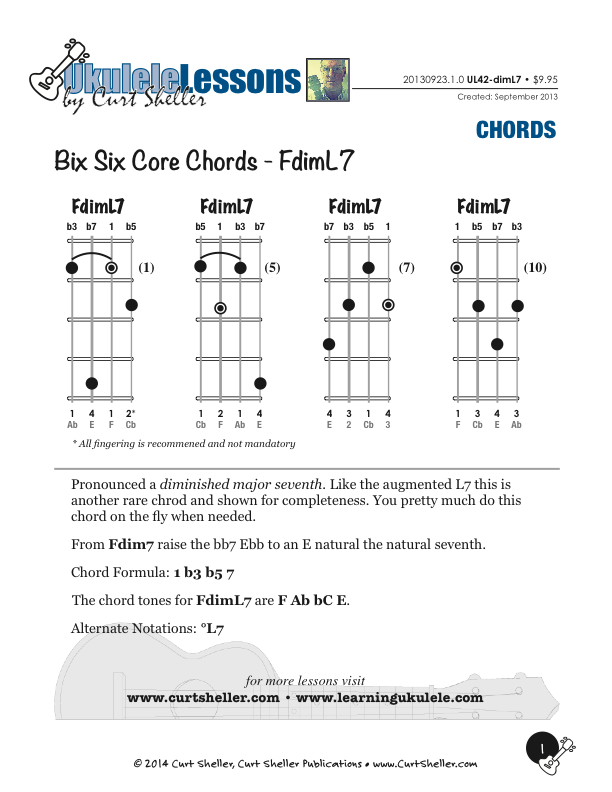
A rare chord, a diminished triad with a major seventh. Used the support the melody when the melody is the major seventh.
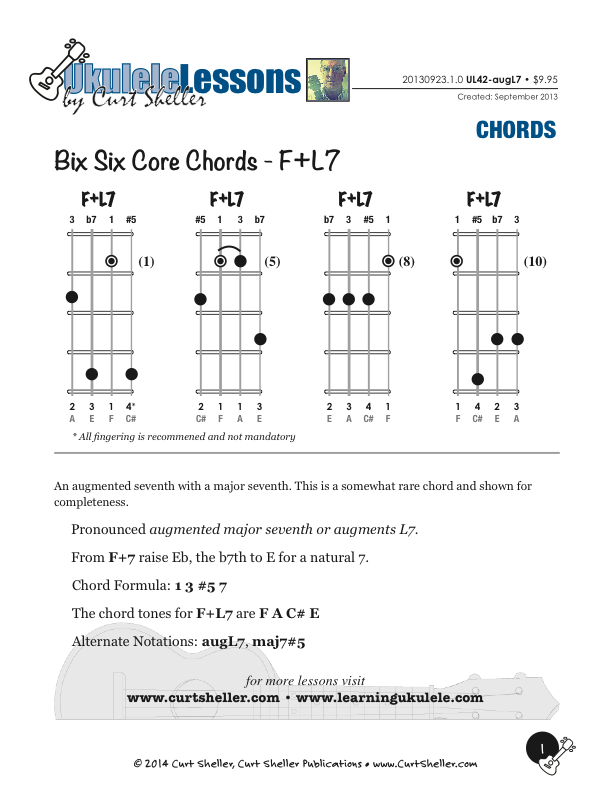
A rare chord, an augmented triad with a major seventh. Used the support the melody when the melody is the major seventh.
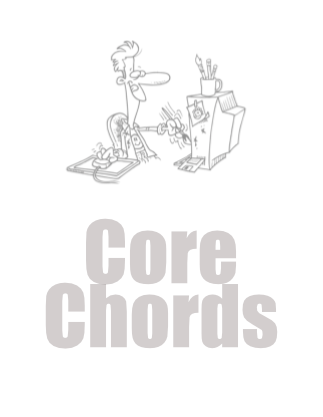
The next series of chords that build on the Bix Six Core Chords and form the foundation for ALL your jazz chords include: Major Sixth ( 6 ), Minor Sixth ( m6 ) and Minor-Major Seventh ( mL7 ).
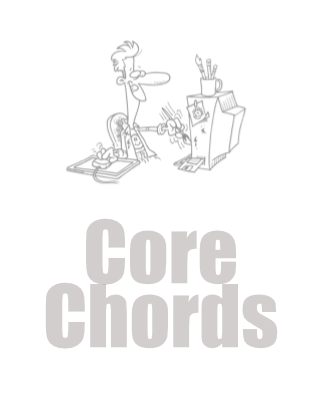
The next series of chords that build on the Bix Six Core Chords and form the foundation for ALL your jazz chords include: Diminished Major Seventh ( dimL7 ) and Augmented Major Seventh ( augL7 ). These chords are rare and used to support a major seventh melody.

The "fifth", "ninth", "eleventh" and "thirteenth" of a chord can be altered. Alterations can be applied 1, 2 and 3 at a time. The alternations give a chord added color or tension.
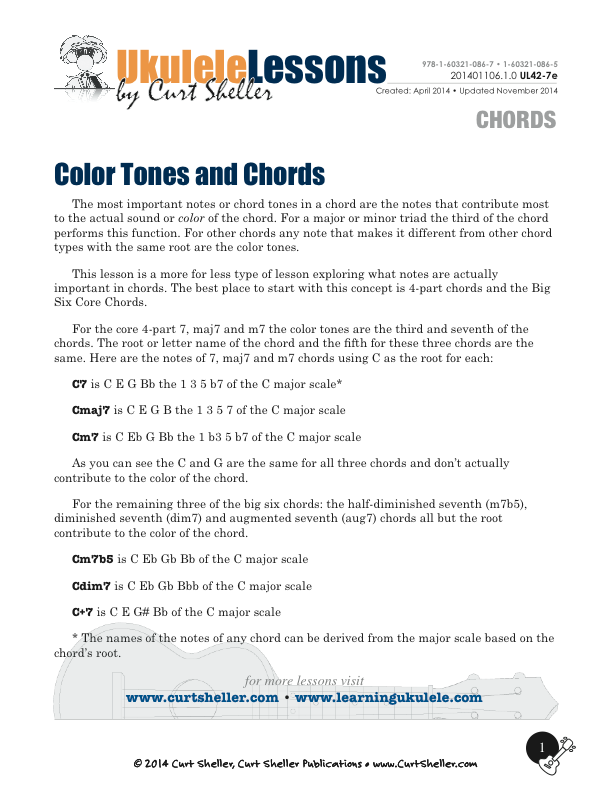
The most important notes or chord tones in a chord are the notes that contribute most to the actual sound or “color” of the chord. For a major or minor triad, the third of the chord performs this function. For other chords, any note that makes it different from other chord types with the same root are the color tones.
This lesson is a more for less type of lesson exploring what notes are actually important in chords. The best place to start with this concept is 4-part chords and the Big Six Core Chords.

Additional practice material for developing and exploring the possibilities of the alternating thumb on ukulele no found in the book.

The remaining chords for The Big Six, Level I Core Chords. The Big Six chords include: Seventh 7, Major Seventh maj7, Minor Seventh m7, Half Diminished Seventh or Minor Seven Flat Five diminished 7 m7b5, Diminished Seventh o7 and Augmented Seventh +7. These six chords form a core set of chords.

A "Triad" is a three note chord. In traditional chord theory there are four traditional triad chord types: major, minor, diminished and augmented. And four contemporary triad chord types: sus2, sus4, add2 and add9. Triads can be used harmonically, as chords and melodically, as single notes. Triads are a great way to get started with creating melodic solos and improvising.

Core Chords is a series of lessons for building your 4-part chords. These chords commonly called jazz chords, are really just 4-part chords used in a wide range of musical styles. Beyond basic open position chords, basic movable form chords and a core set of 4-part chords. There are just too many chords shapes too memorize. Learning the principles of how chords are constructed and the ukulele fingerboard are the way to go. Then you can create more advanced chords like 9#11, 7#5-9, 13b5, 7+9 on the fly as needed.

"Free Form" chords are those chords that do not fall into one of the other chord categories. They typically don't show up in chord dictionaries or software programs.

"Core Chords" are a concept that I typically apply to 4-part chords and your more contemporary modern chords. This where a solid foundation of a core set of chords really help in learning the massive amount of chords that are required for play contemporary music or jazz on ukulele or guitar. Not such a task on ukulele with on one four string set of strings to build your 4-part chords vs. the theoretically possible 15 sets available for guitar.
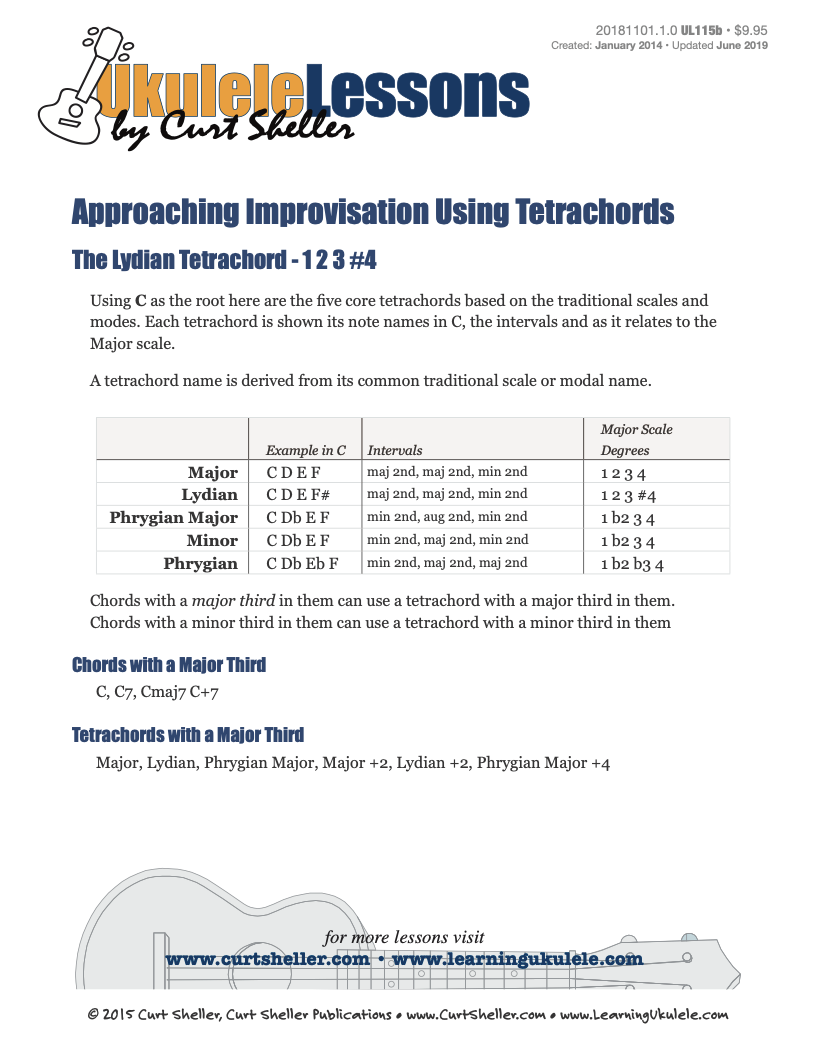
The Lydian tetrachord is the 1 2 3 #4 of a Lydian, Lydian Dominant, or Whole Tone scale.
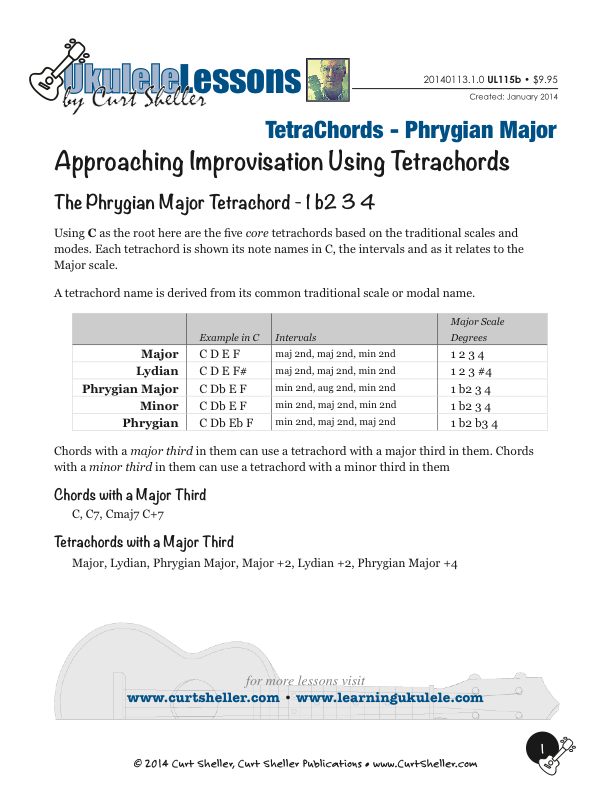
The Phrygian Major tetrachord is the 1 b2 3 4 of a Phrygian scale.
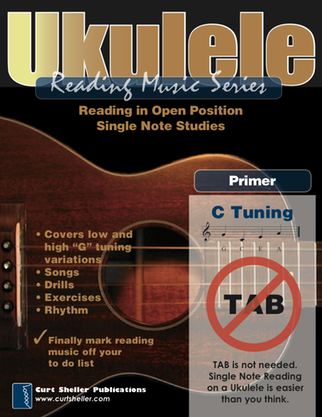
This is a series of lessons for reading music for ukulele at a "Pro" level.
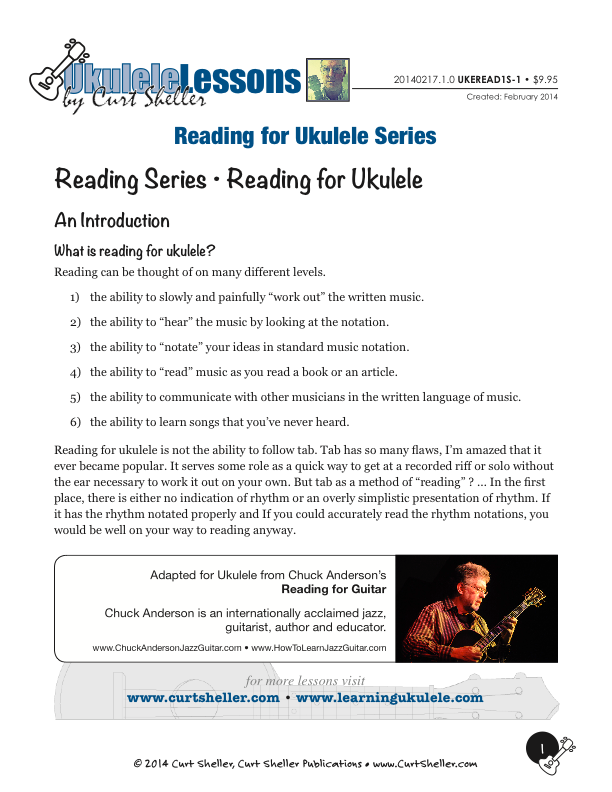
This is a series of lessons for reading music for ukulele at a pro level. Reading can be thought of on many different levels. 1) the ability to slowly and painfully “work out” the written music. 2) the ability to “hear” the music by looking at the notation. 3) the ability to “notate” your ideas in standard music notation. 4) the ability to “read” music as you read a book or an article. 5) the ability to communicate with other musicians in the written language of music. 6) the ability to learn songs that you’ve never heard.
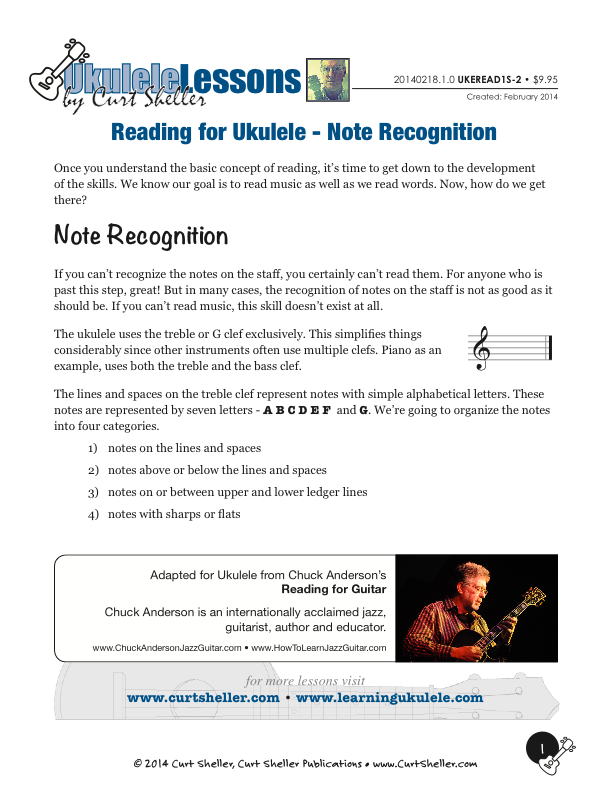
Once you understand the basic concept of reading, it’s time to get down to the development of the skills. We know our goal is to read music as well as we read words. Now, how do we get there? Note Recognition - If you can’t recognize the notes on the staff, you certainly can’t read them. For anyone who is past this step, great! But in many cases, the recognition of notes on the staff is not as good as it should be. If you can’t read music, this skill doesn’t exist at all.
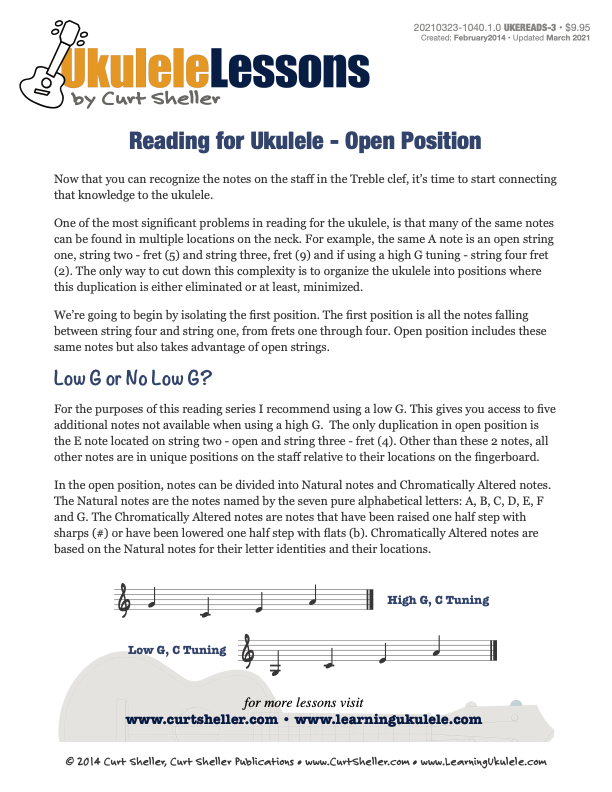
Now that you can recognize the notes on the staff in the Treble clef, it’s time to start connecting that knowledge to the ukulele. One of the most significant problems in reading for the ukulele, is that many of the same notes can be found in multiple locations on the neck. For example, the same A note is an open string one, string two - fret (5) and string three, fret (9) and if using a high G tuning - string four fret (2). The only way to cut down this complexity is to organize the ukulele into positions where this duplication is either eliminated or at least, minimized.
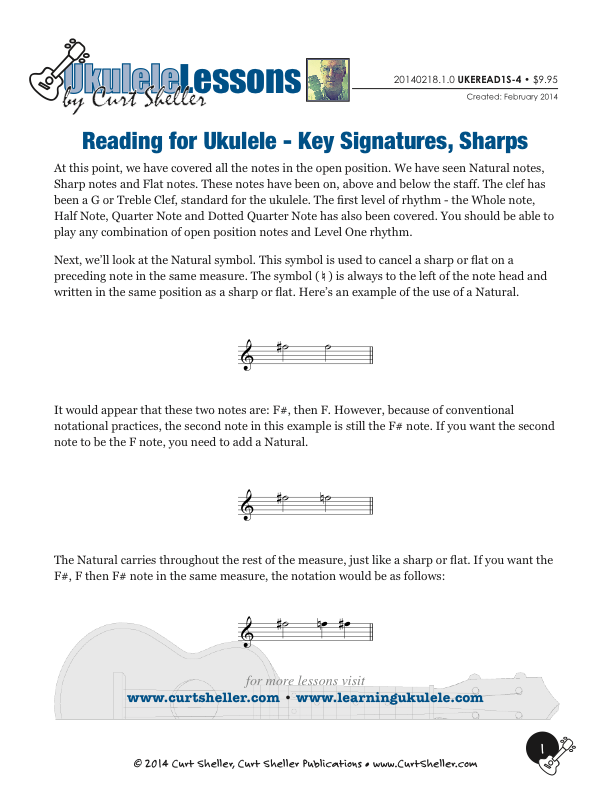
This lessons covers the natural symbol and the sharp key signatures keys. In musical notation, a key signature is a collection of sharp or flat symbols placed together on the staff. Key signatures are generally written immediately after the clef at the beginning of a line of musical notation, although they can appear in other parts of a score, notably after a double barline. A key signature is use to indicate the “auto sharping or flatting of specified notes. Key signatures are also used to identify the key of a composition.
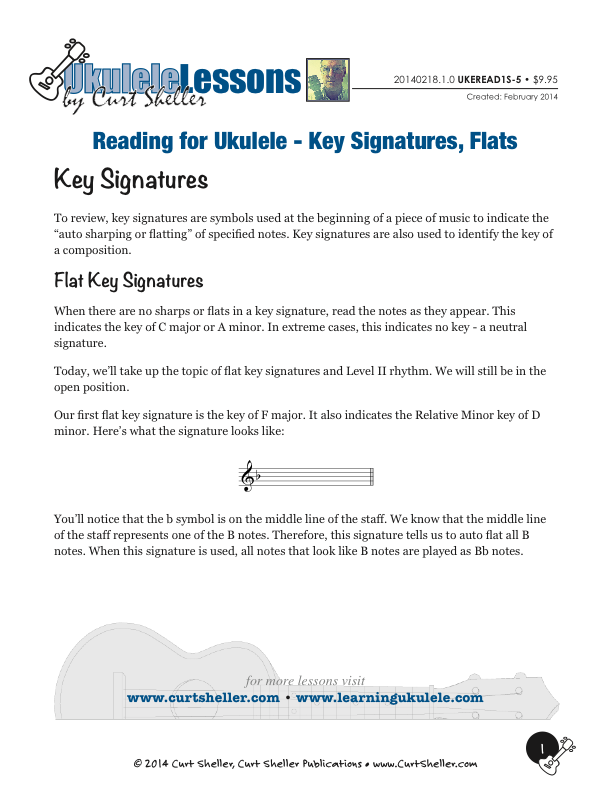
This lessons covers the natural symbol and the flat key signatures keys. In musical notation, a key signature is a collection of sharp or flat symbols placed together on the staff. Key signatures are generally written immediately after the clef at the beginning of a line of musical notation, although they can appear in other parts of a score, notably after a double barline. A key signature is use to indicate the “auto sharping or flatting of specified notes. Key signatures are also used to identify the key of a composition.
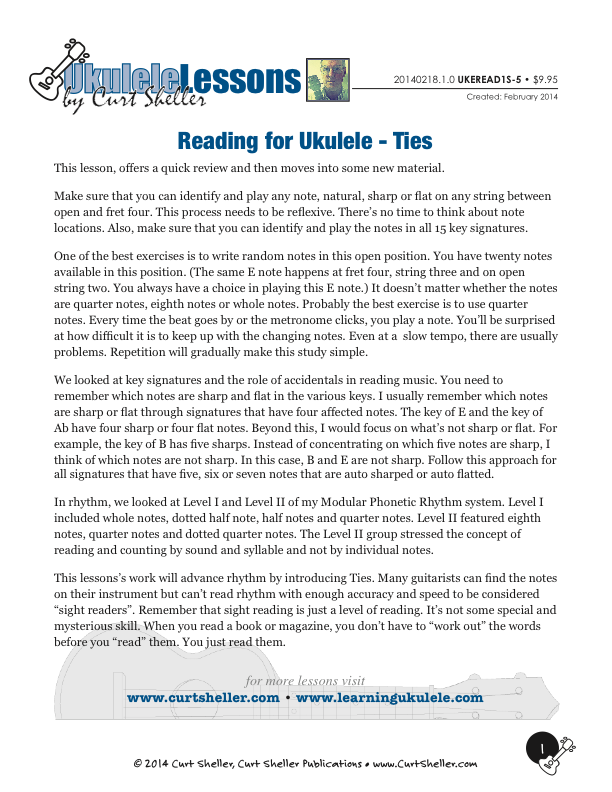
This lessons's work will advance rhythm by introducing Ties. Many ukulele players can find the notes on their instrument but can't read rhythm with enough accuracy and speed to be considered "sight readers". Remember that sight reading is just a level of reading. It's not some special and mysterious skill. When you read a book or magazine, you don't have to "work out" the words before you "read" them. You just read them.
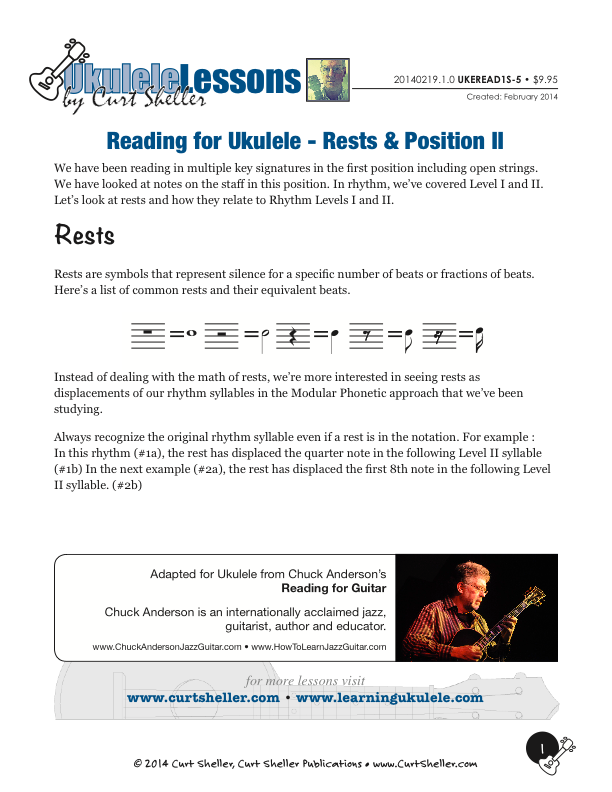
Lesson seven covers reading in position II. After spending time on open and first position, we're ready to move into the second position. The second position is defined as the notes on frets 2, 3, 4 and 5 on all four strings.
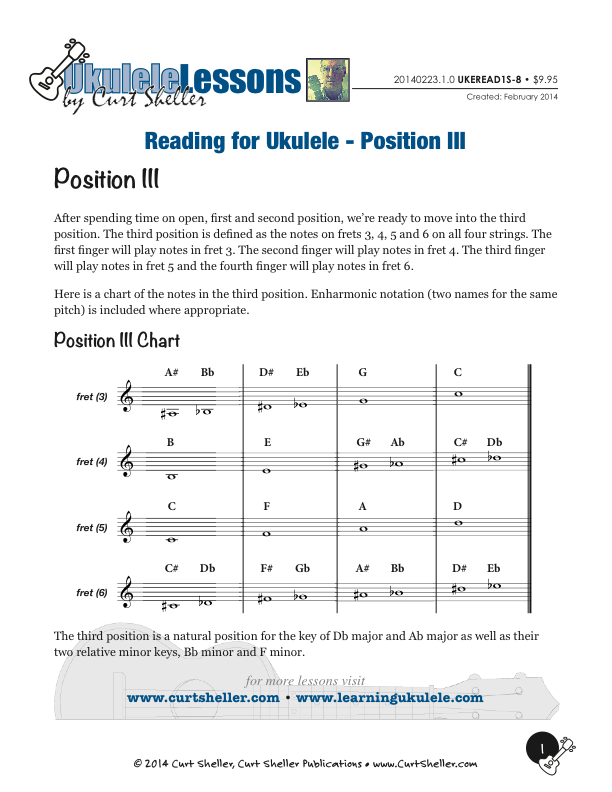
After spending time on open, first and second position, we’re ready to move into the third position. The third position is defined as the notes on frets 3, 4, 5 and 6 on all four strings.

An overview of the Ukulele Chords and Chord Progression lessons available.

Building on the Major Triad Arpeggios - Plus One for Creating Melodic Solos lesson you can add a b7 to a major triad for a 4-part Seventh chord. With chord tones, the notes of a chord playing a predominant role in writing melodies and in improvised melodies. The triad plus one additional note is a great melodic device for creating melodies - either written or improvised.
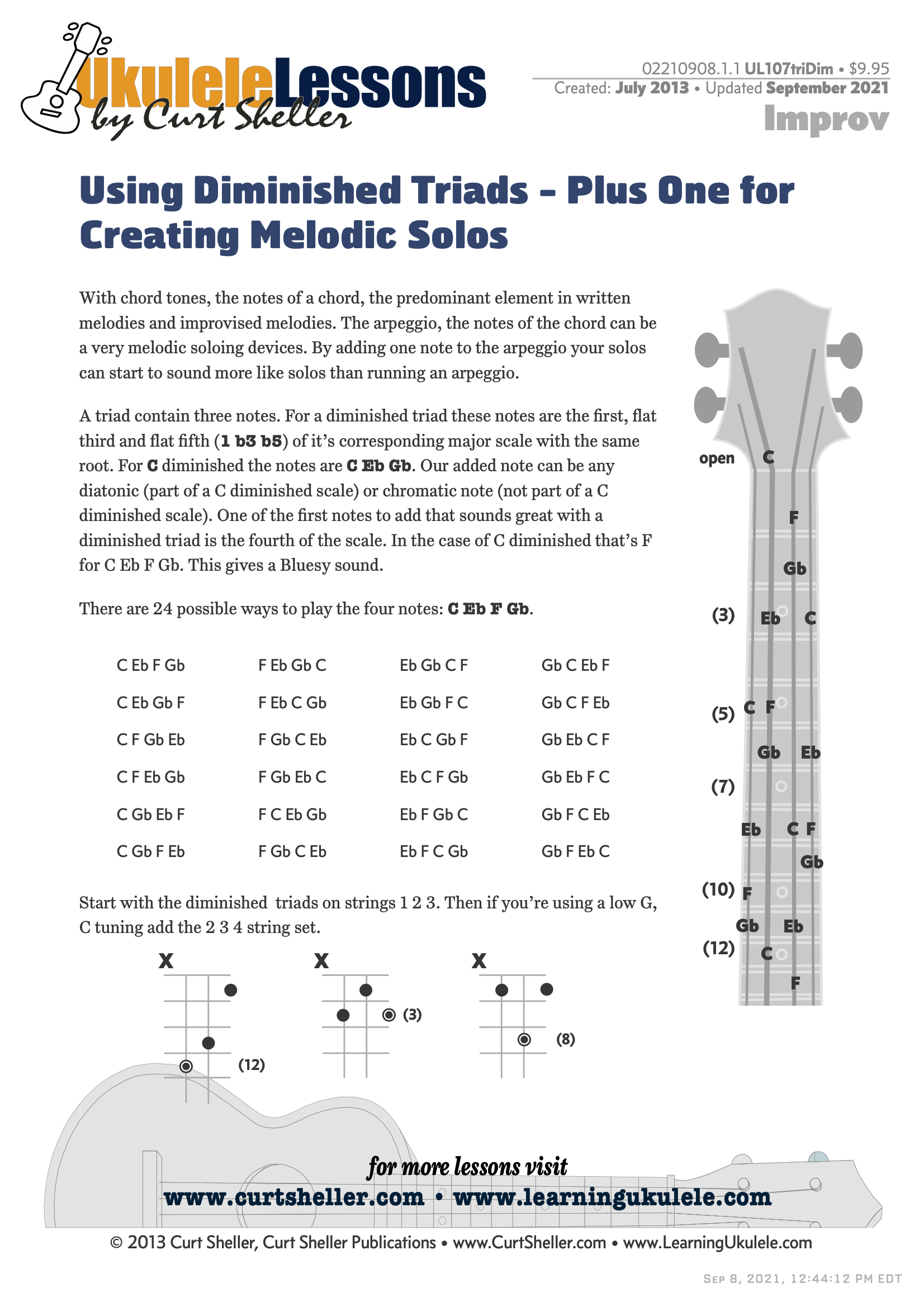
Using Diminished Triad Arpeggios - Plus One for Creating Melodic Solos. With chord tones, the notes of a chord playing a predominant role in writing melodies and in improvised melodies. The triad plus one additional note is a great melodic device for creating melodies - either written or improvised.

Using Augmented Triad Arpeggios - Plus One for Creating Melodic Solos. With chord tones, the notes of a chord playing a predominant role in writing melodies and in improvised melodies. The triad plus one additional note is a great melodic device for creating melodies - either written or improvised.
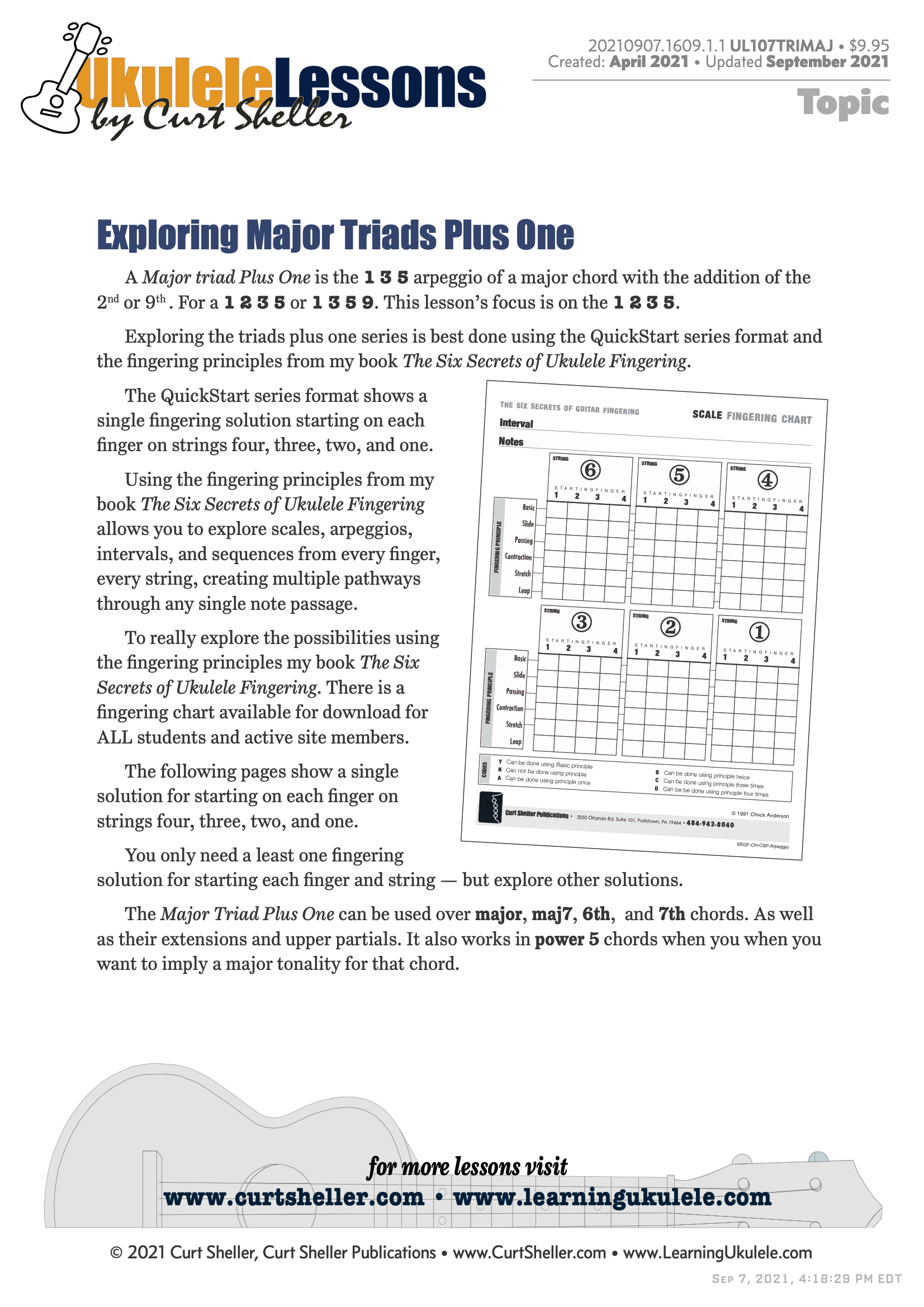
Exploring the triads plus one series is best done using the QuickStart series format and the fingering principles from my book The Six Secrets of Ukulele Fingering. The QuickStart series format single fingering solution for starting on each finger on strings four, three, two and one. Using the fingering principles from my book The Six Secrets of Ukulele Fingering allows you to explore scales, arpeggios, intervals and sequences from every finger-every strings, creating multiple pathways through any single note passage.

The Minor tetrachord is the 1 2 b3 4 of a Aeolian (Natural Minor) scale.
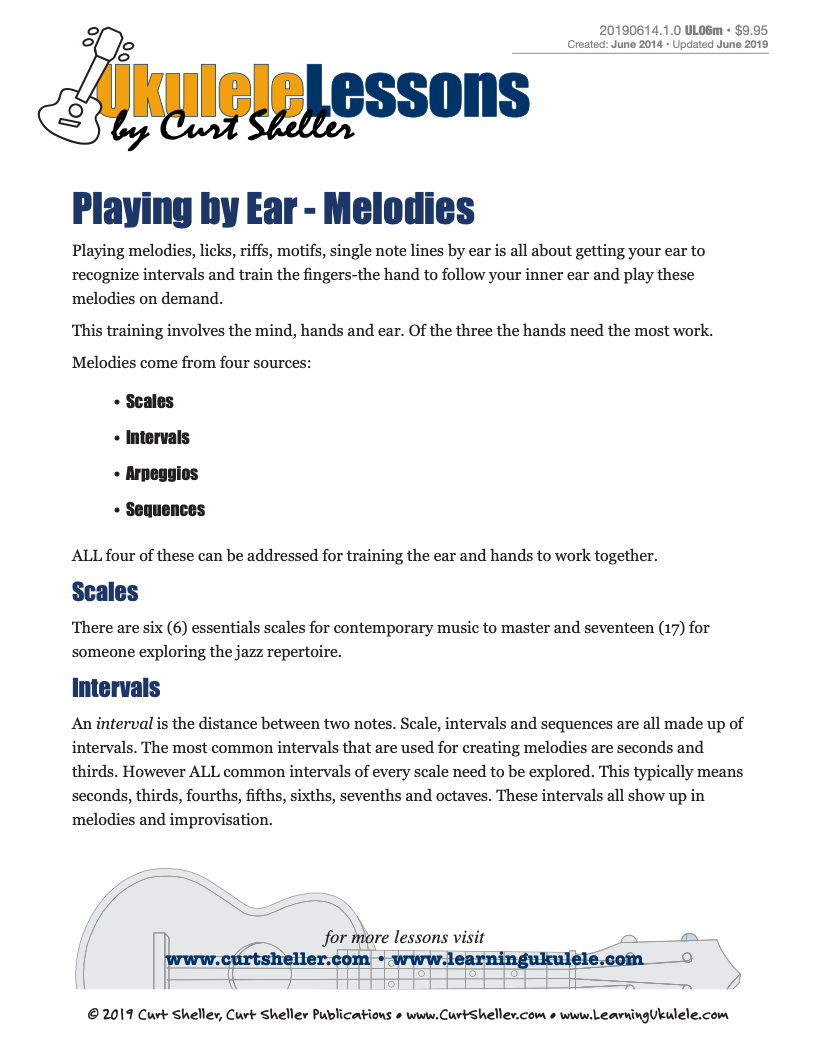
Playing Melodies, Licks, Riffs, Motifs, and Single Note Lines by ear is all about getting your ear to recognize intervals and train the fingers to follow your inner ear and play these melodies on demand.

Playing "Rhythm by Ear" is all about getting your ear to recognize the sound of rhythms . And just like melodies, train the fingers, and the hands to follow your inner ear and play these rhythms on demand.

A `Ukulele is: Light Weight, Affordable and Portable | Four Strings and Four Fingers | Less Need for Strumming Accuracy | There is nott a lot expected from a ukulele player. The 'Ukulele (pronounced oo-koo-lele) comes in four standard sizes: Soprano (sometimes called Standard), Concert, Tenor and Baritone.
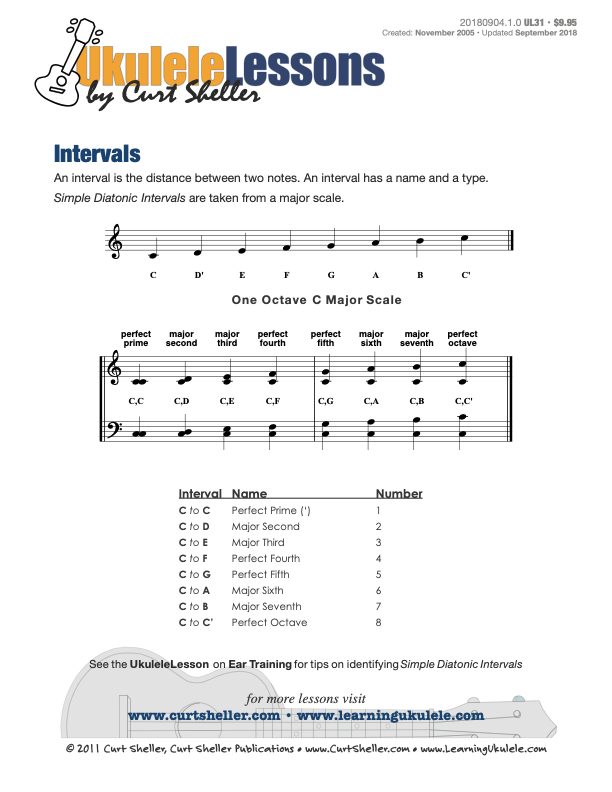
An interval is the distance between two notes. An interval has a name and a type. Intervals can be played one note (melodic) or two notes (harmonic) at a time, ascending or descending. Simple and Compound Intervals are taken from a major scale. Chromatic Intervals are NOT taken from a major scale. They are derived from the diatonic intervals.

A "Secondary Dominant" chord is defined as any seventh chord built on a scale root that is diatonic to the key that resolves up a perfect fourth or down a perfect fifth to a full diatonic chord. These chords function as a dominant (V) chord to the next chord, serving to temporarily tonicize the following chord.

It's unfortunate that there' s no oversight or organization that regulates private music teachers. This is especially true for private guitar and ukulele teachers. Anyone can hang a shingle out advertising private lessons or put content online. So finding a good teacher can be a problem. Here are a few questions you can ask prospective teachers and generally speaking what their answers should be. I'll also input my perspective which should give some info on accurately evaluating a prospective teacher or online content.
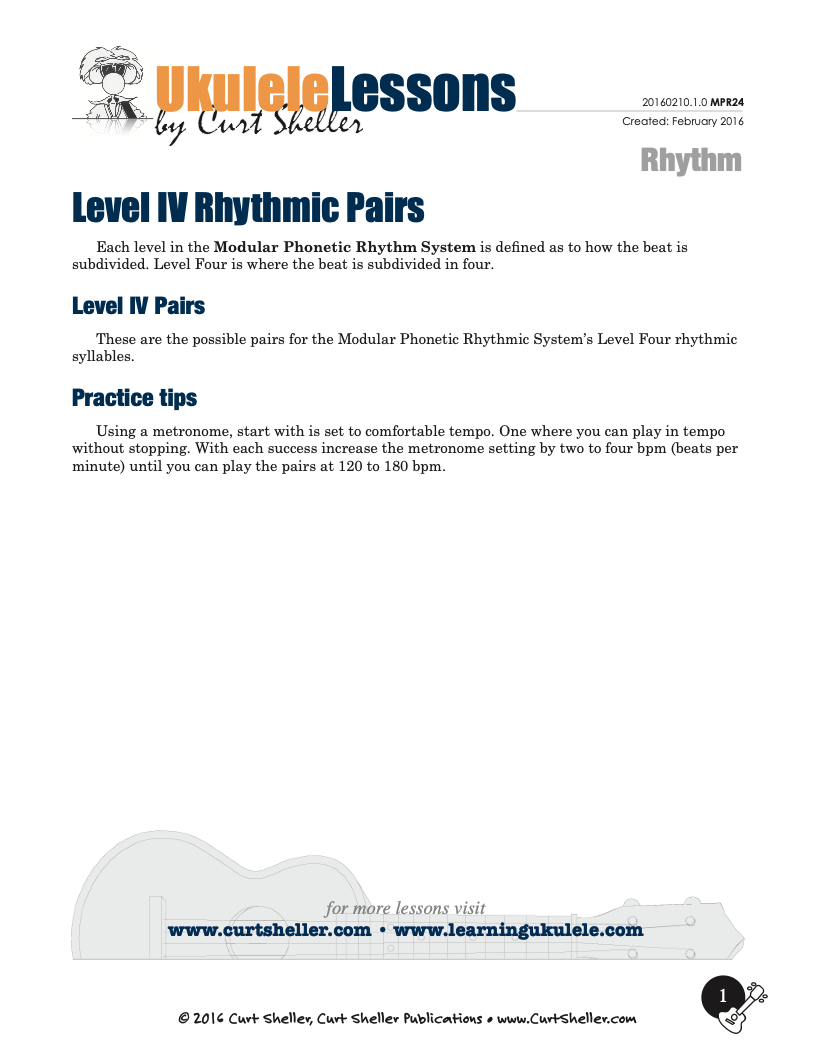
Level IV rhythmic syllable pairs for developing your ukulele strums vocabulary and sharpen your reading chops.

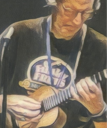
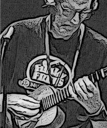

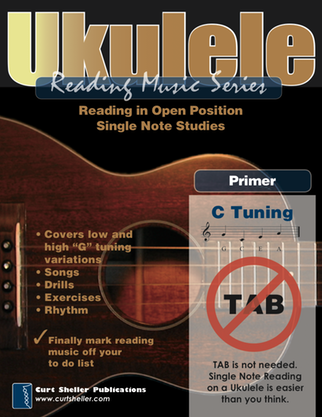

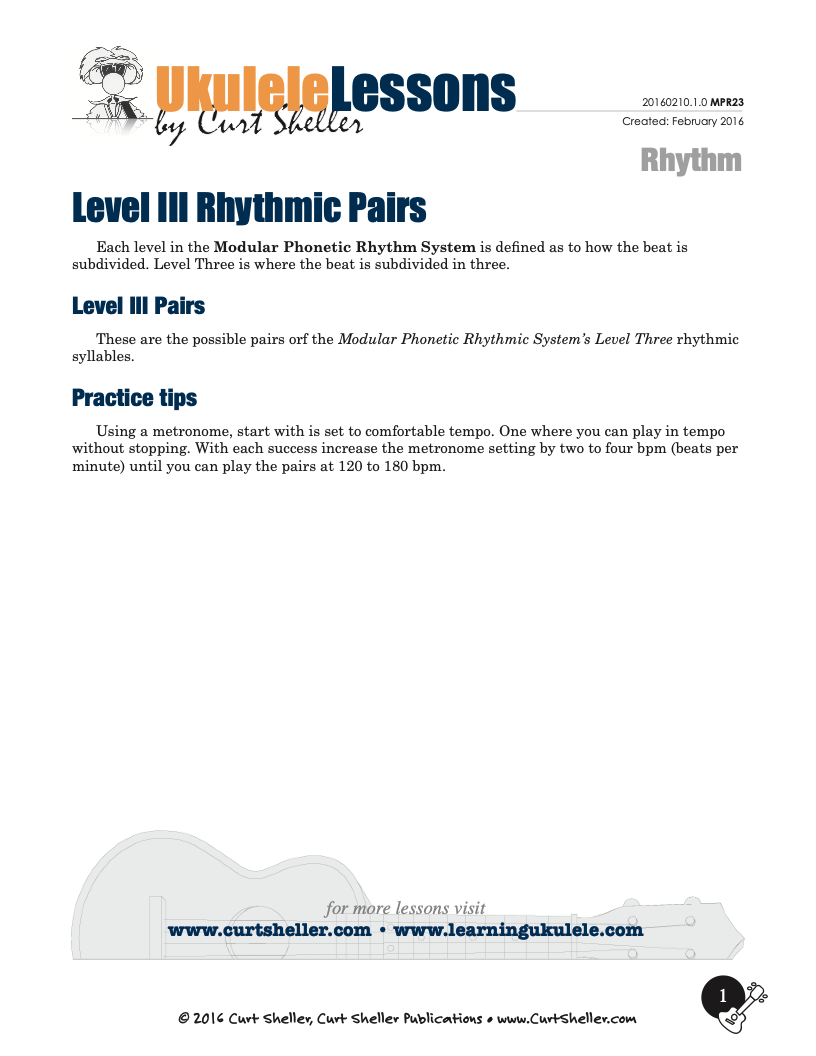
.jpg)